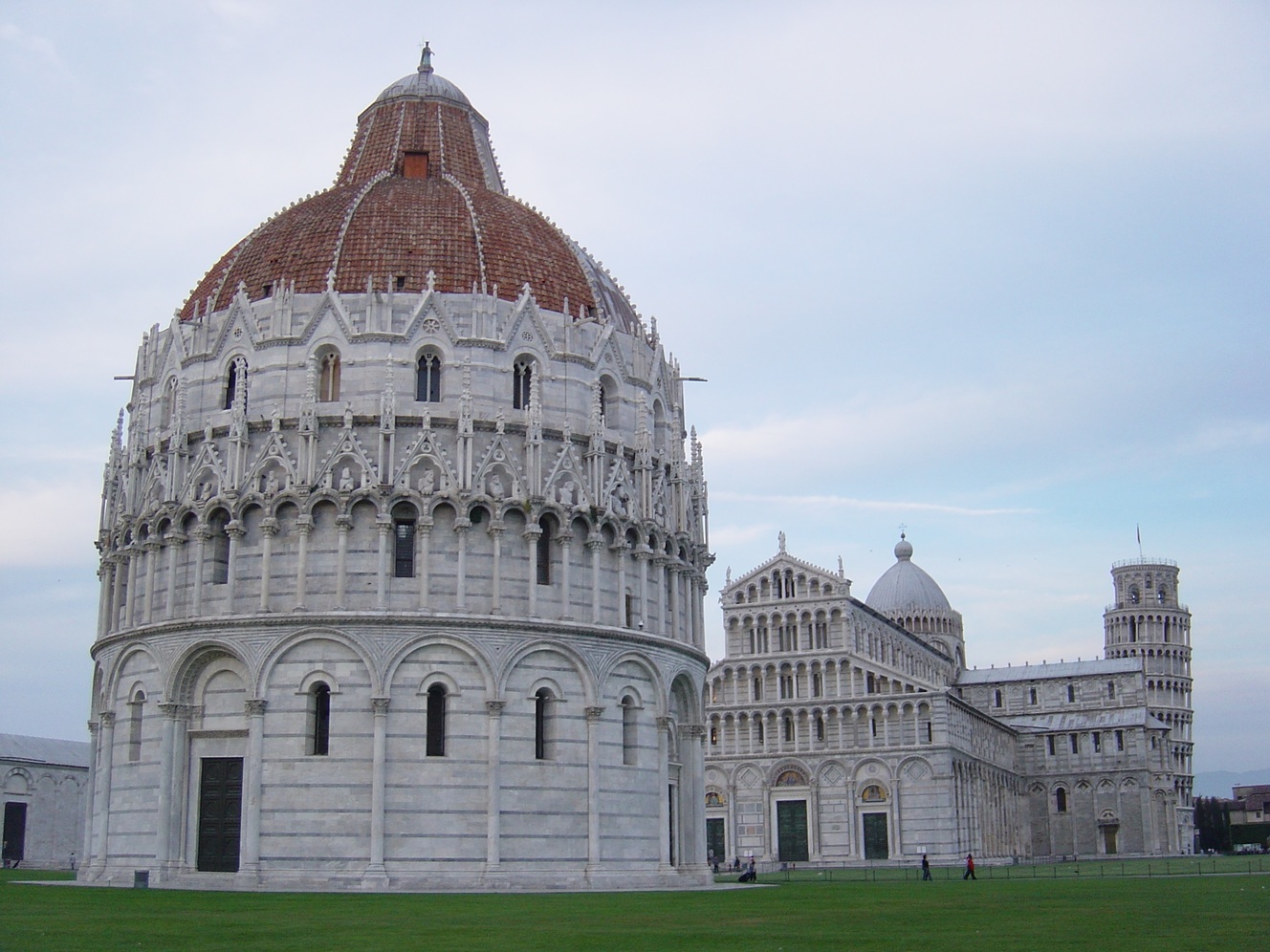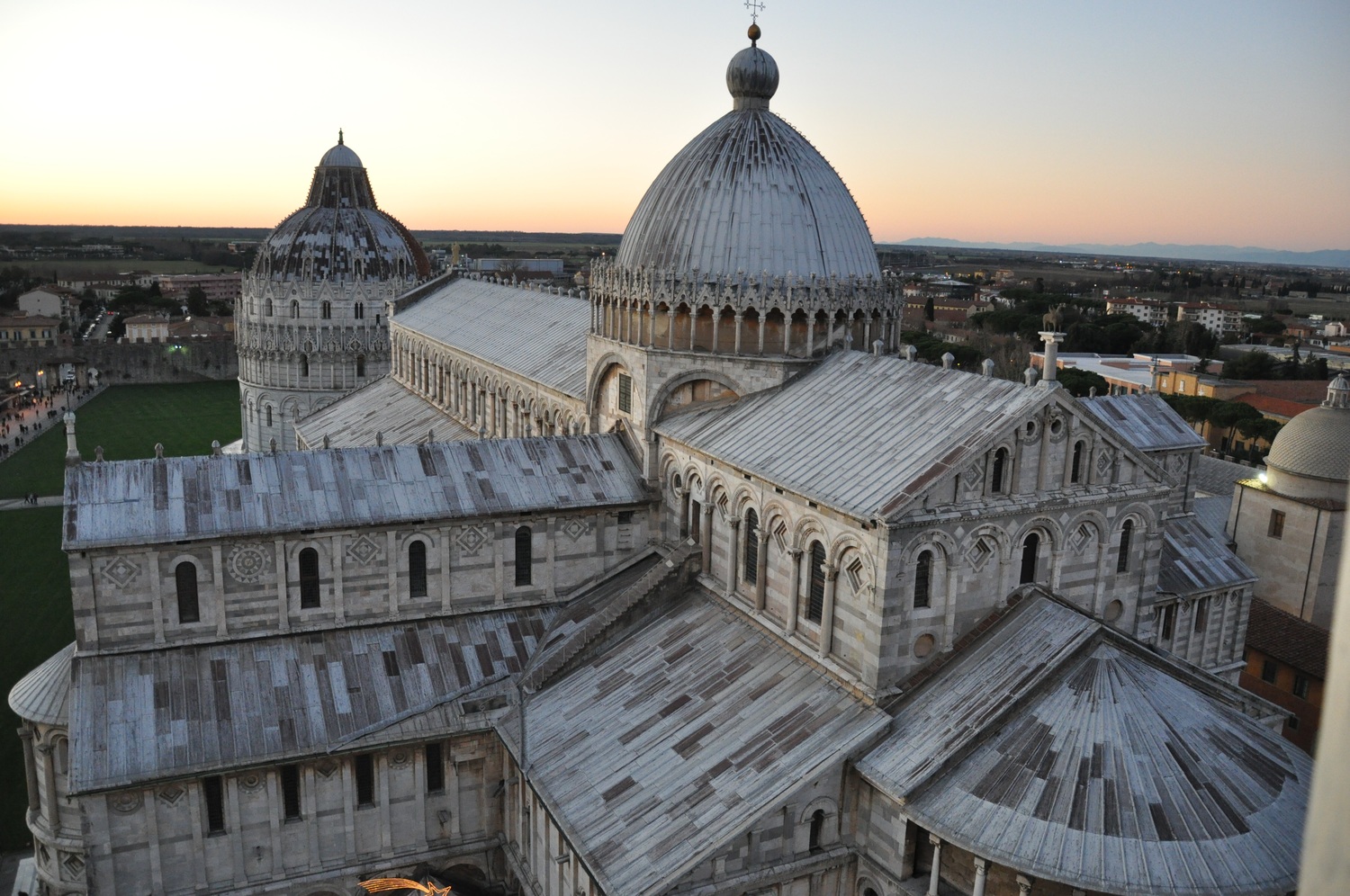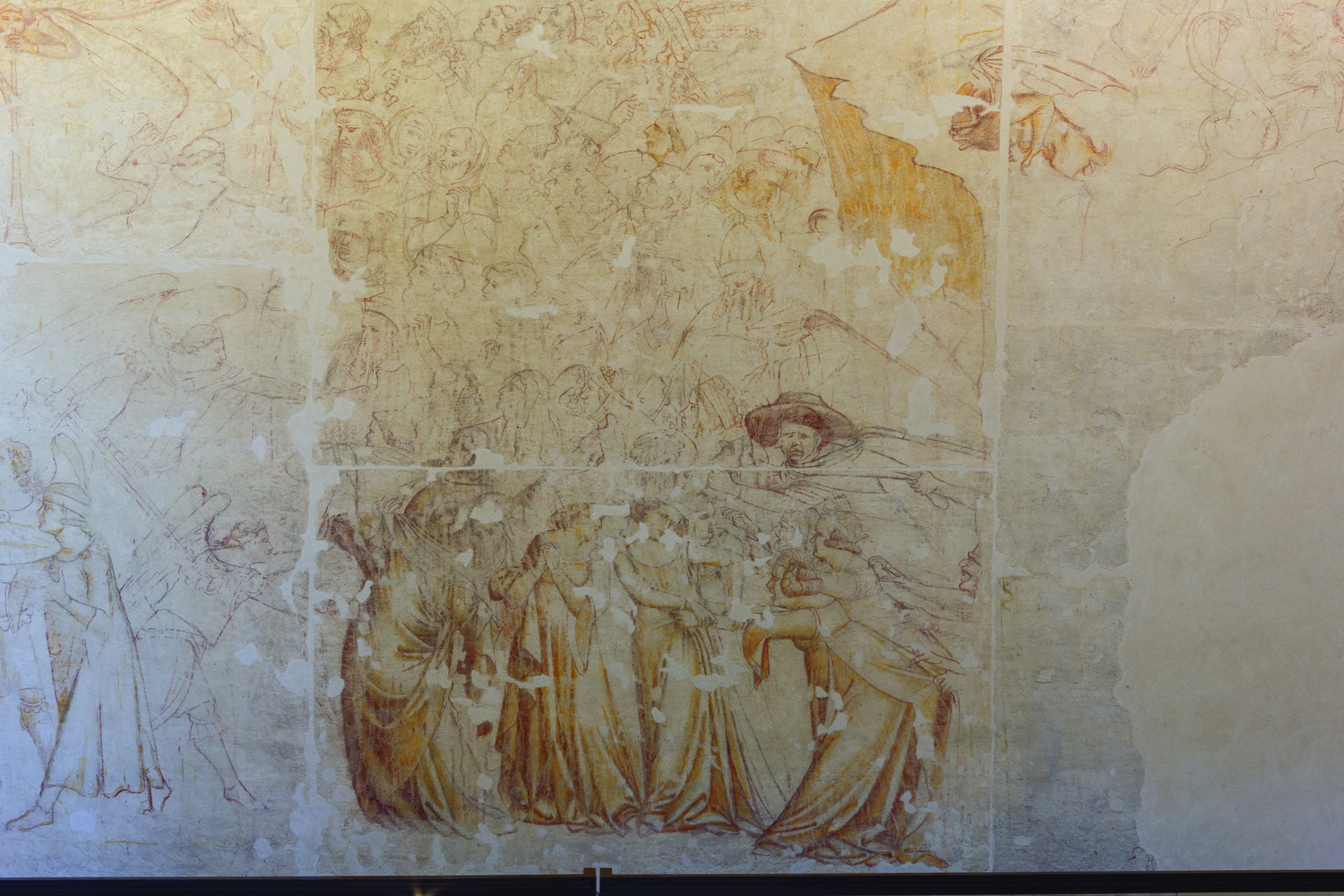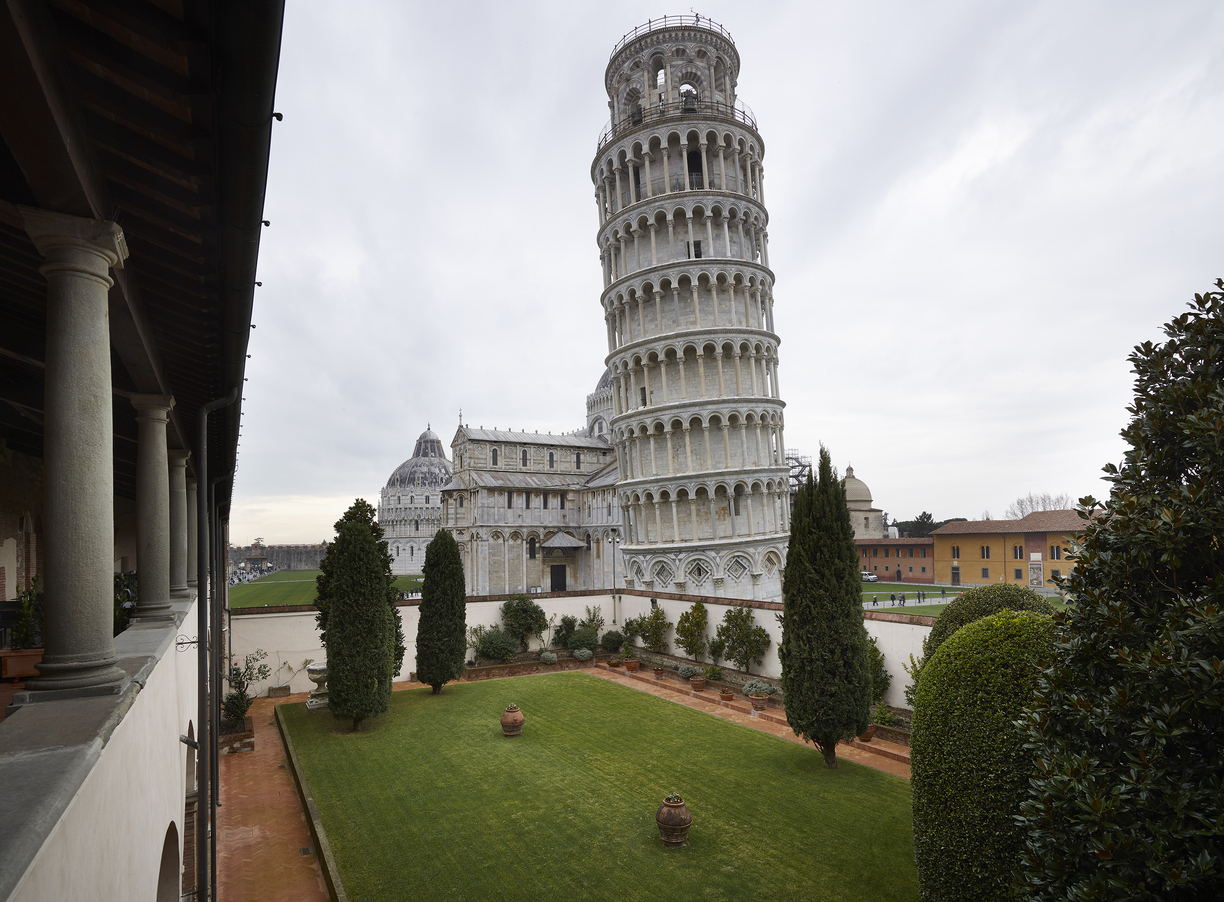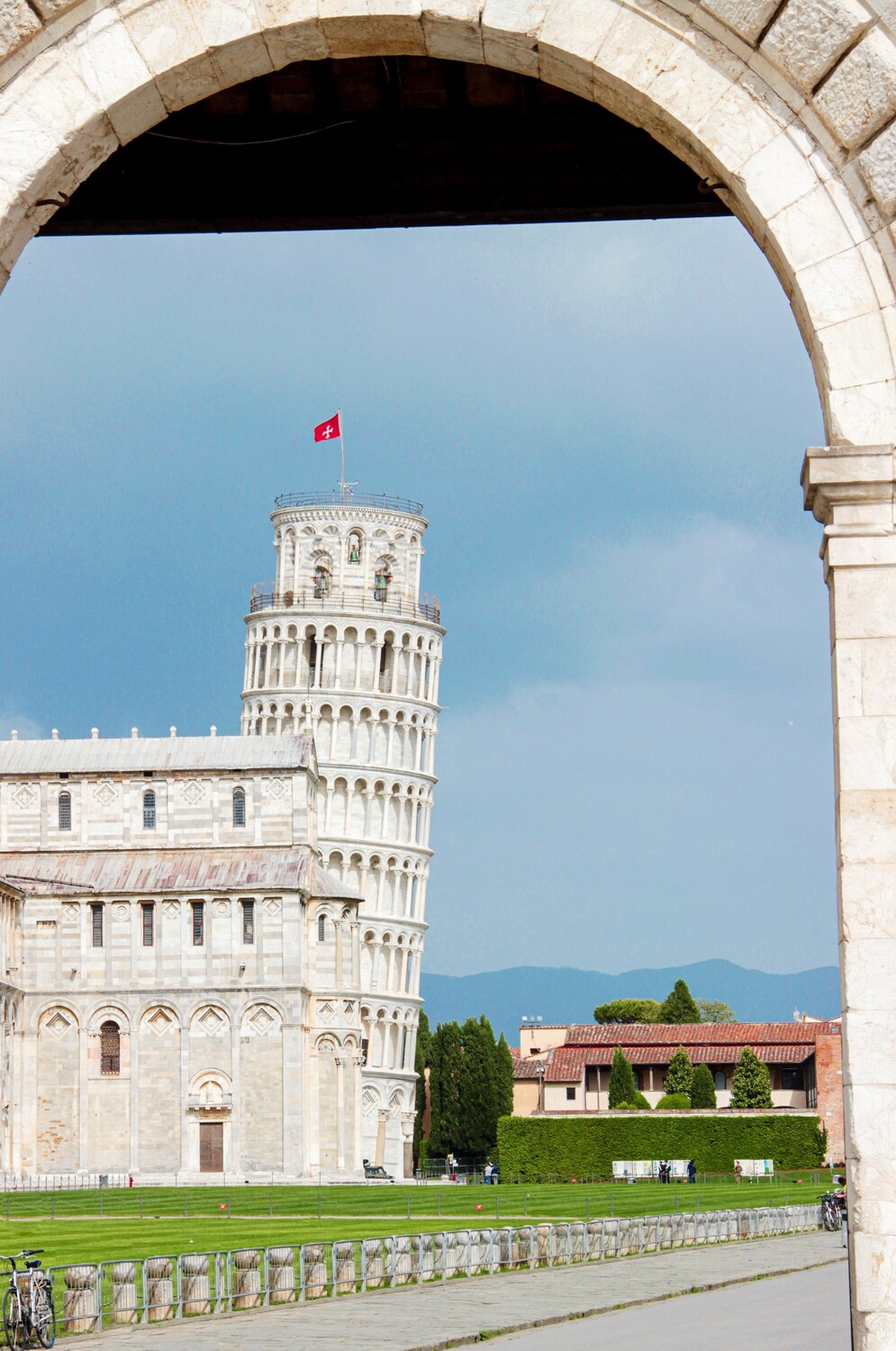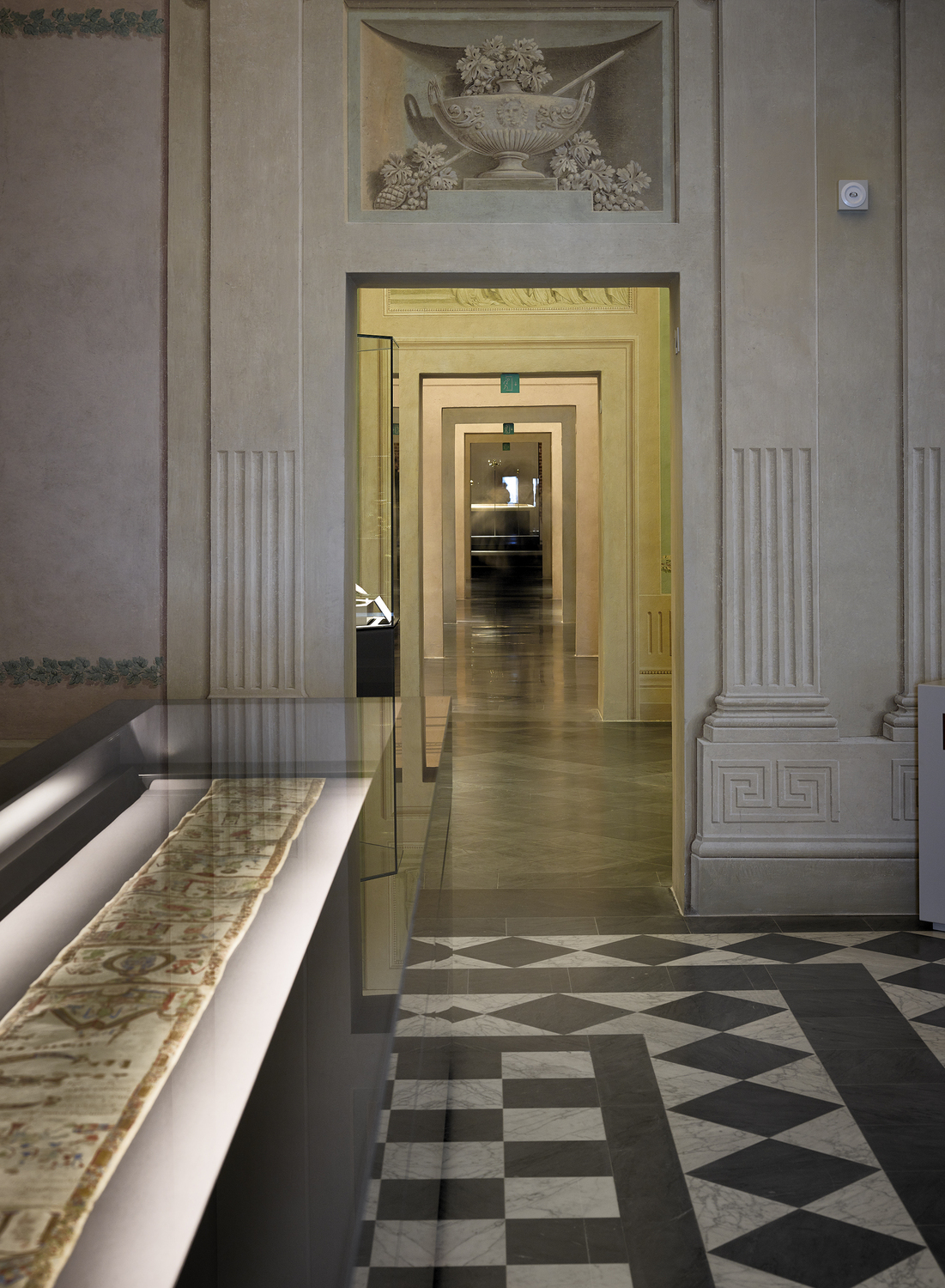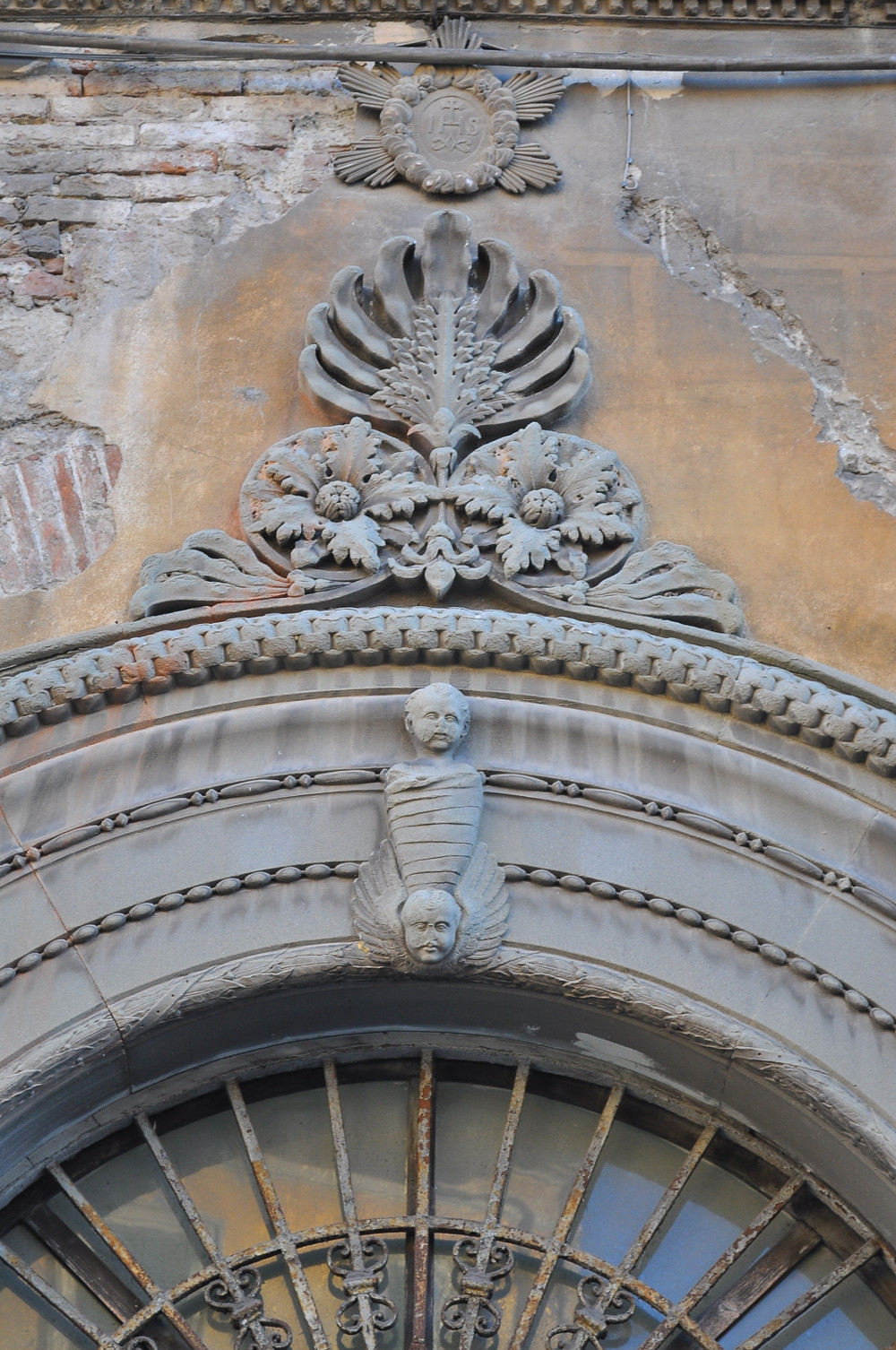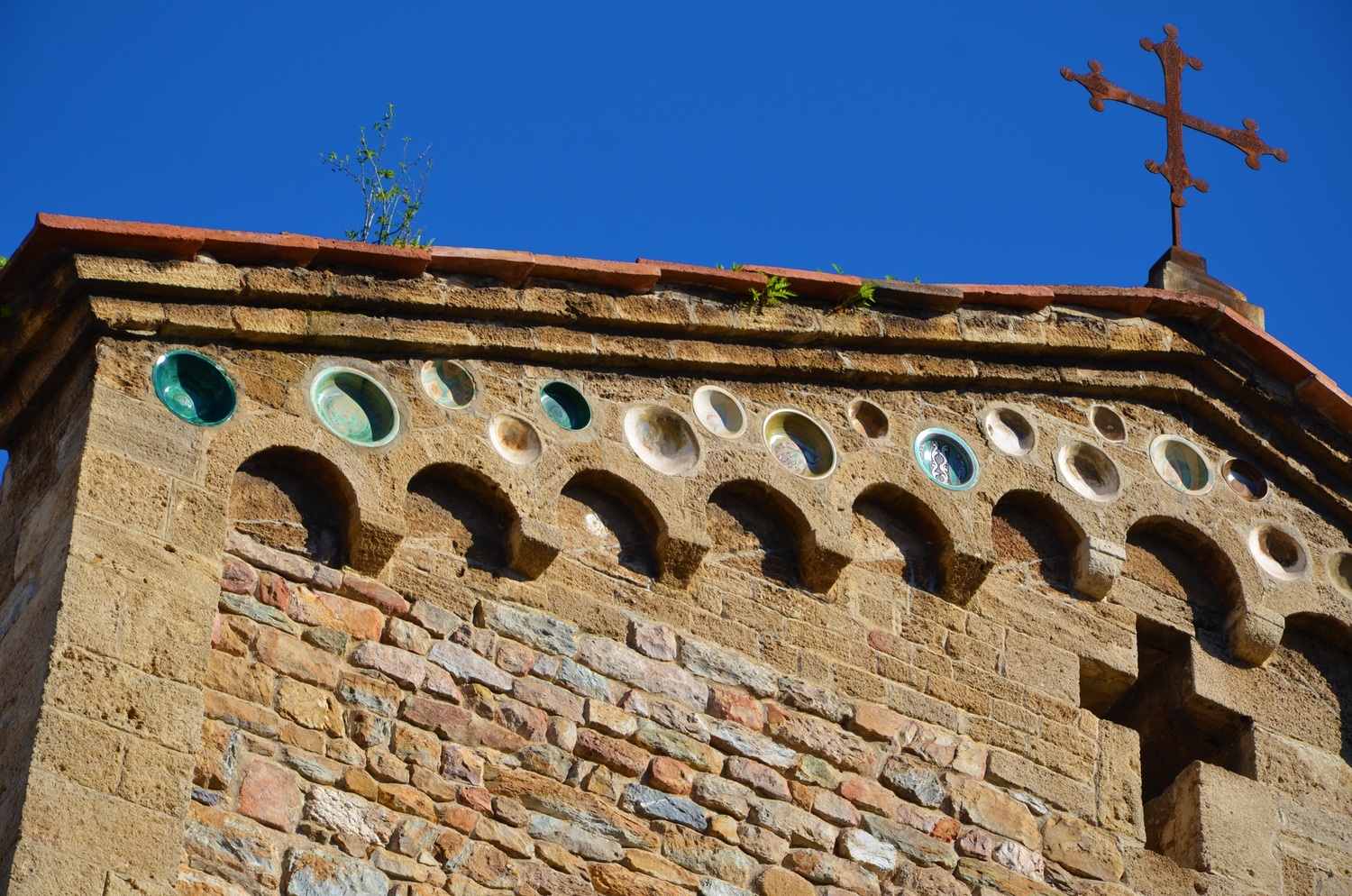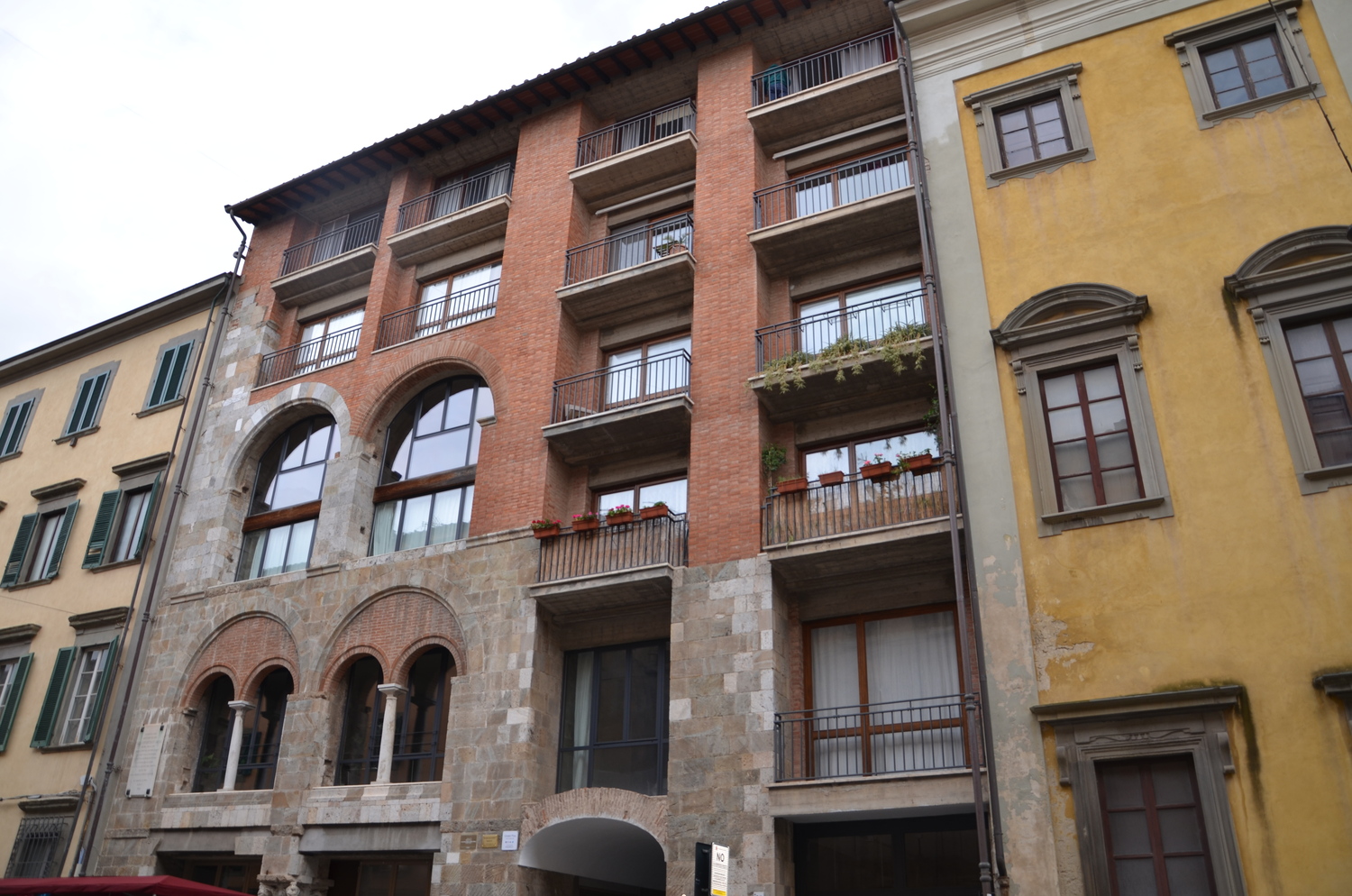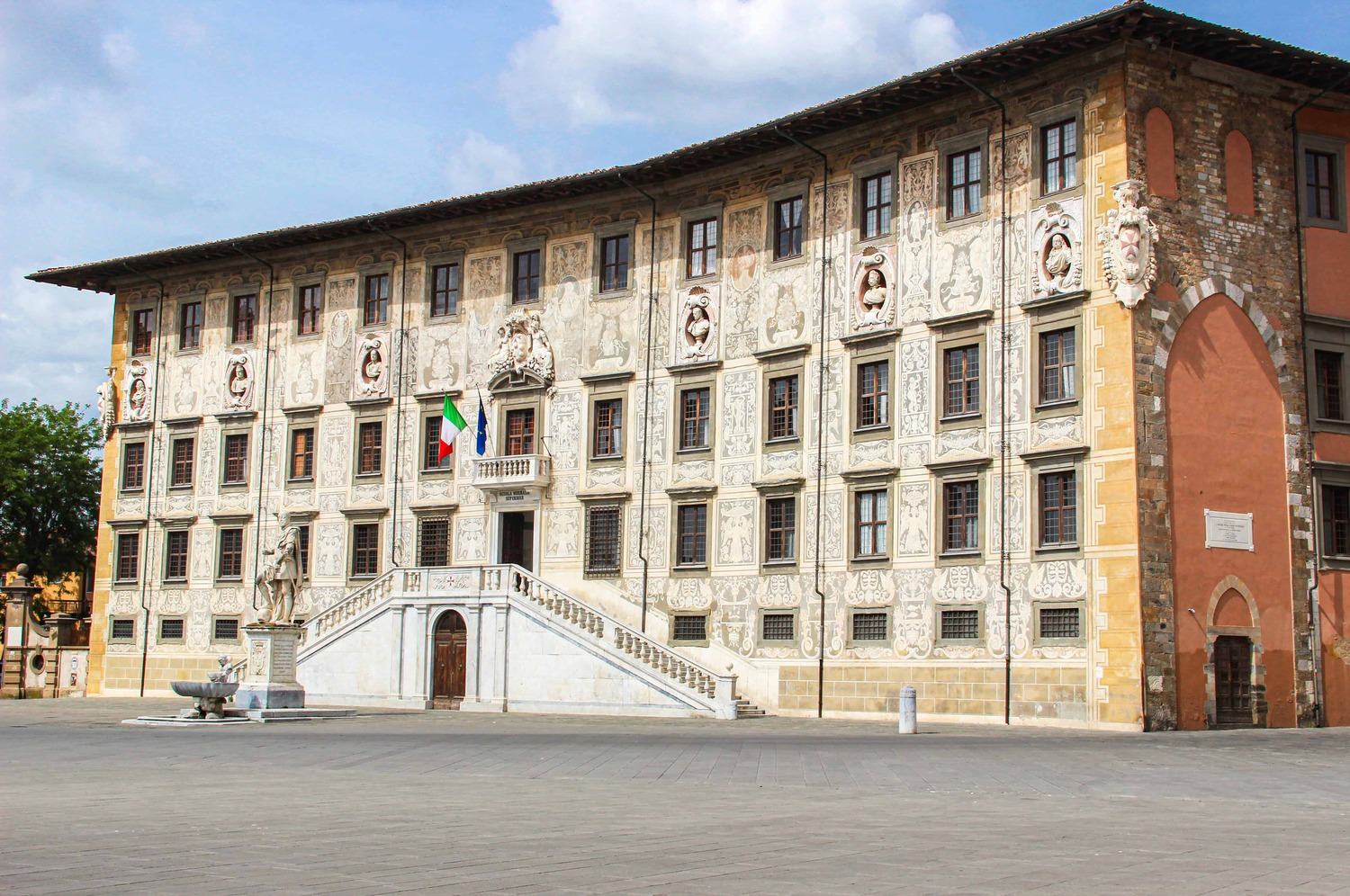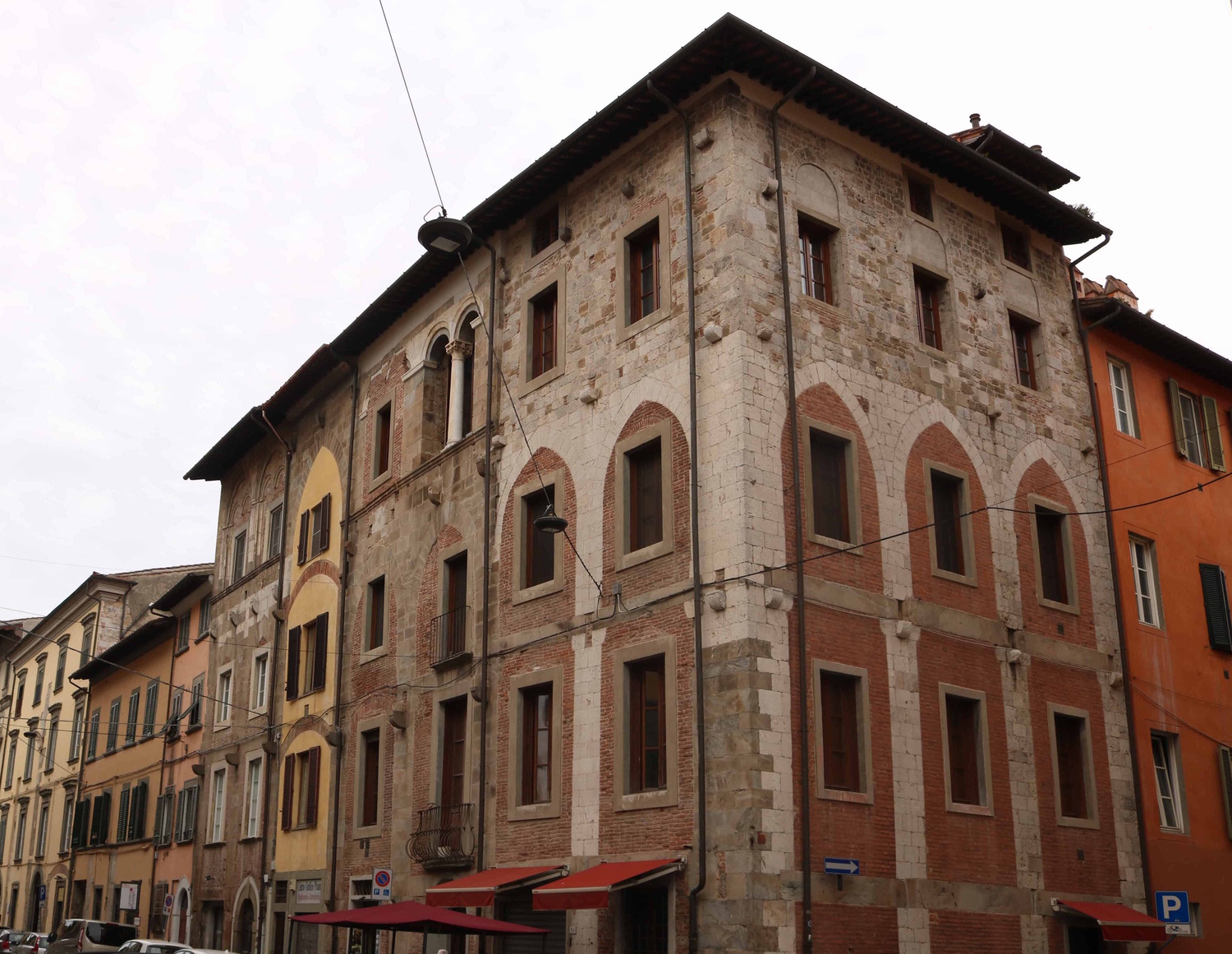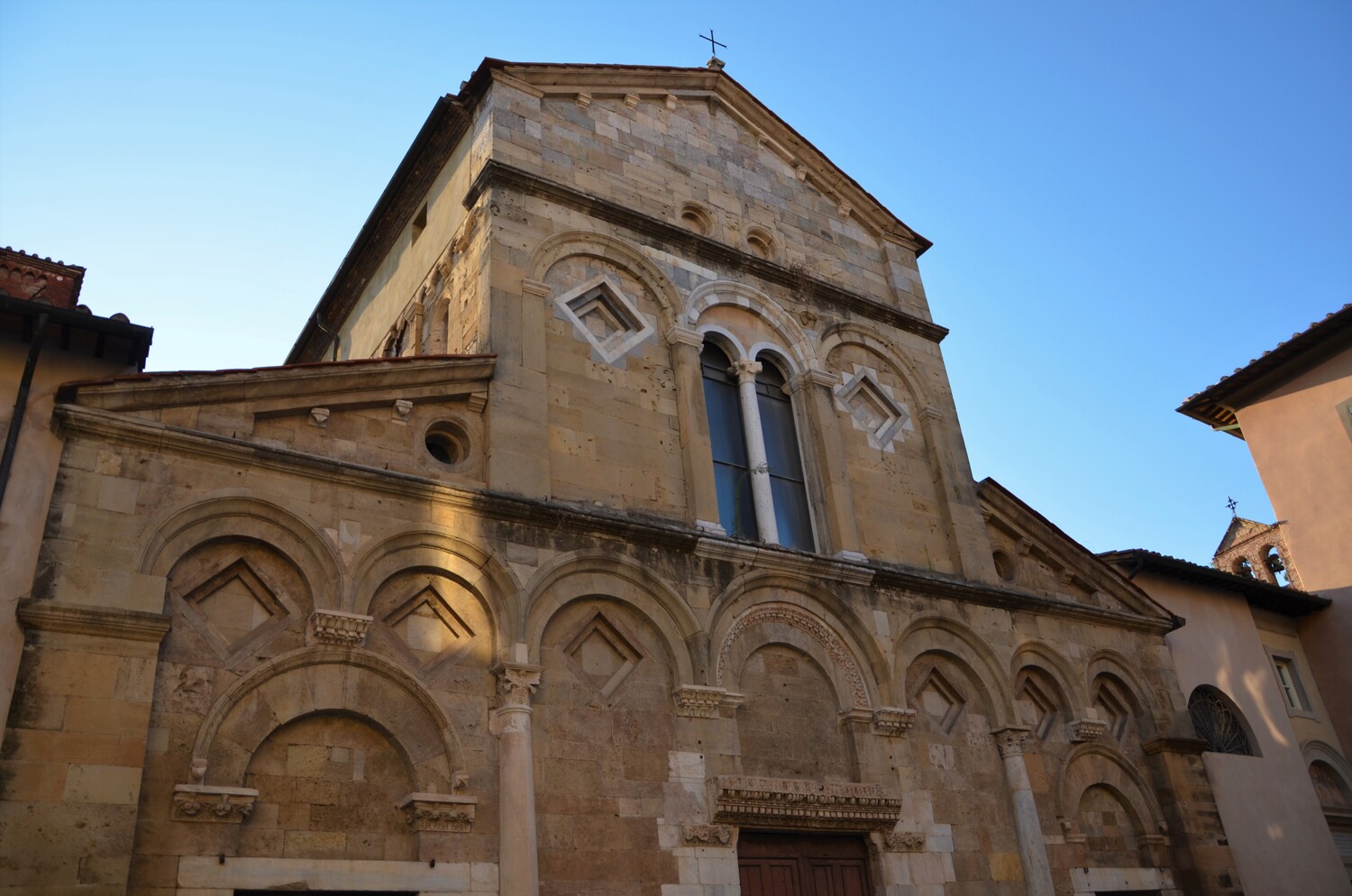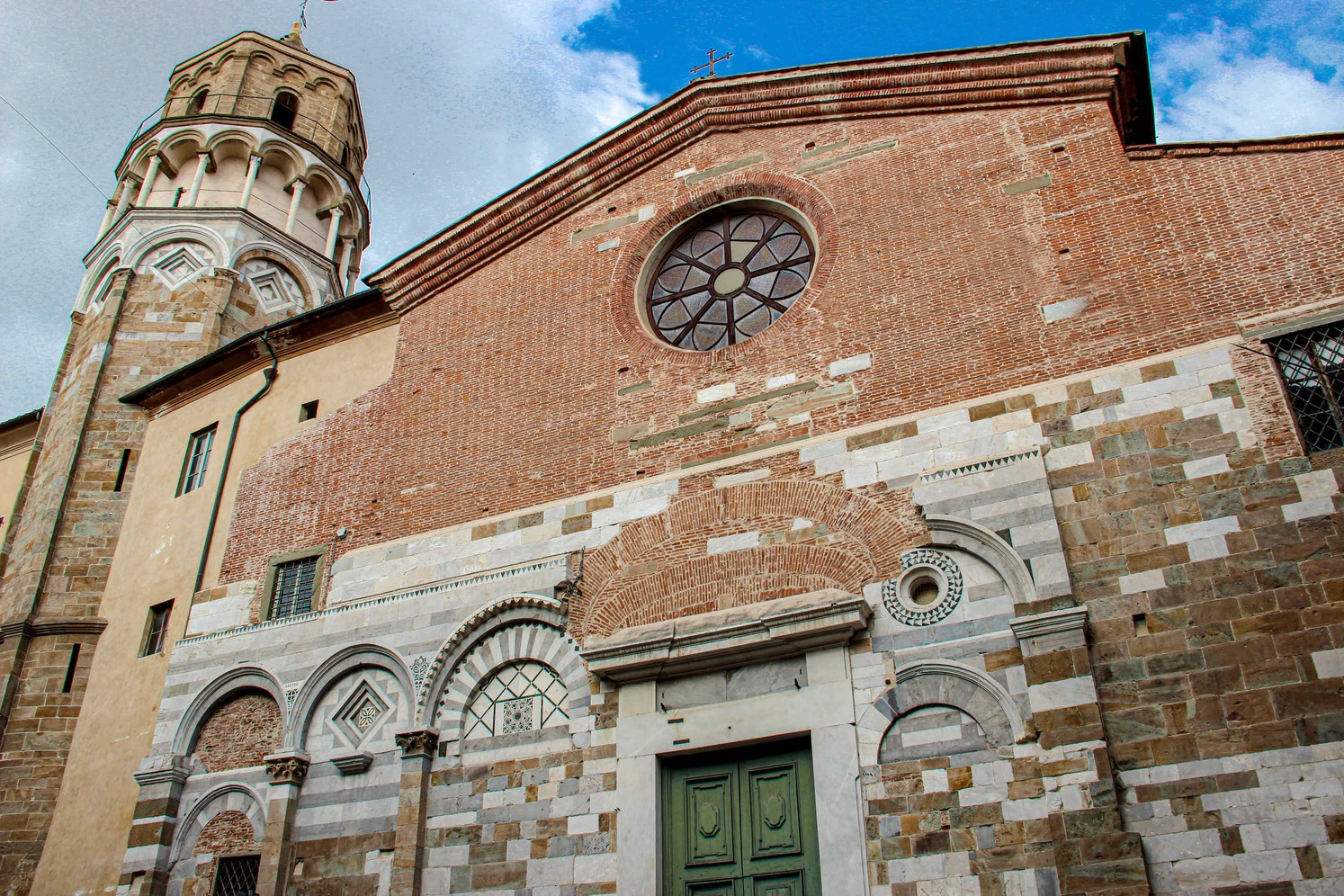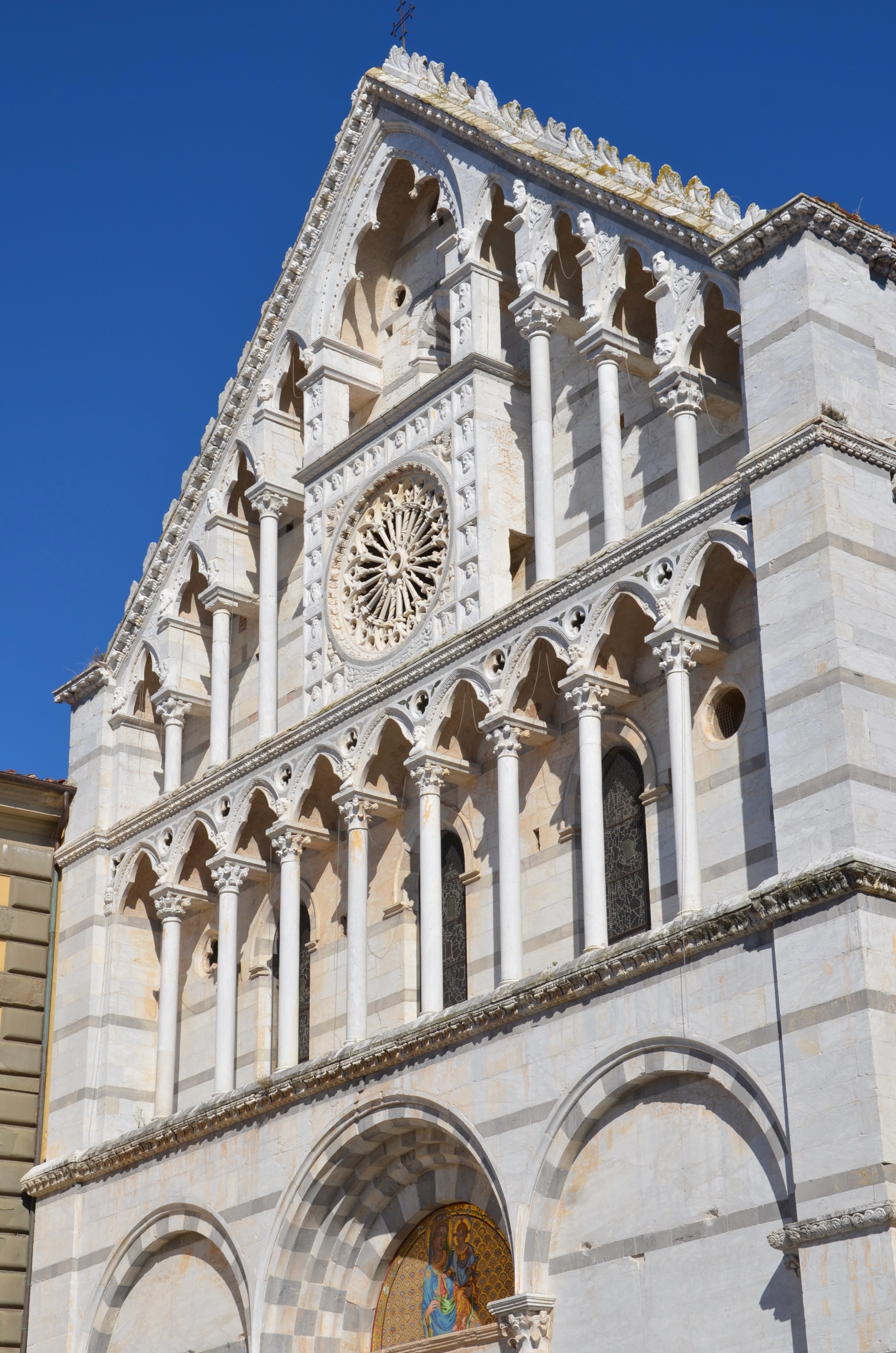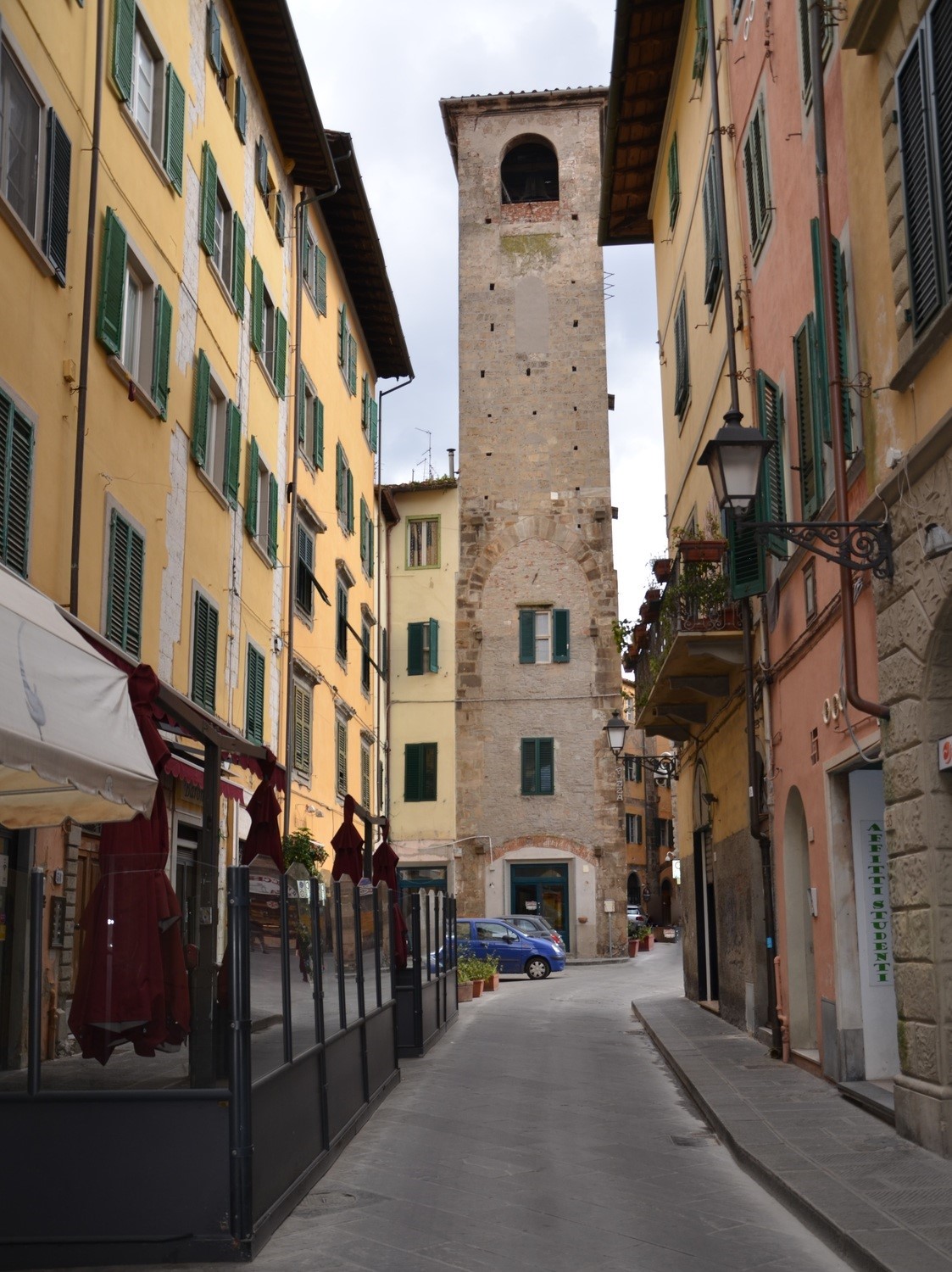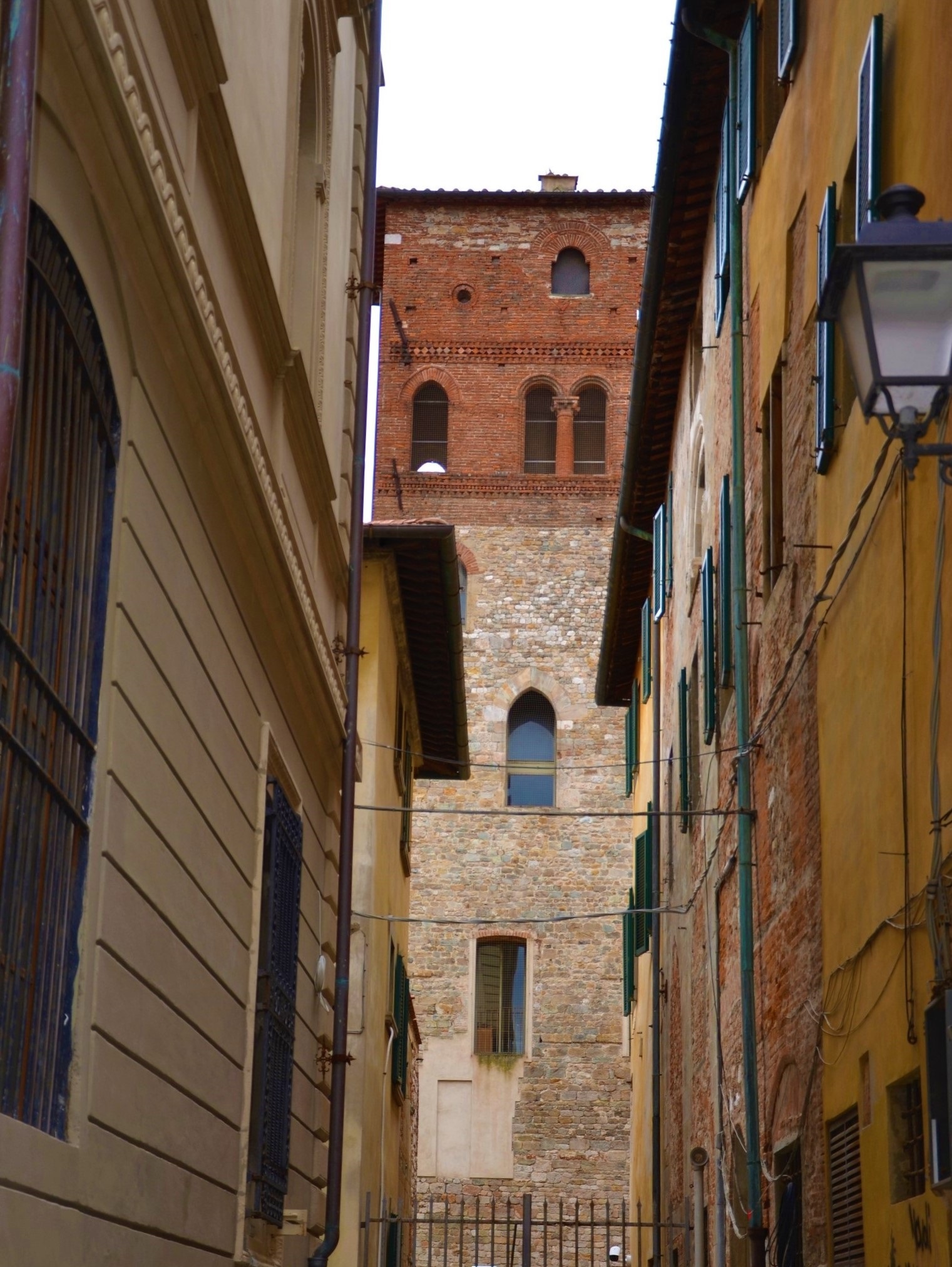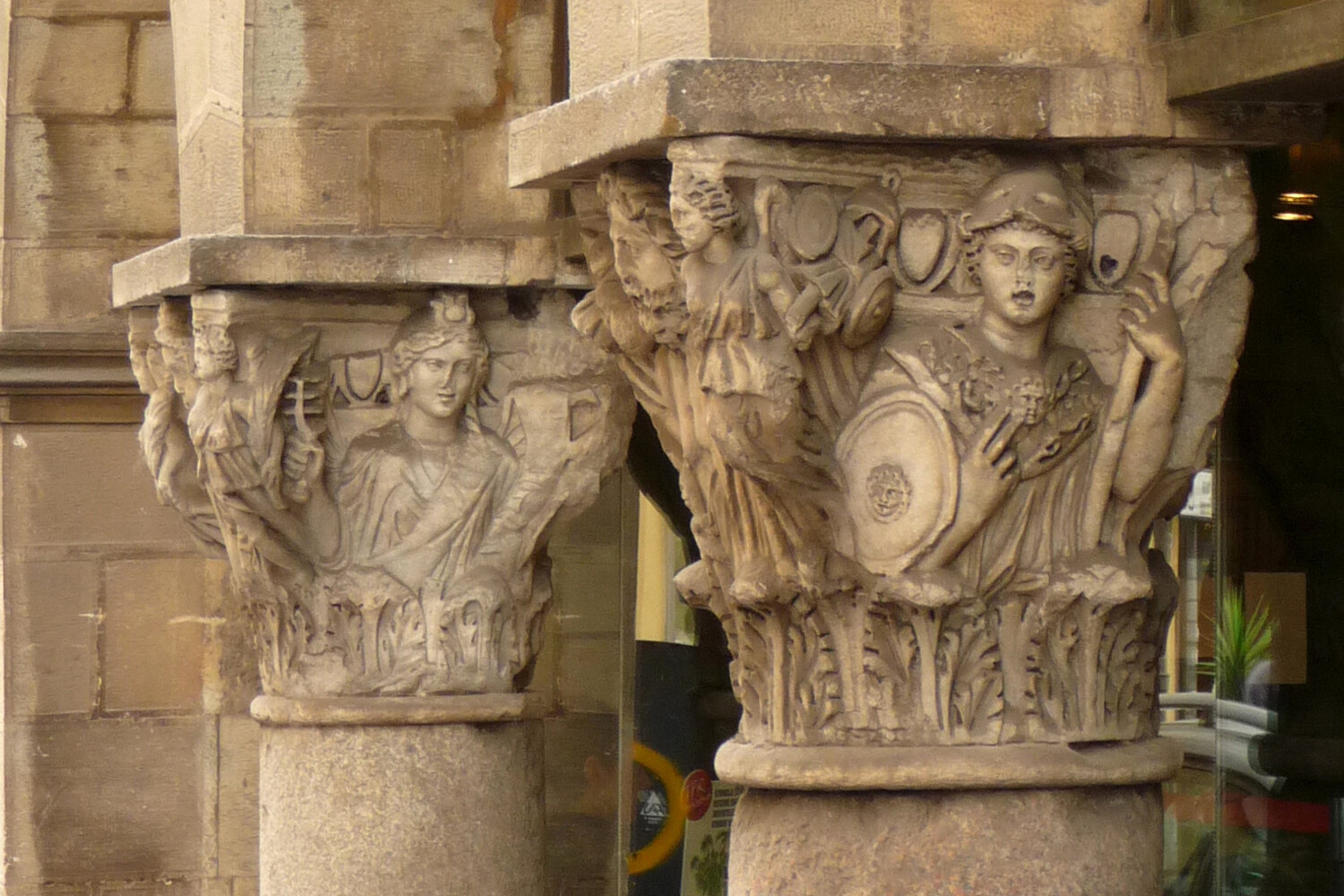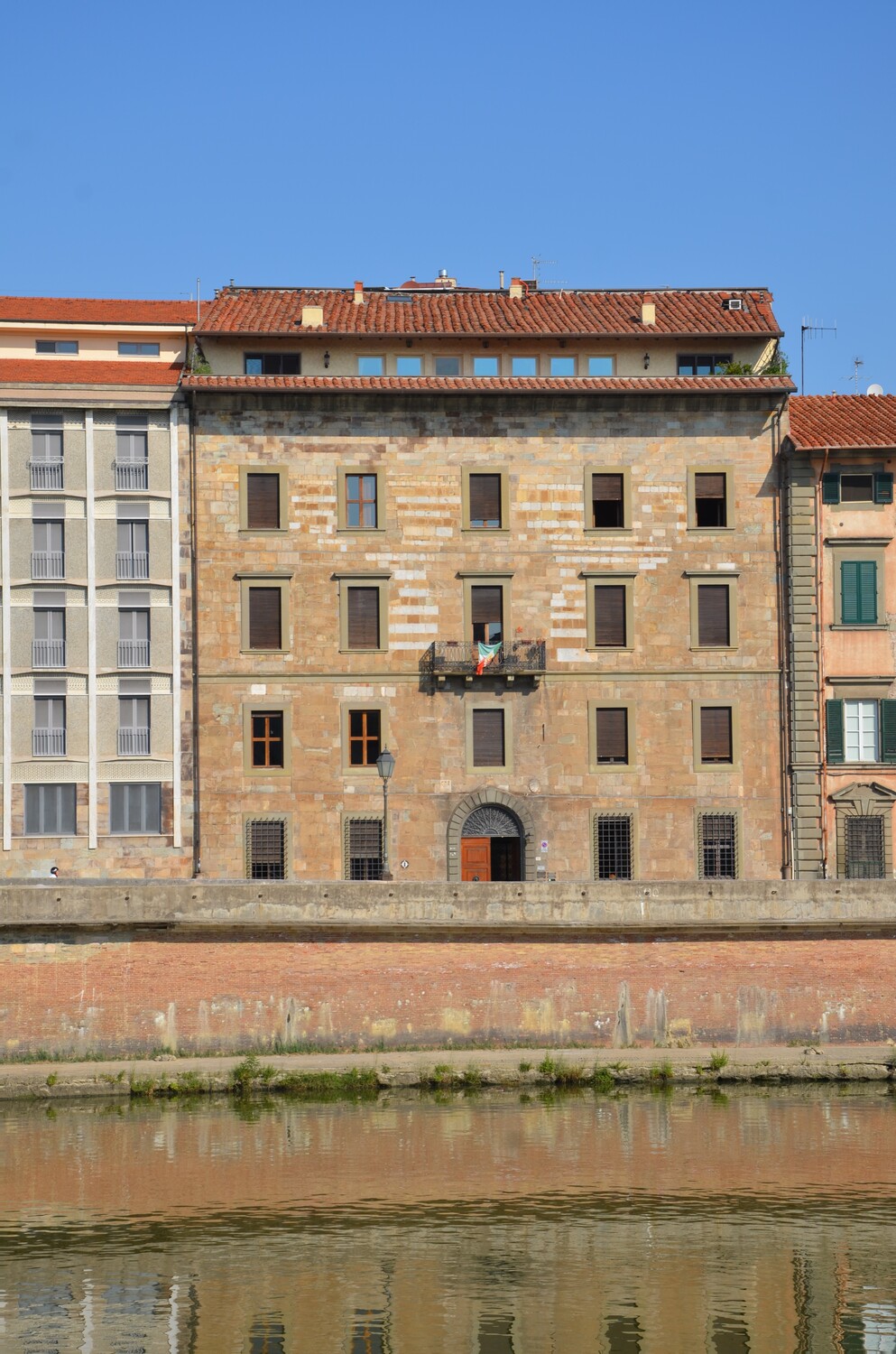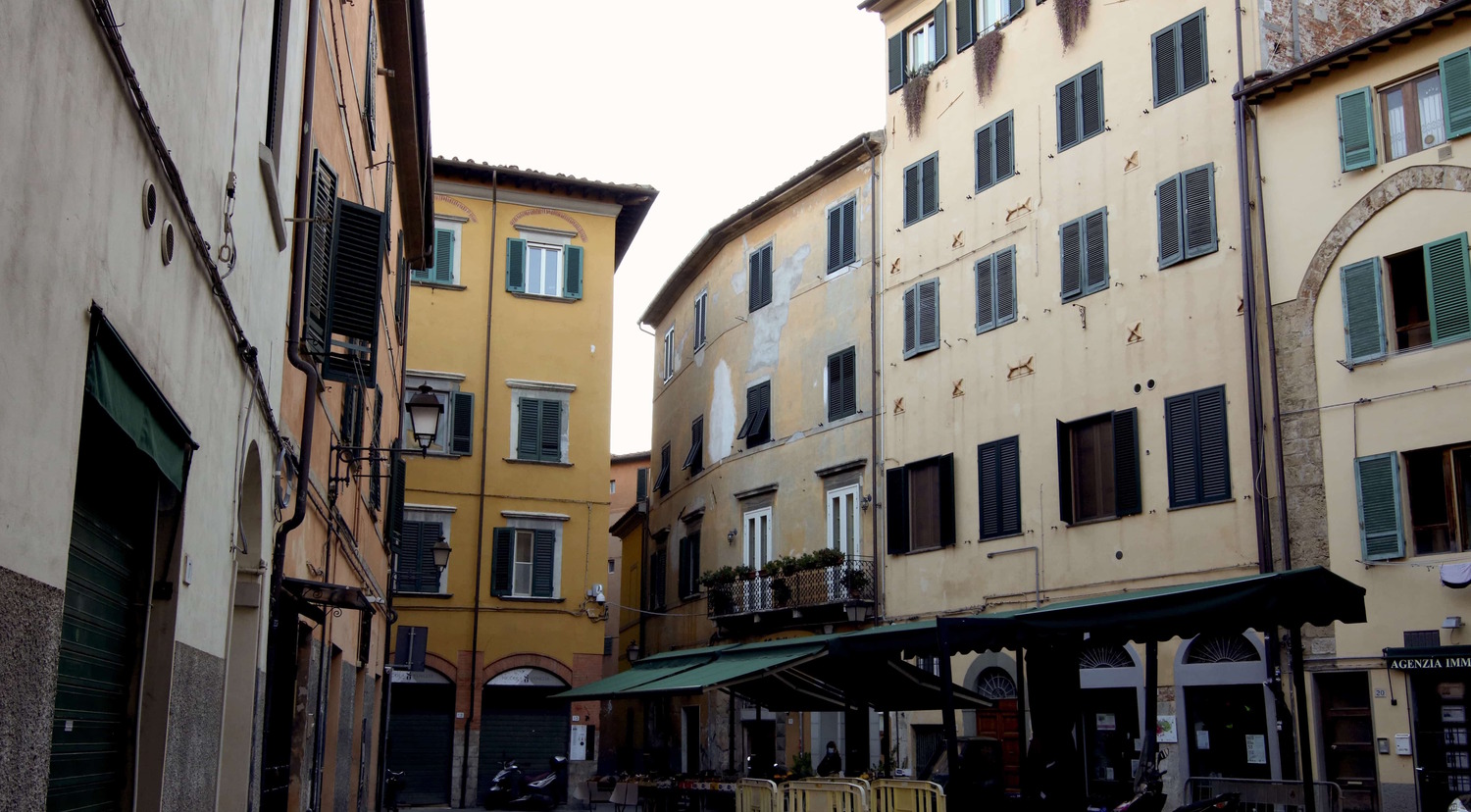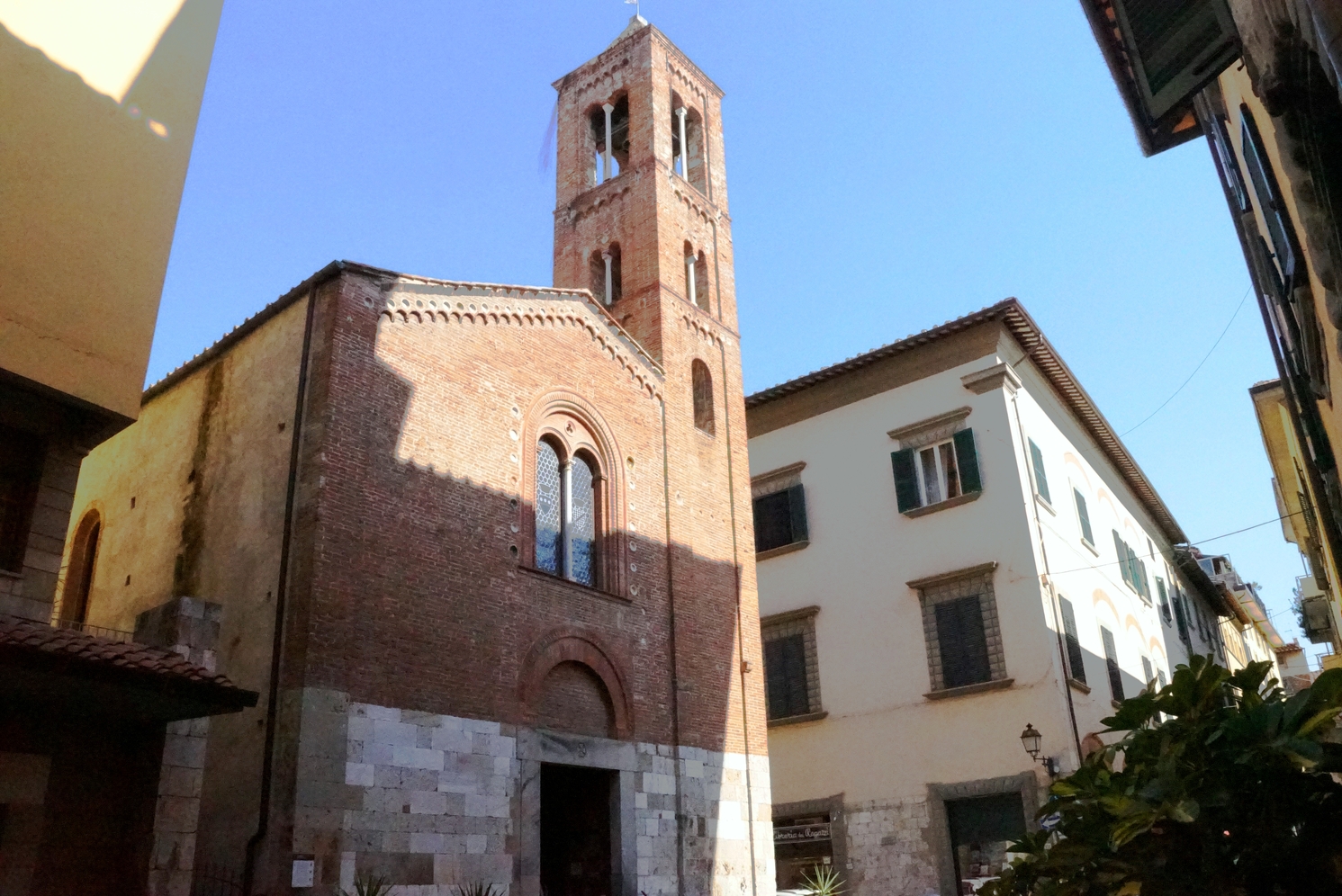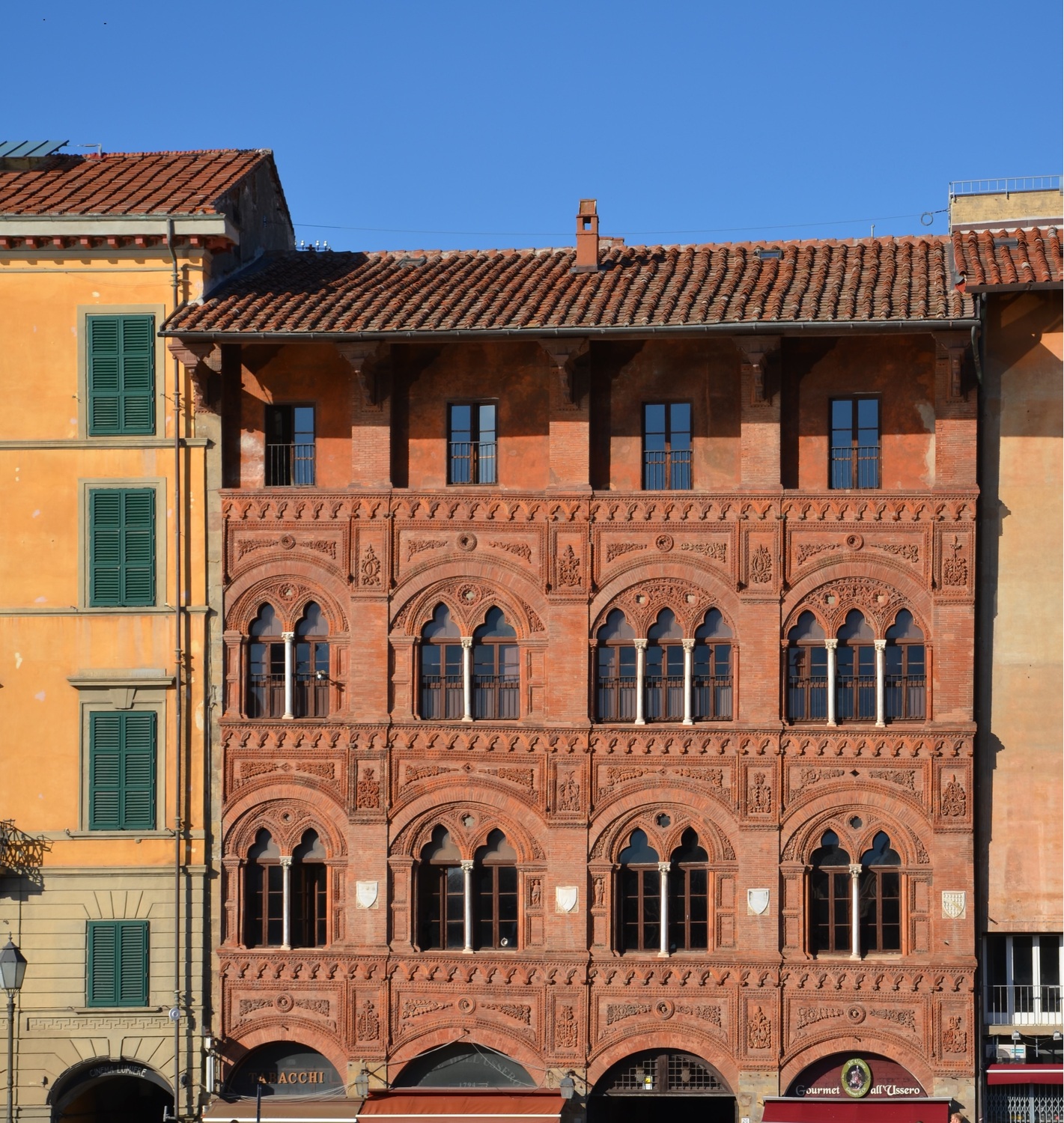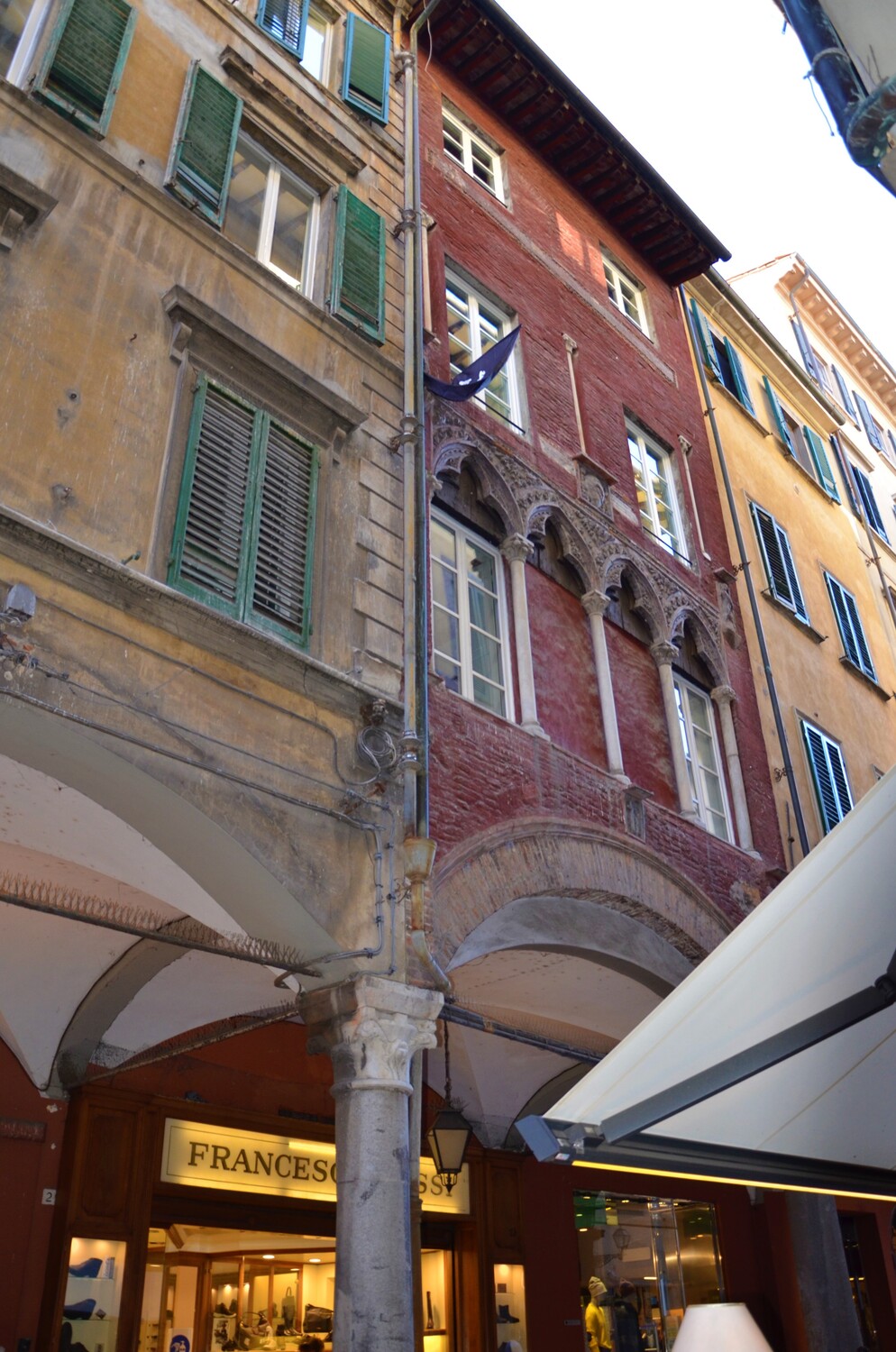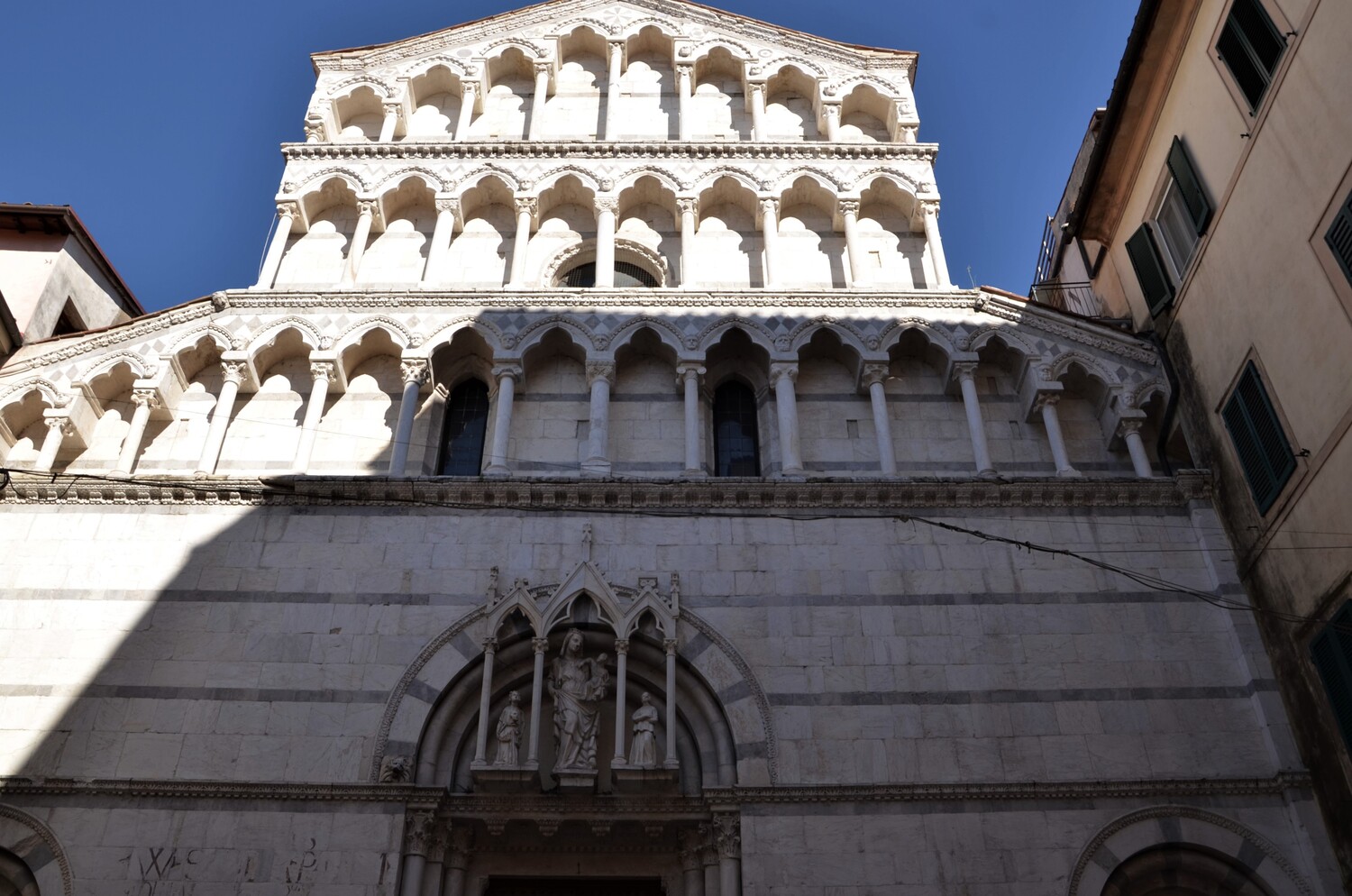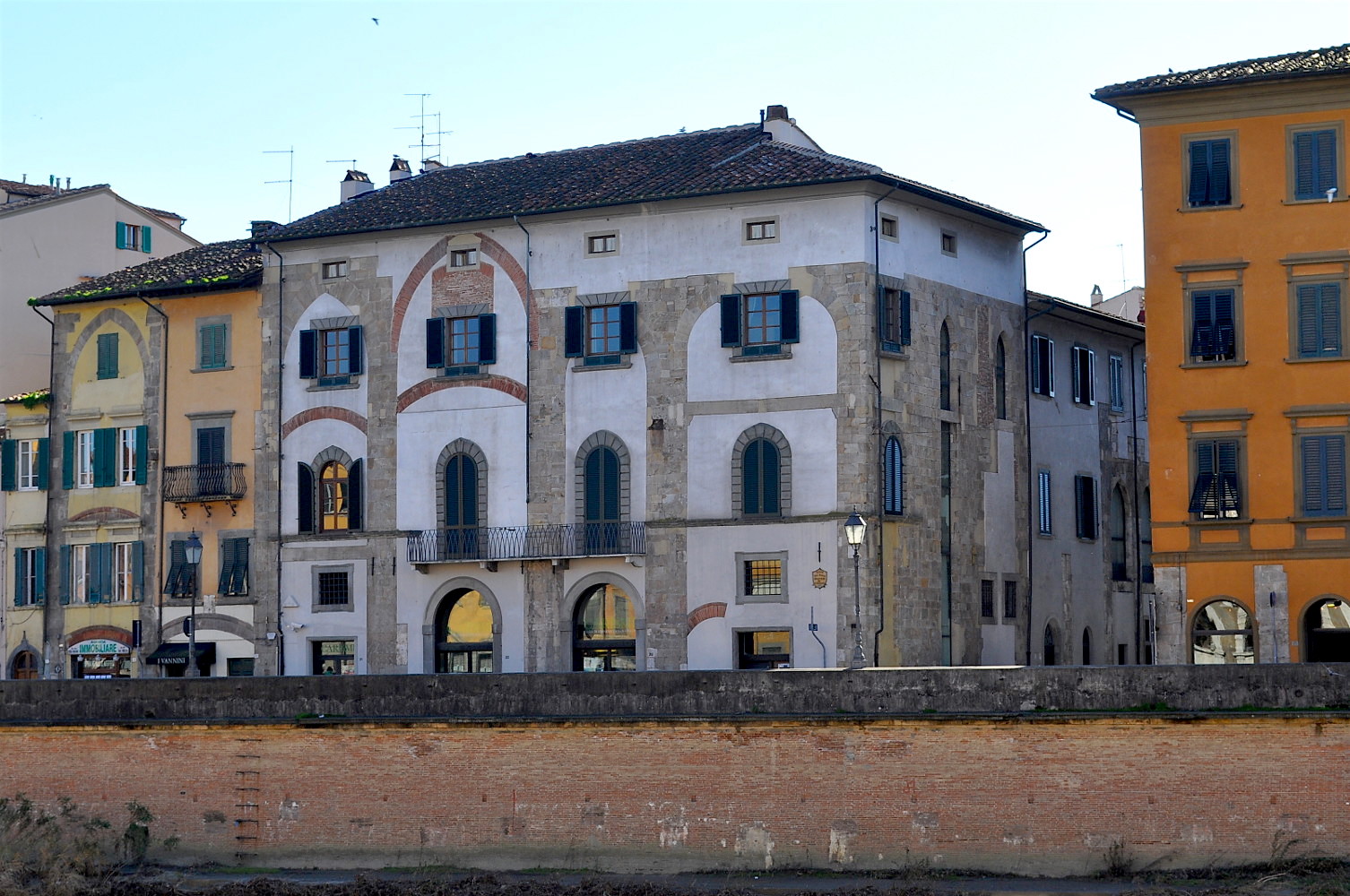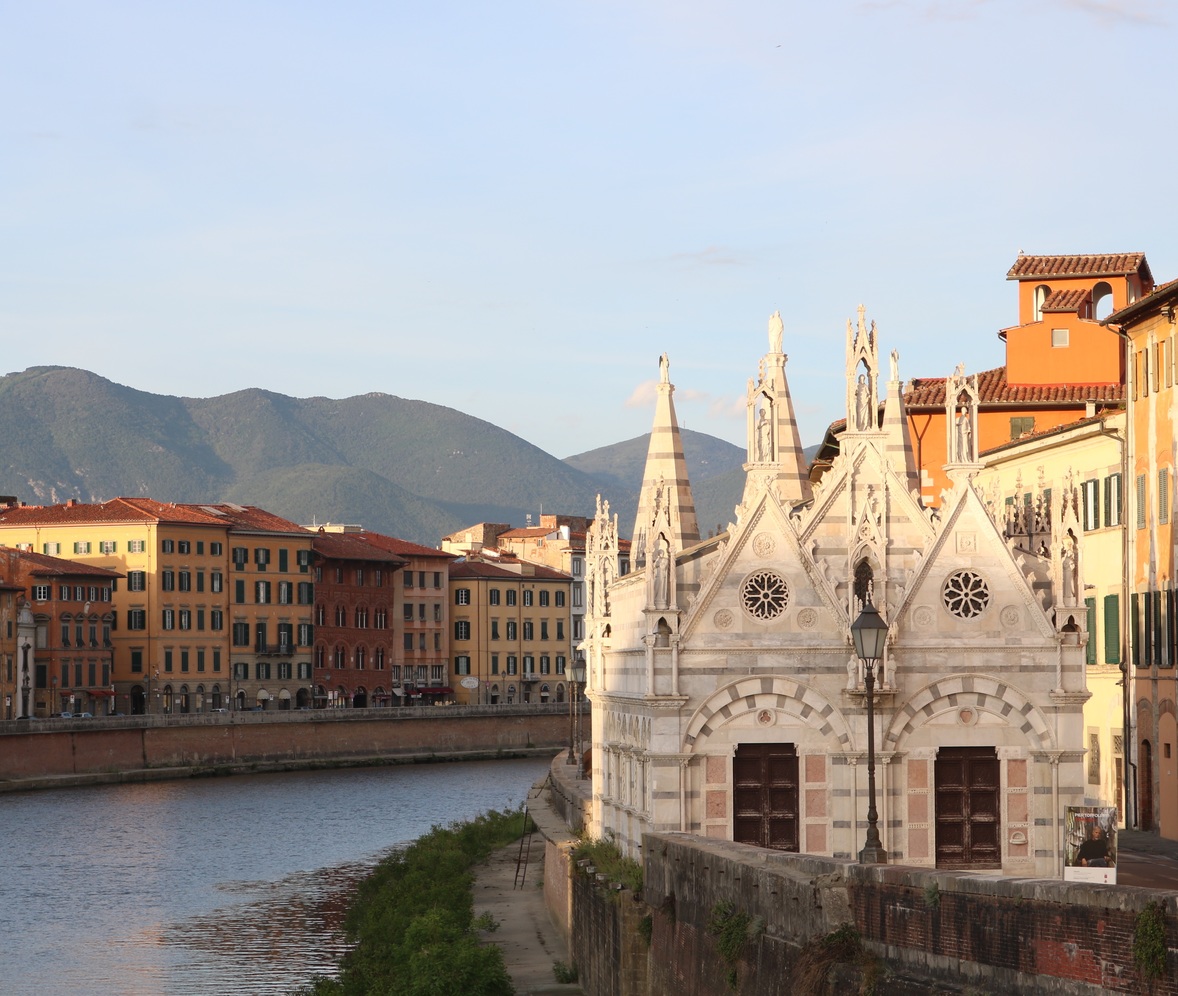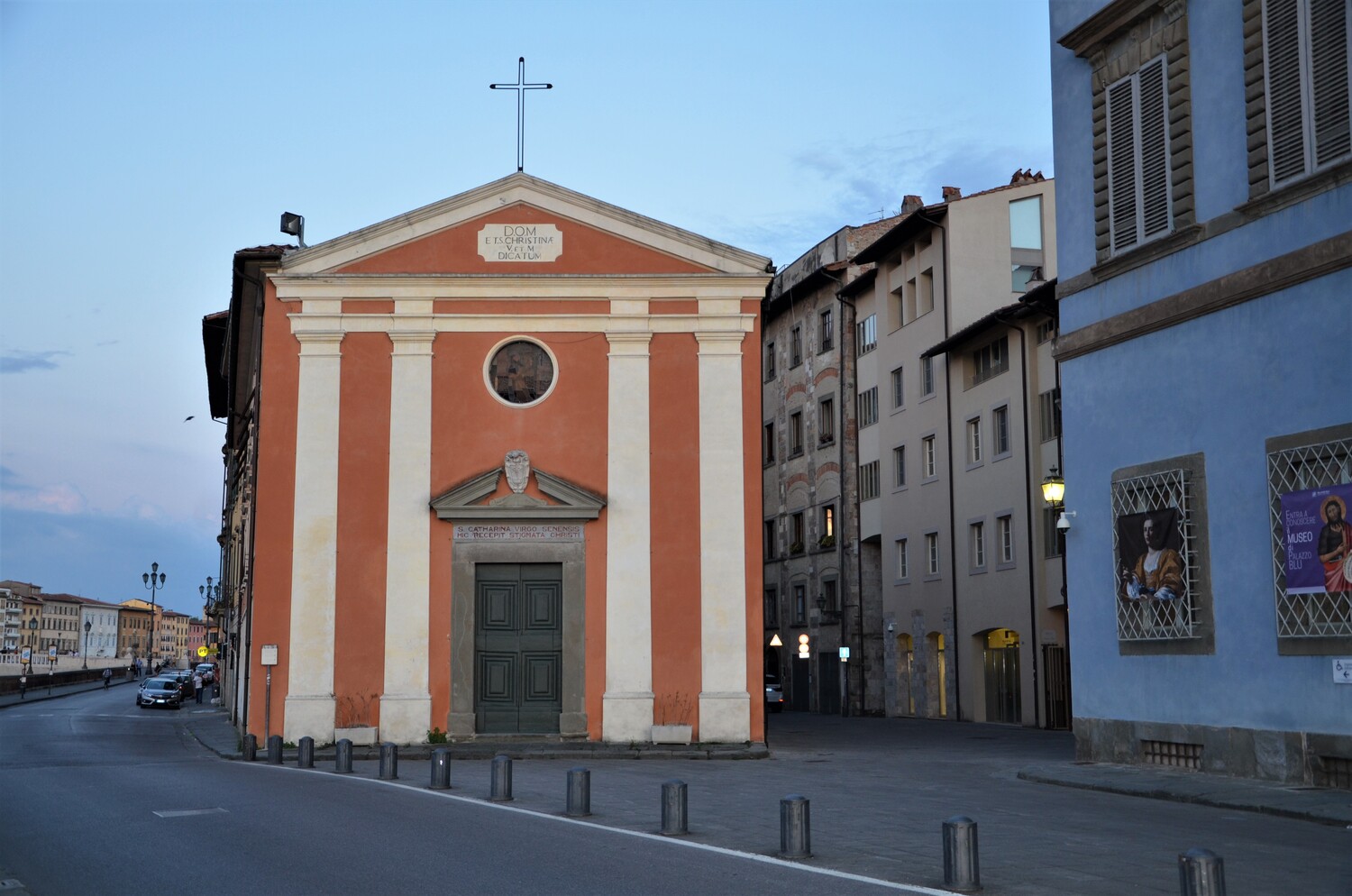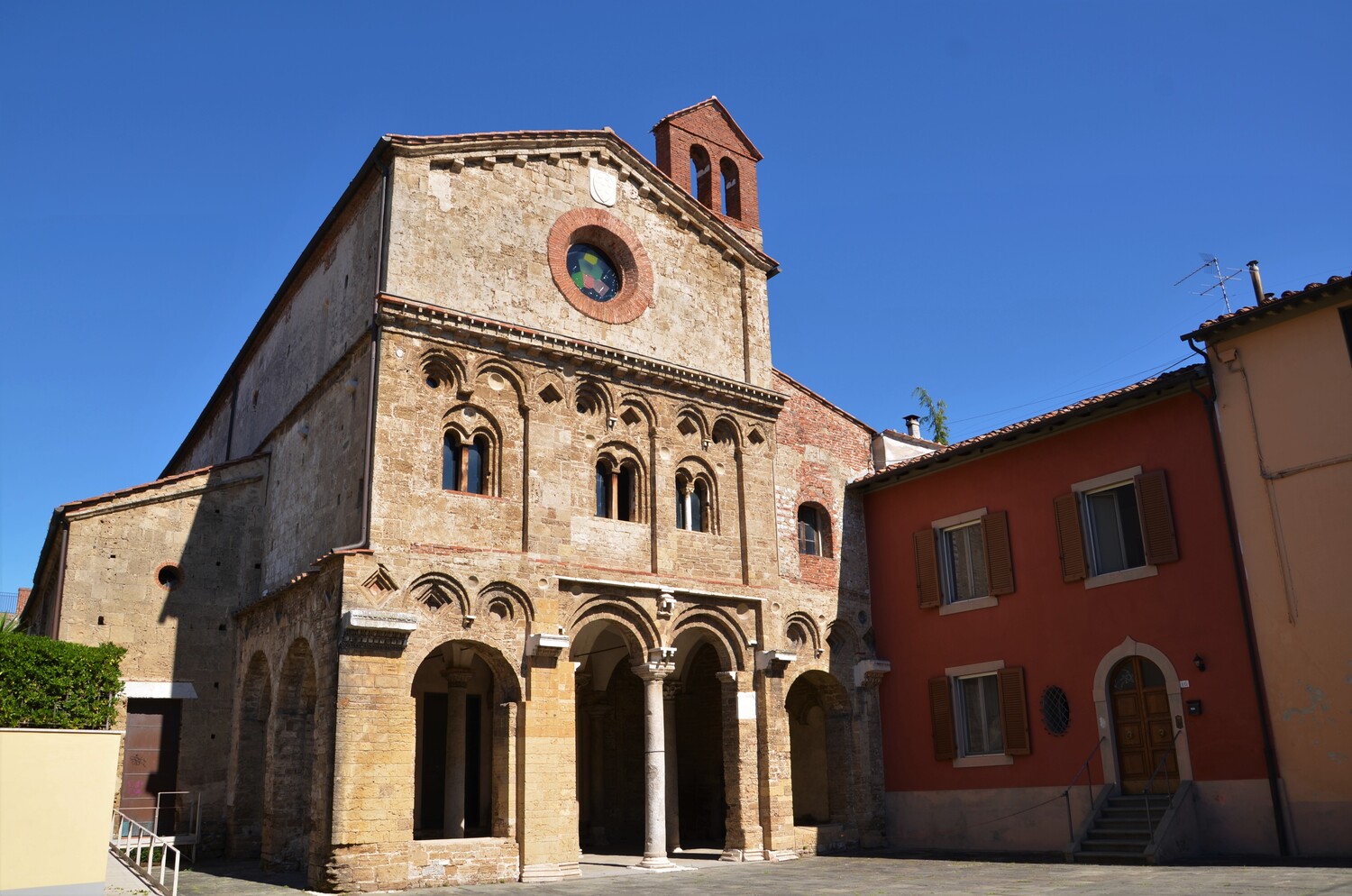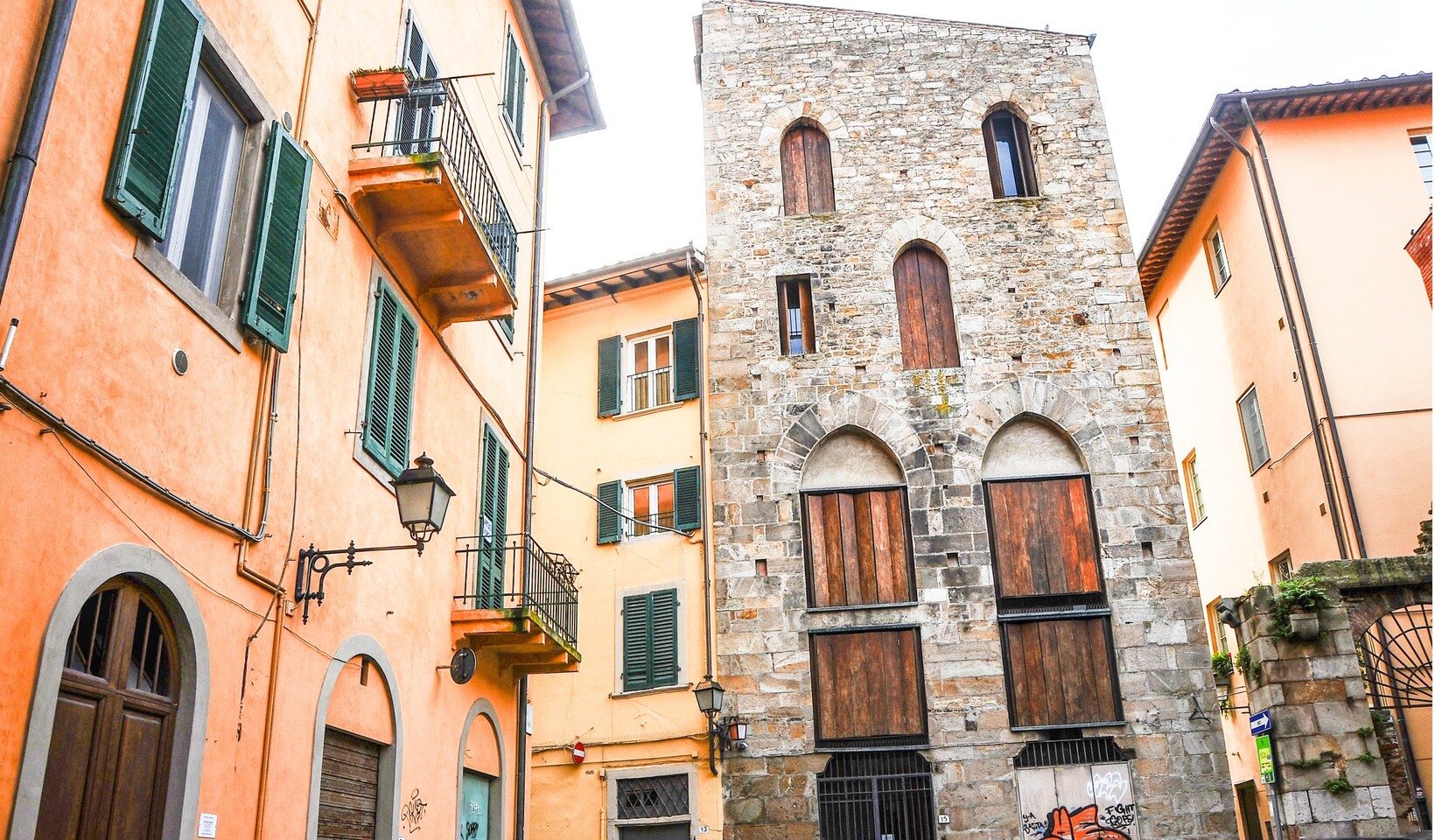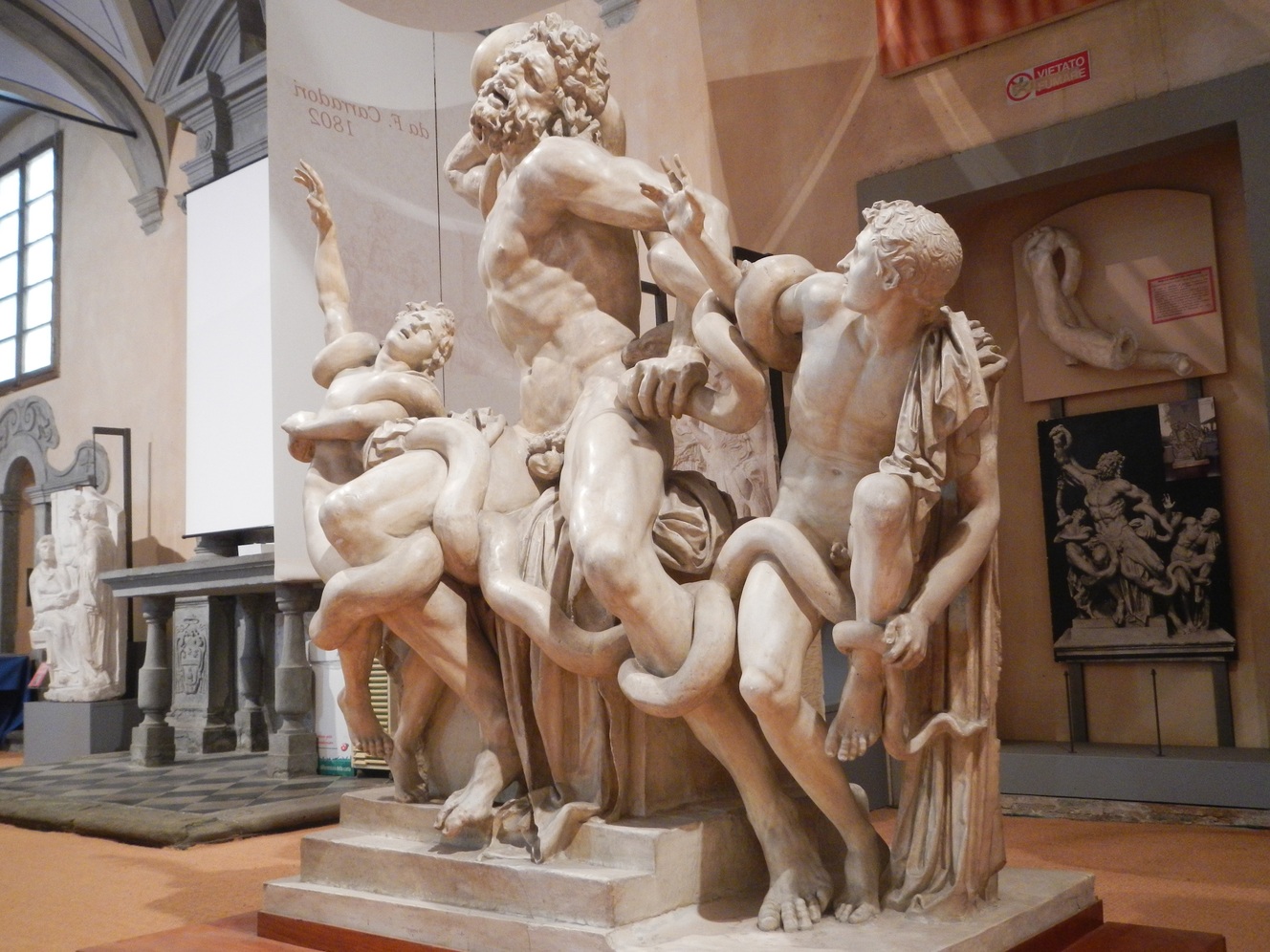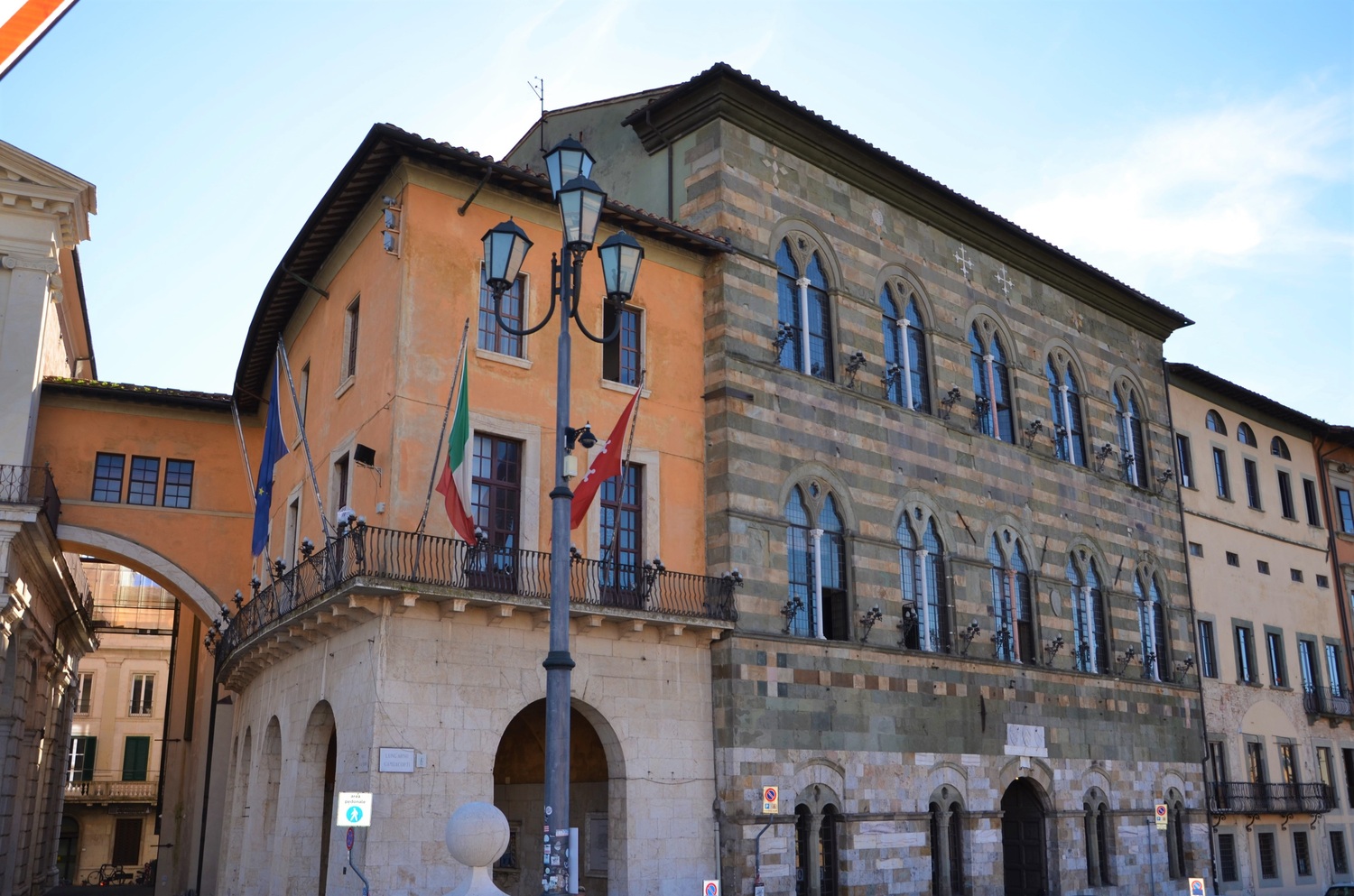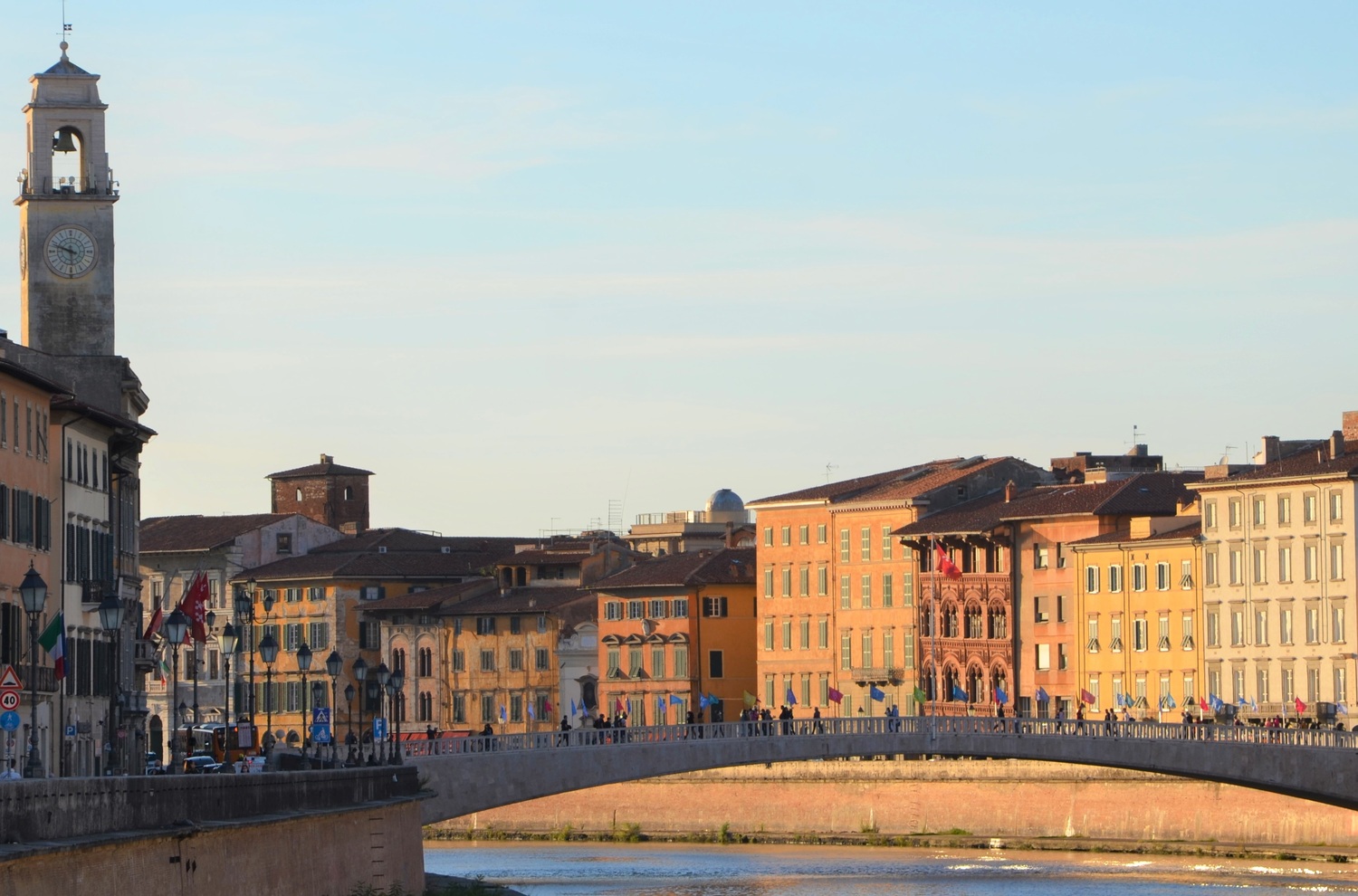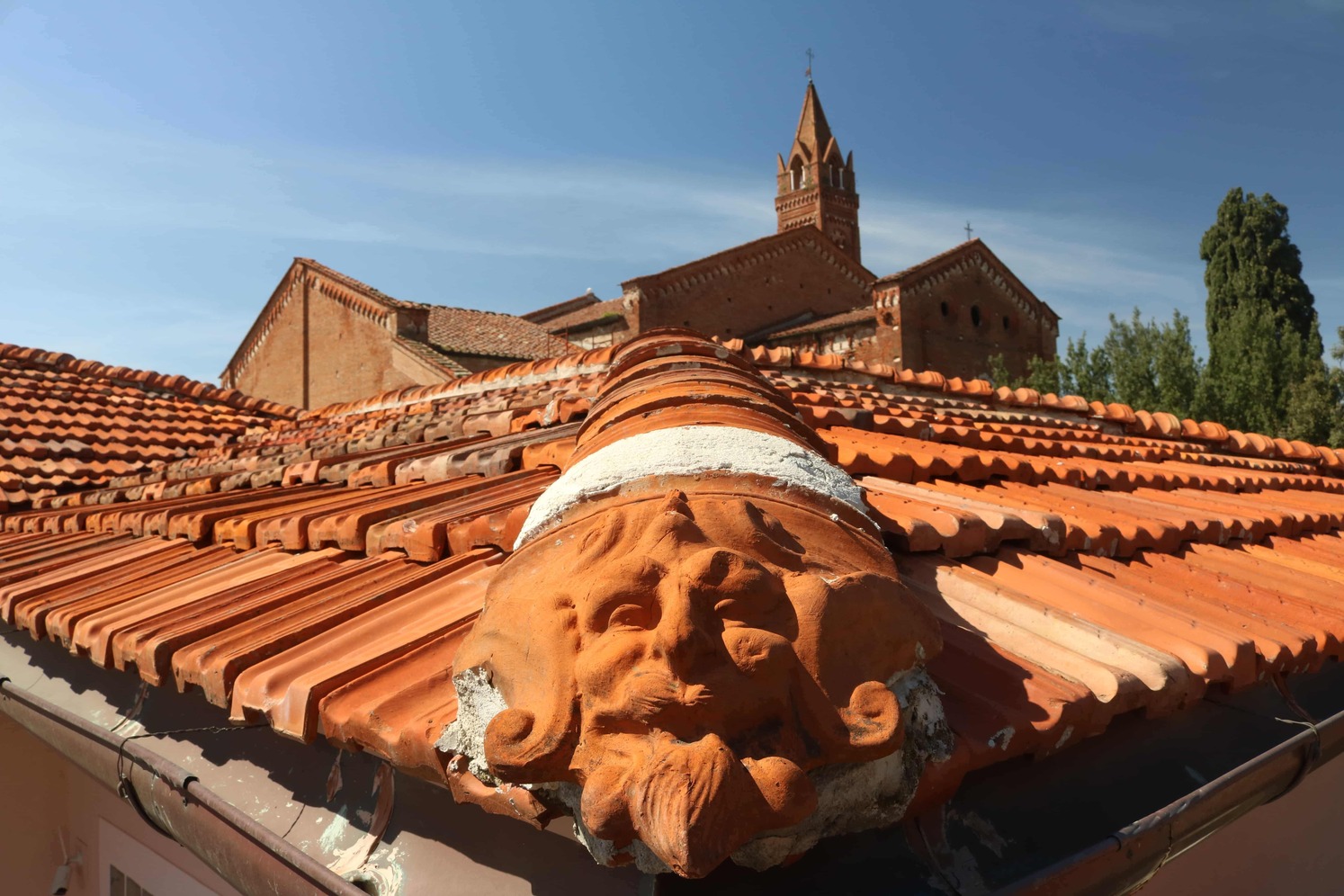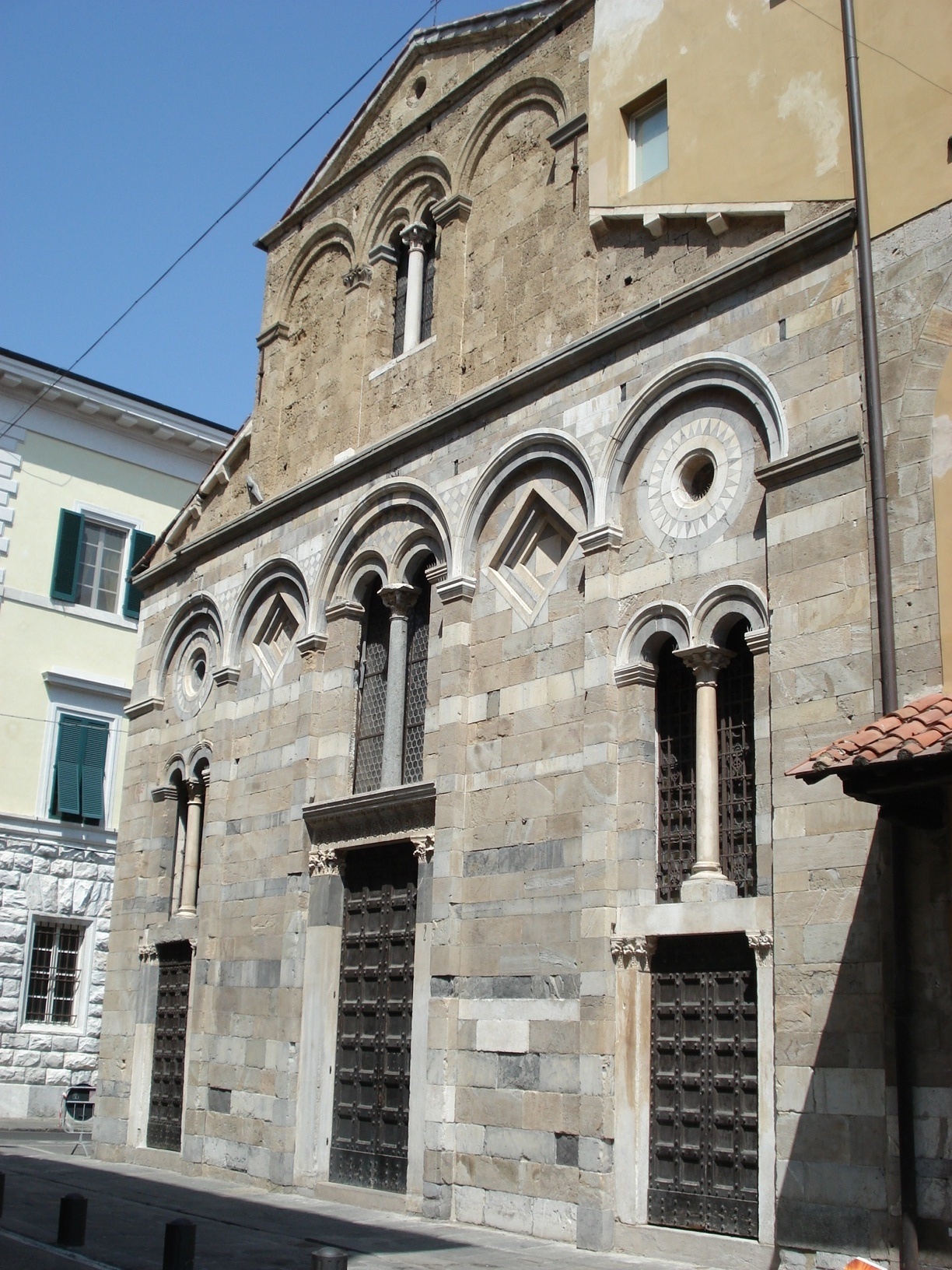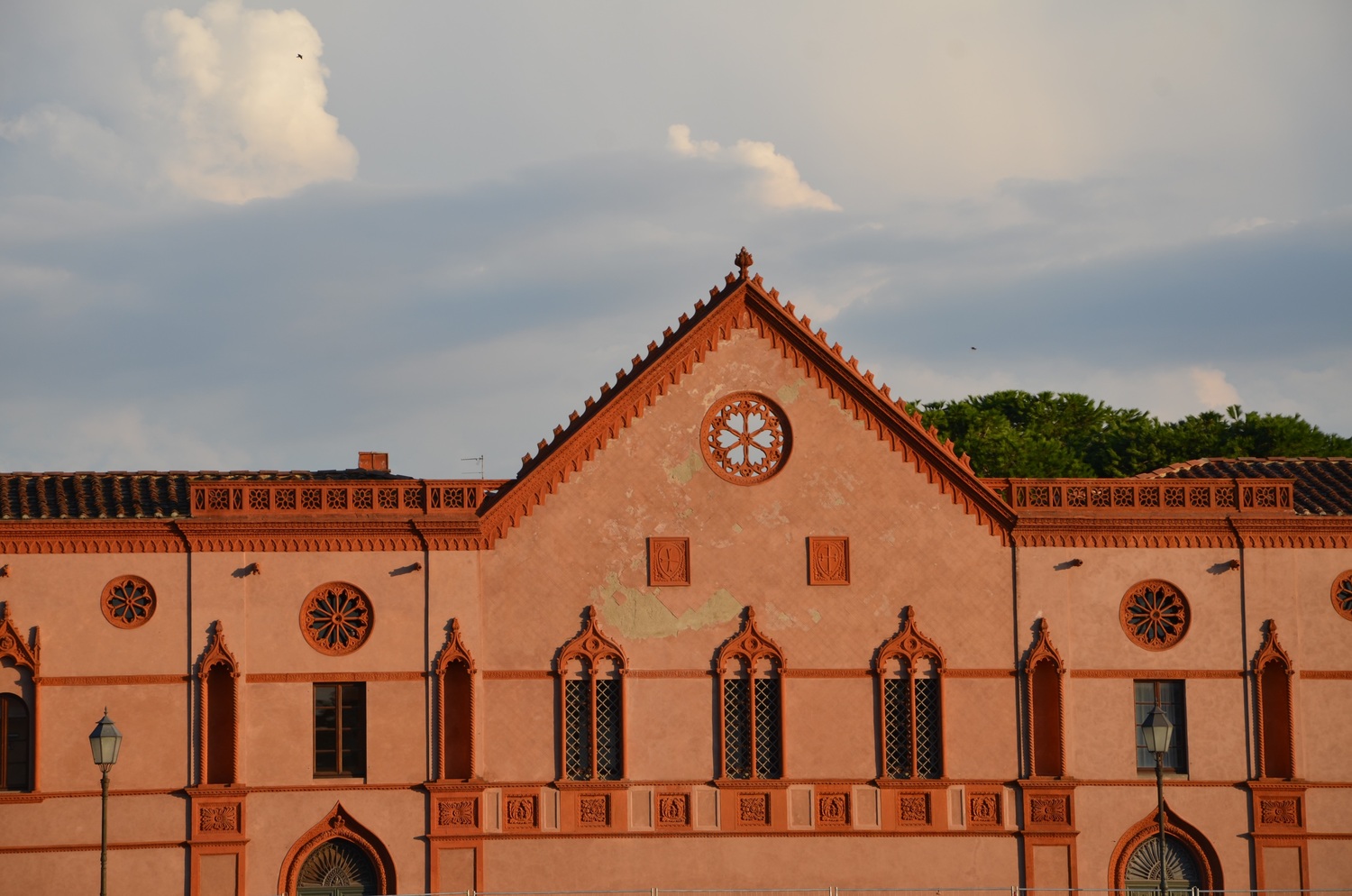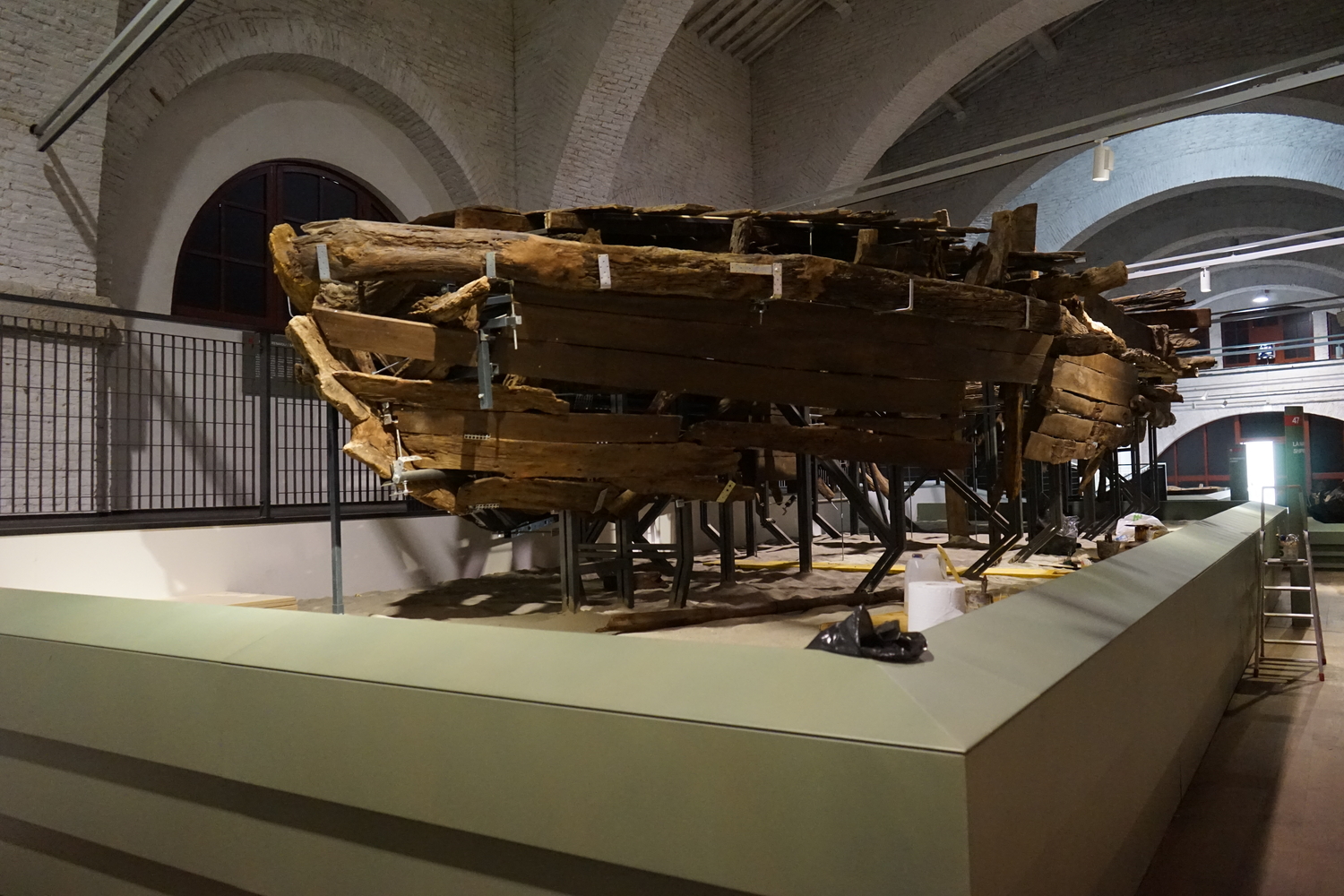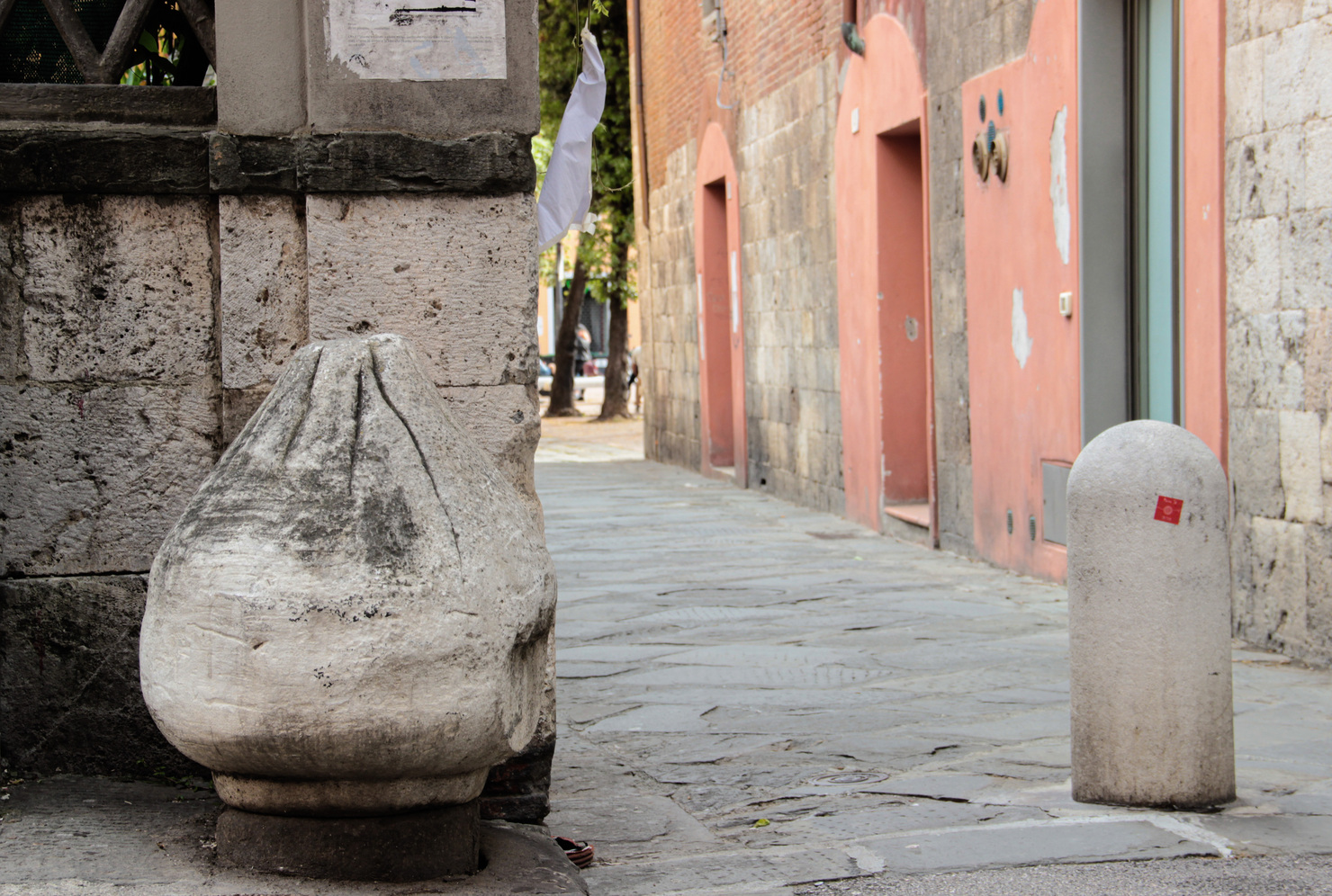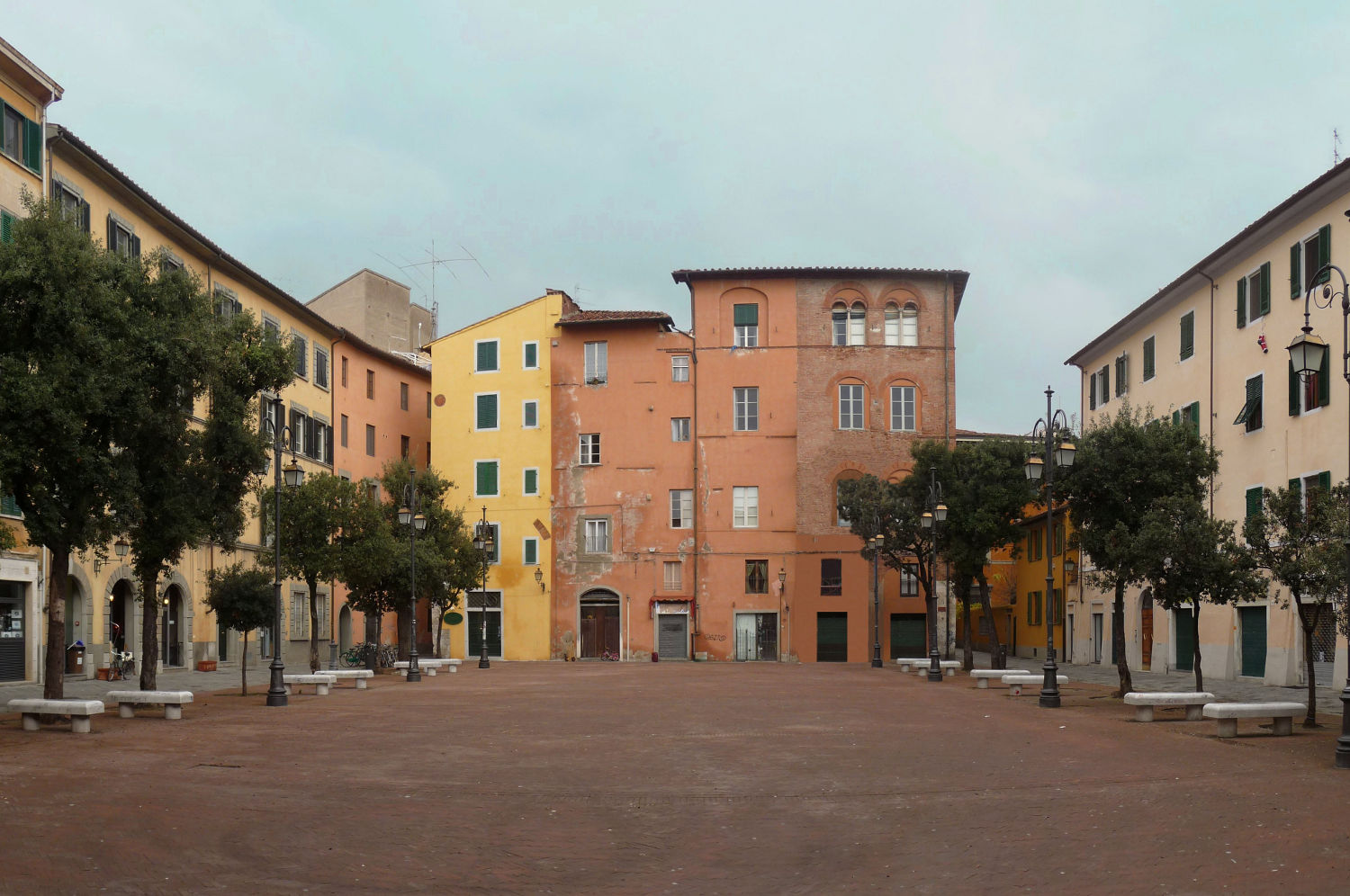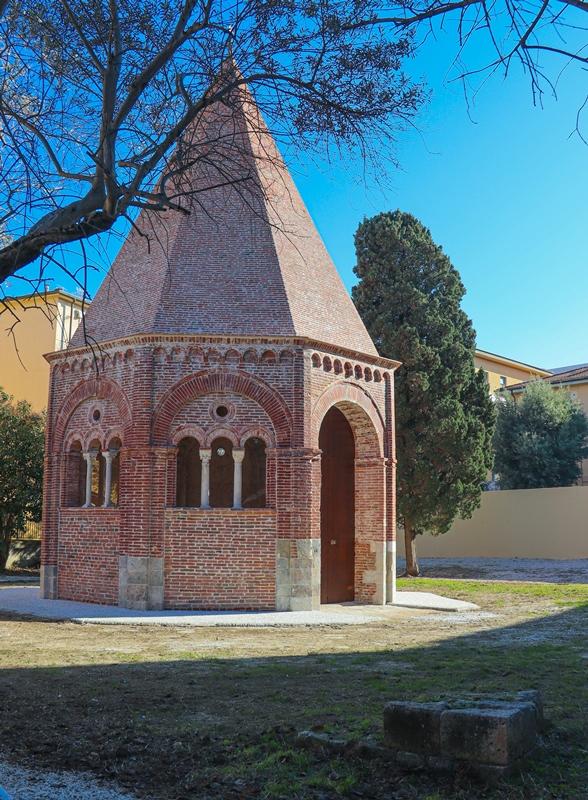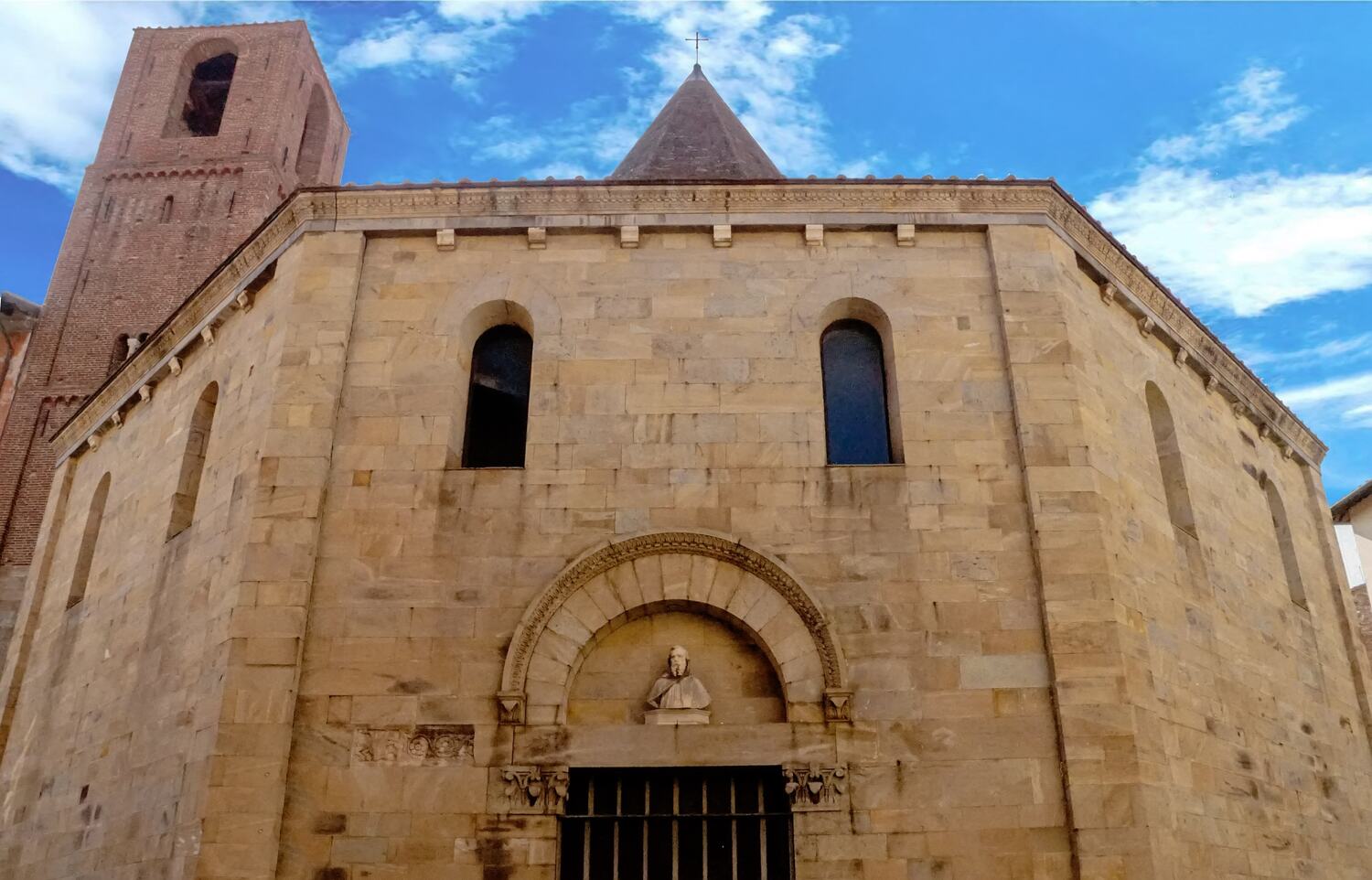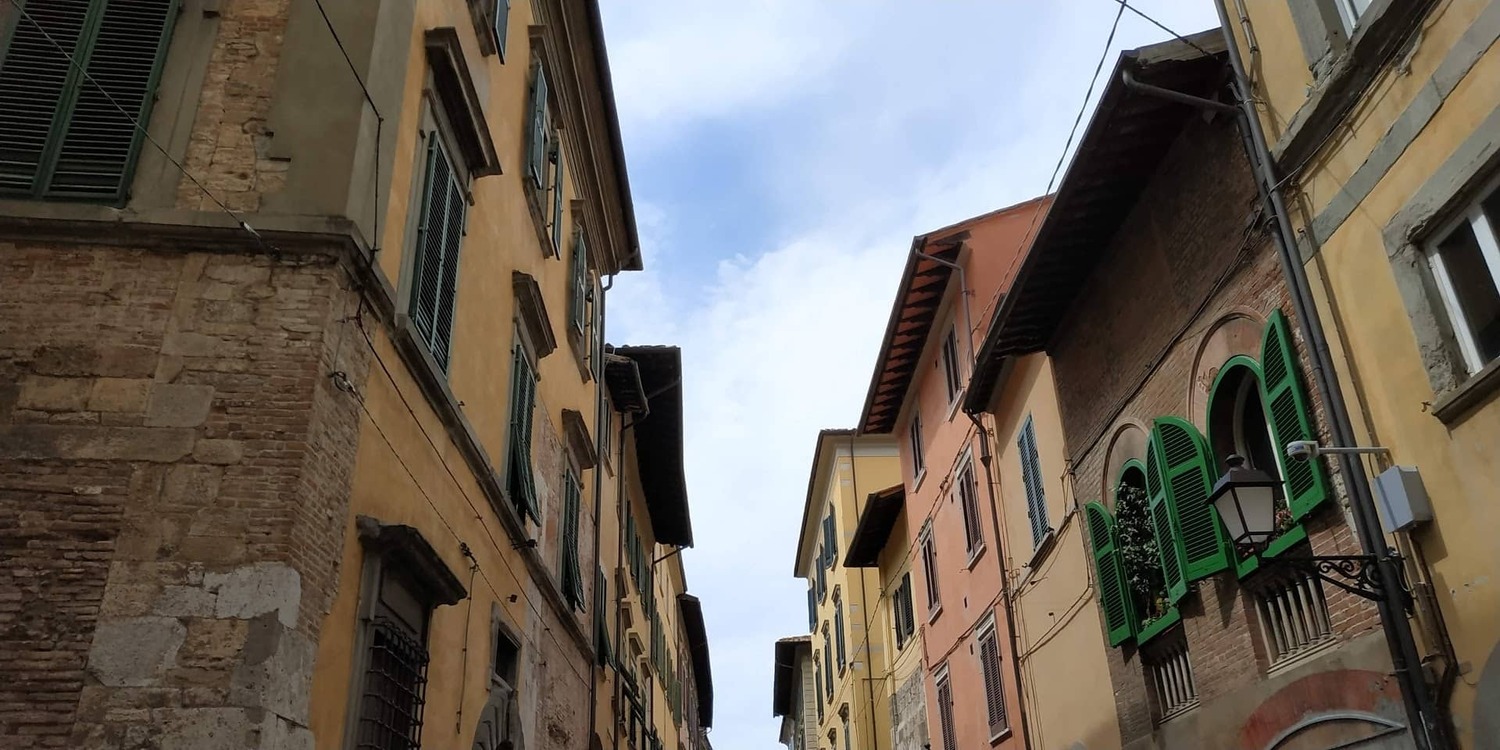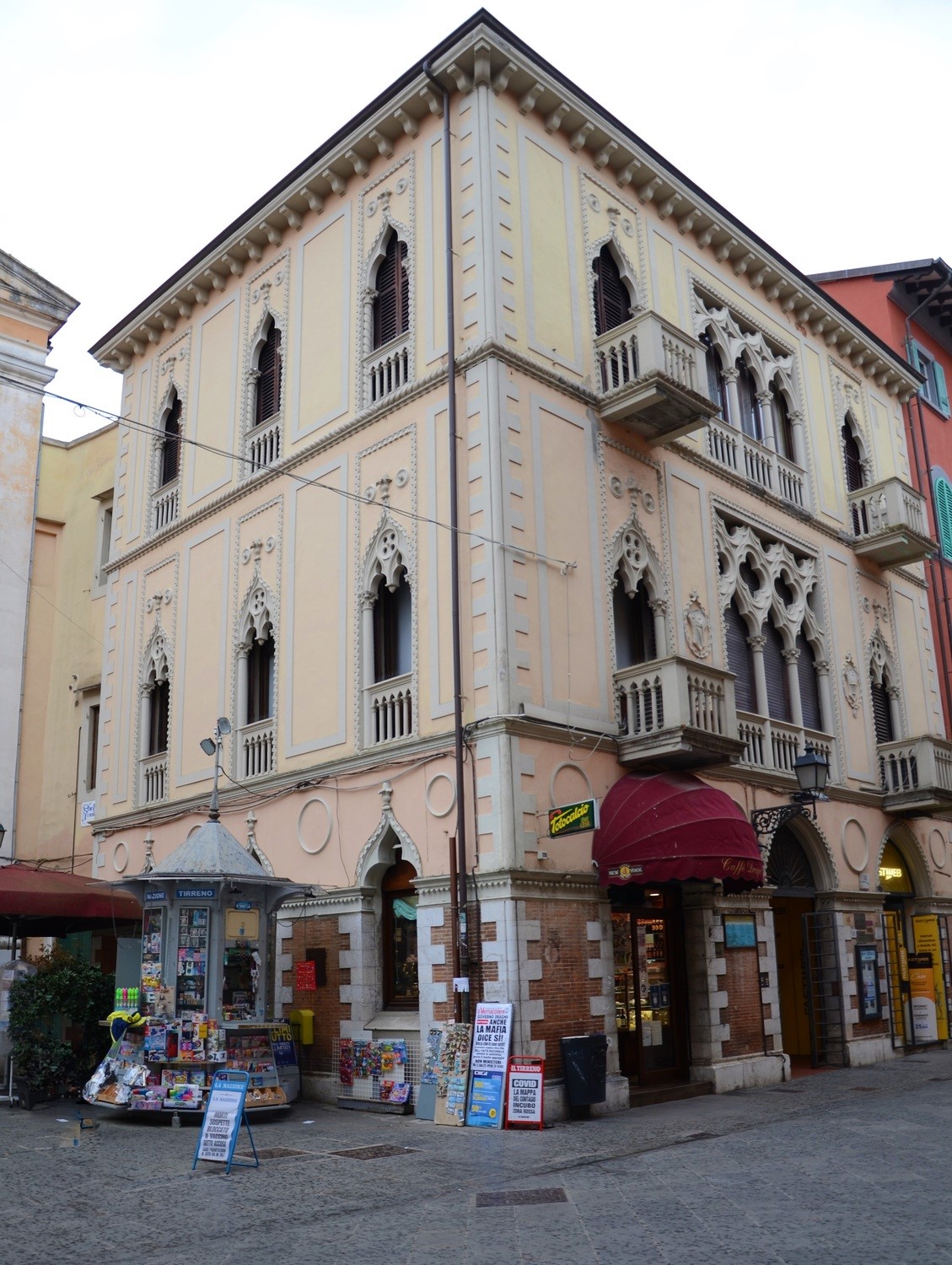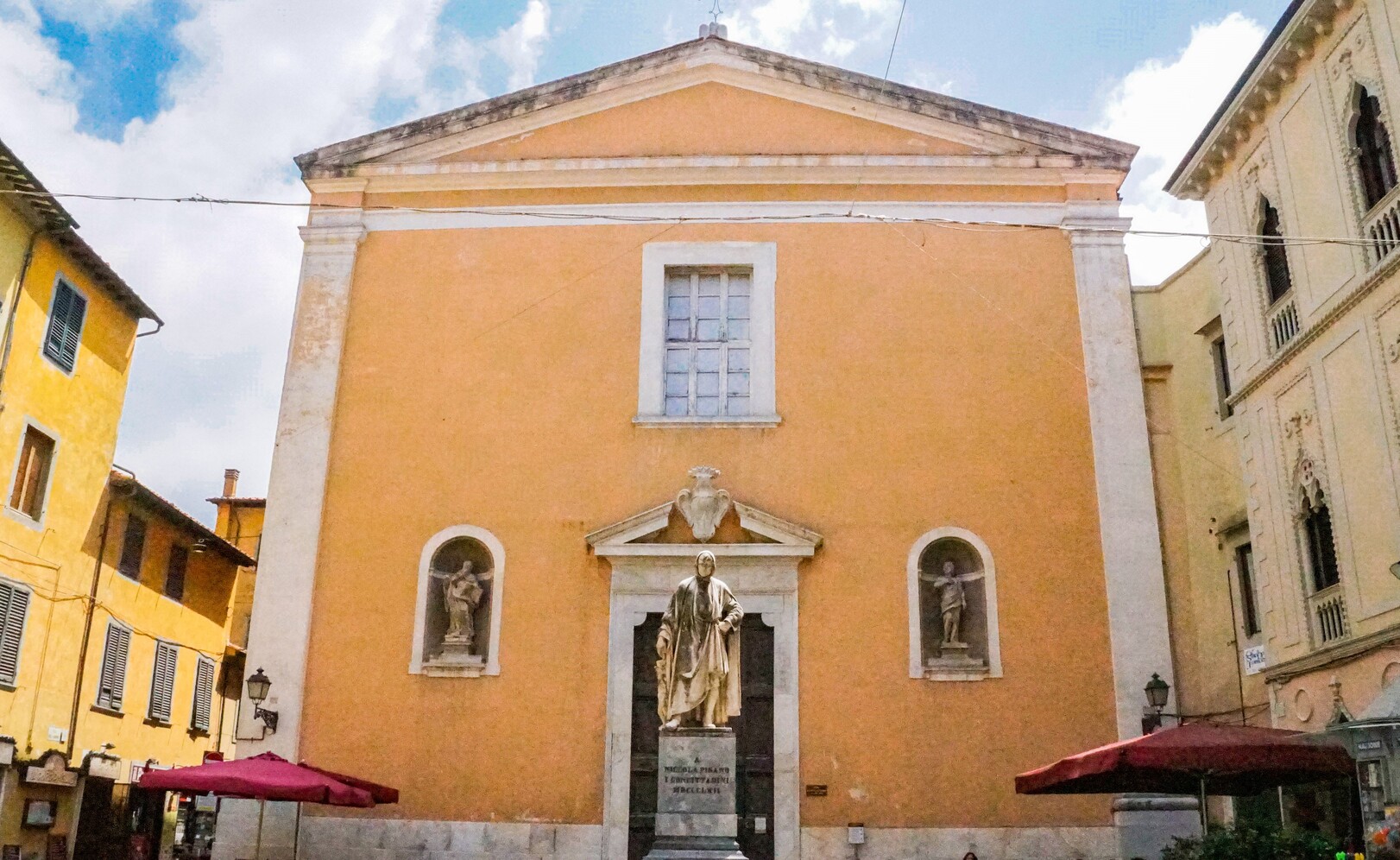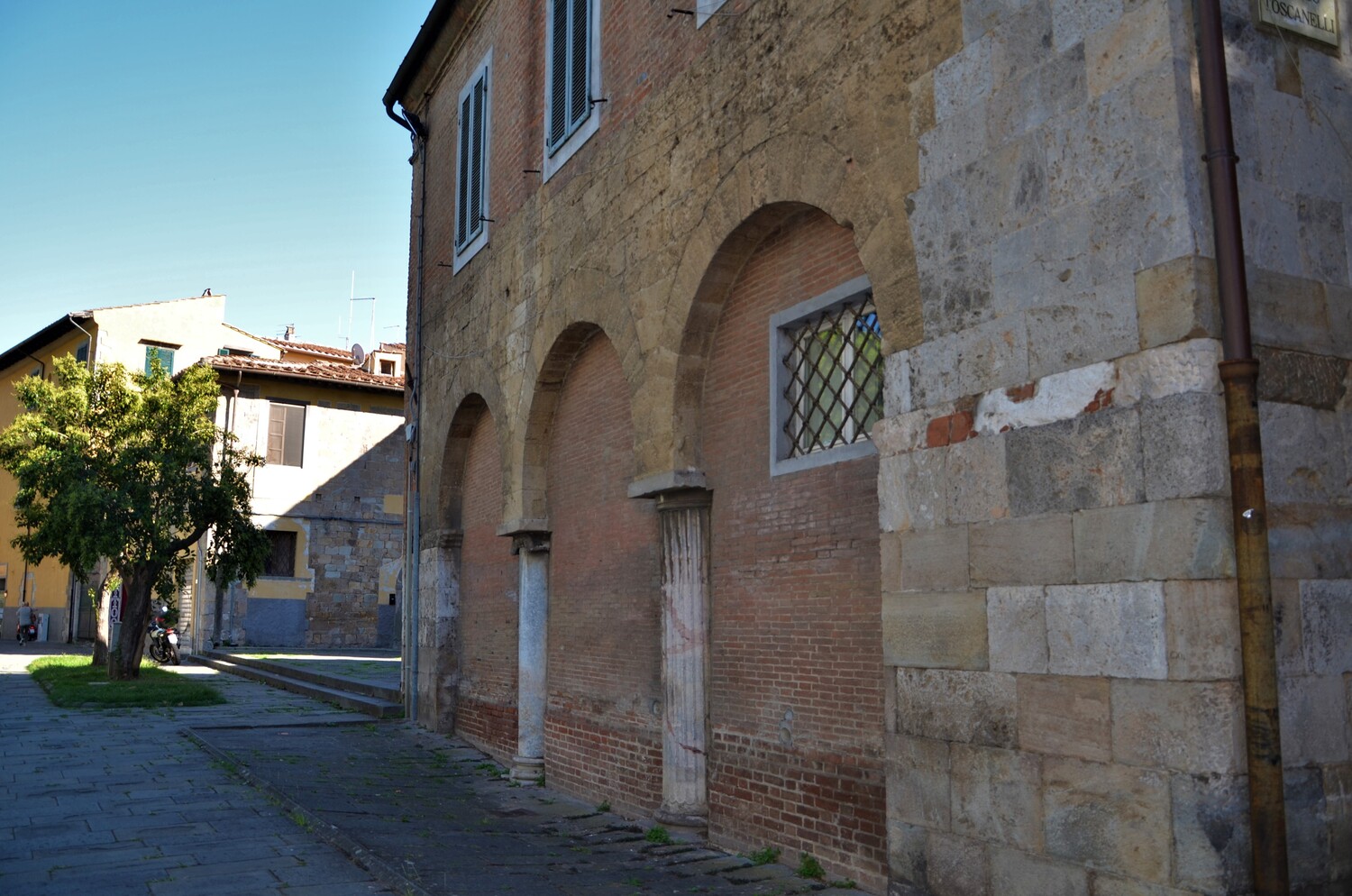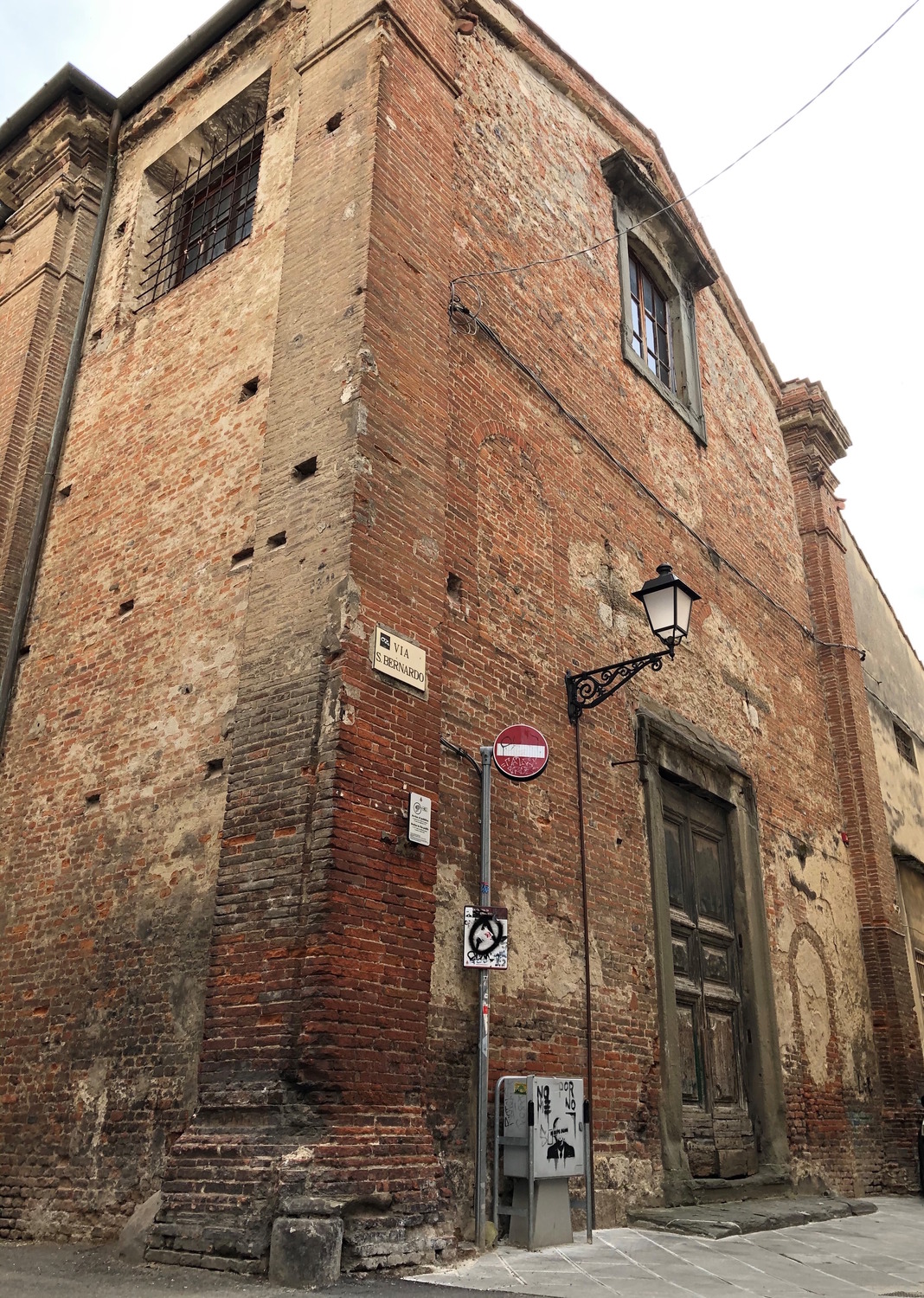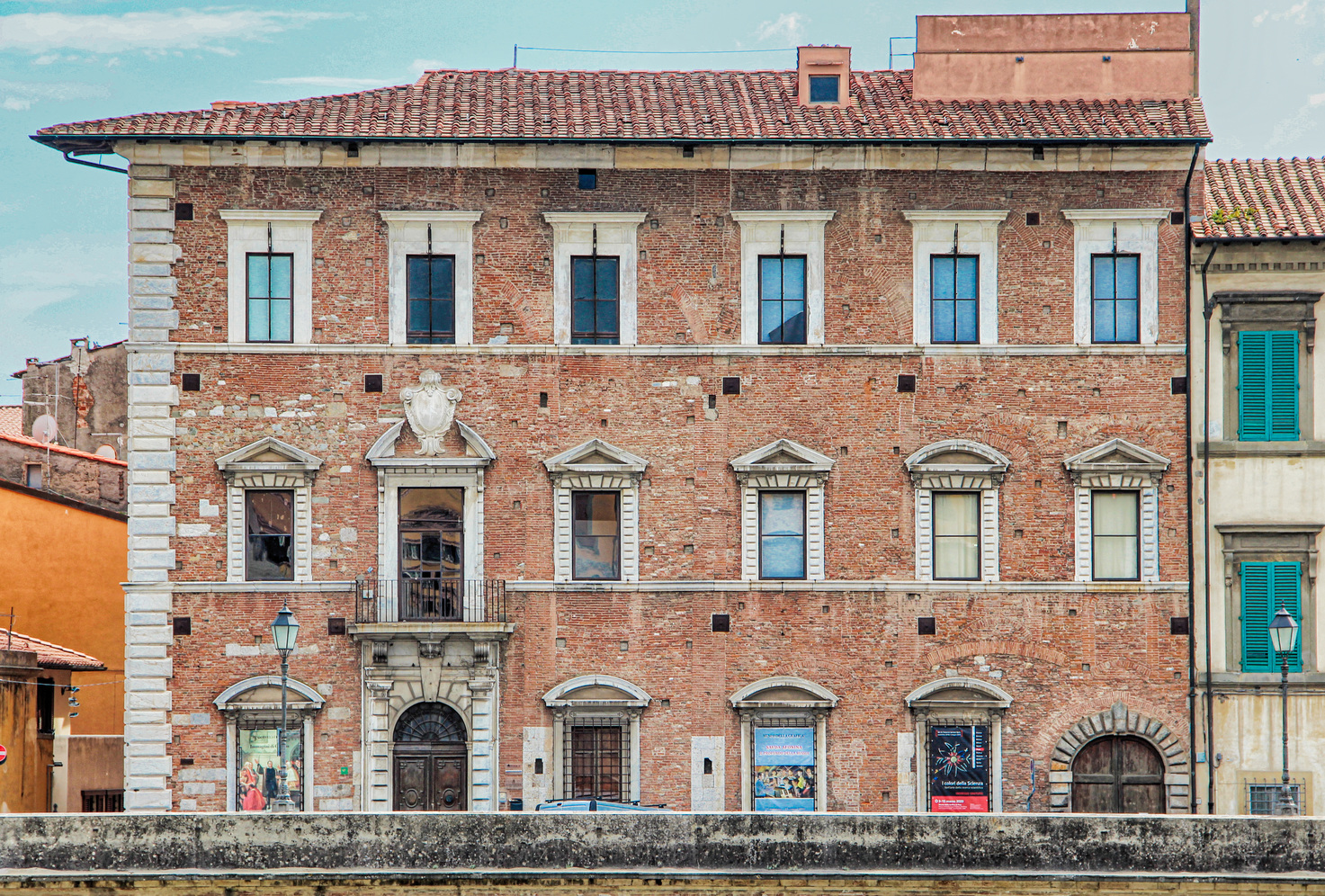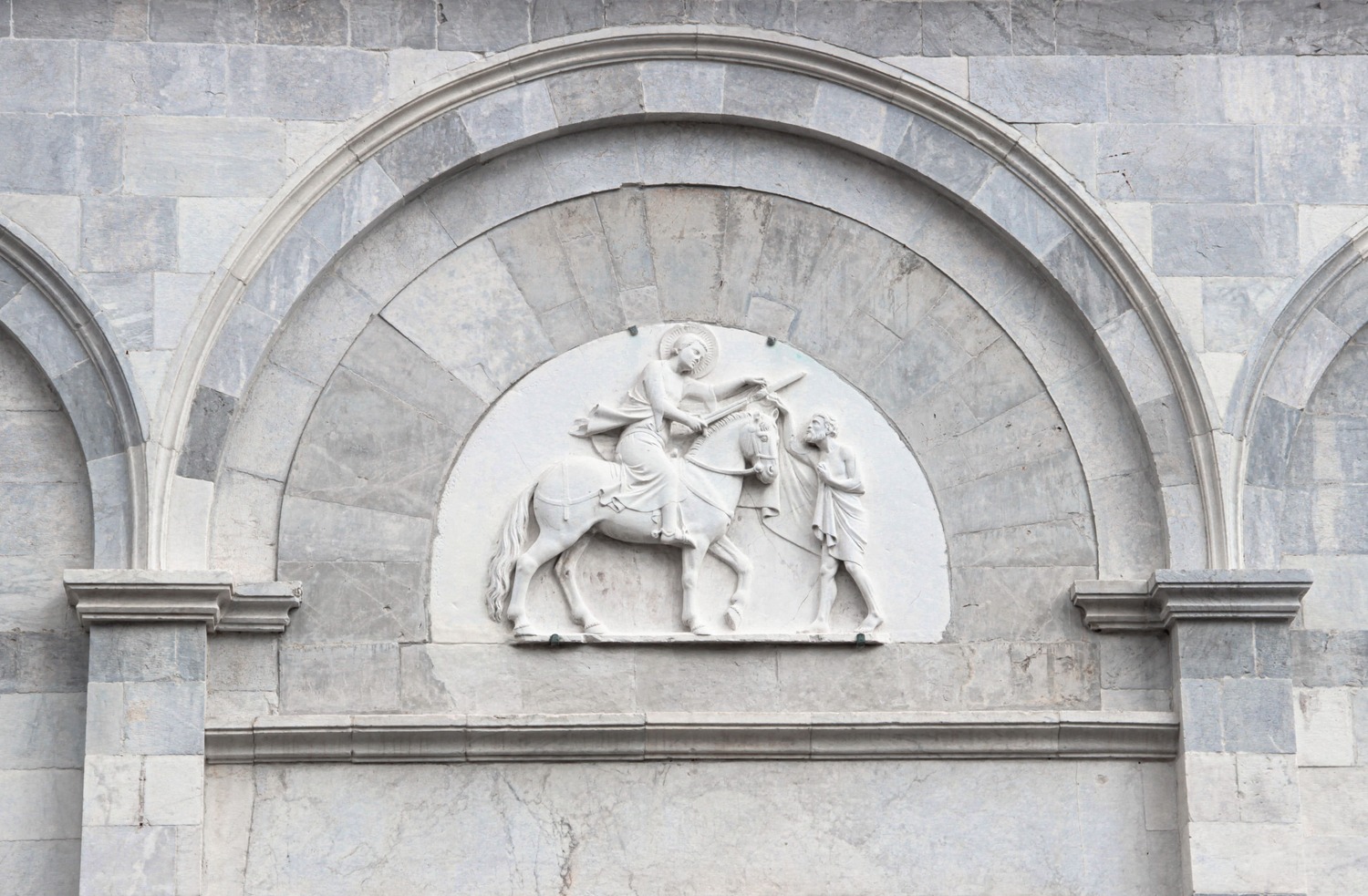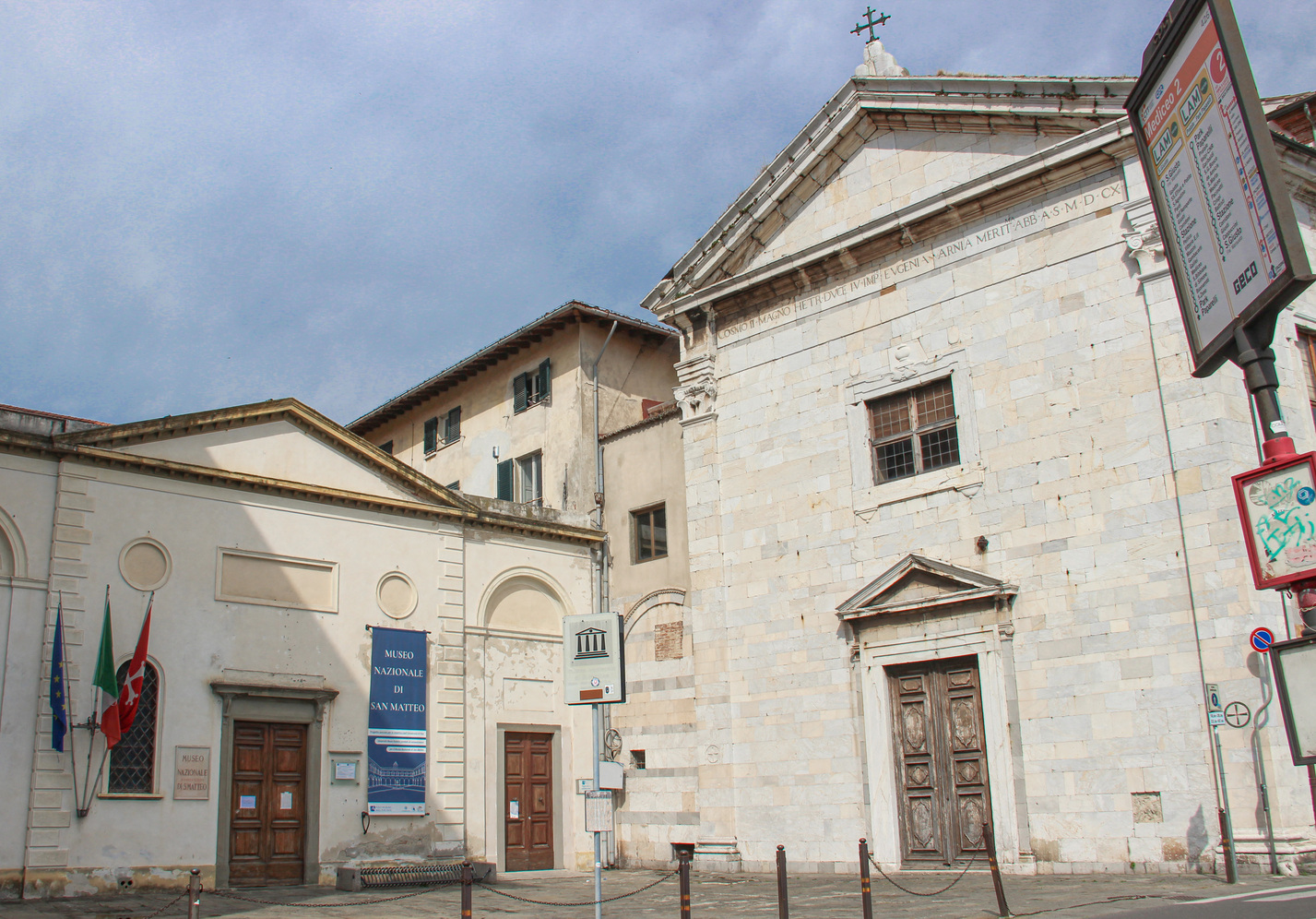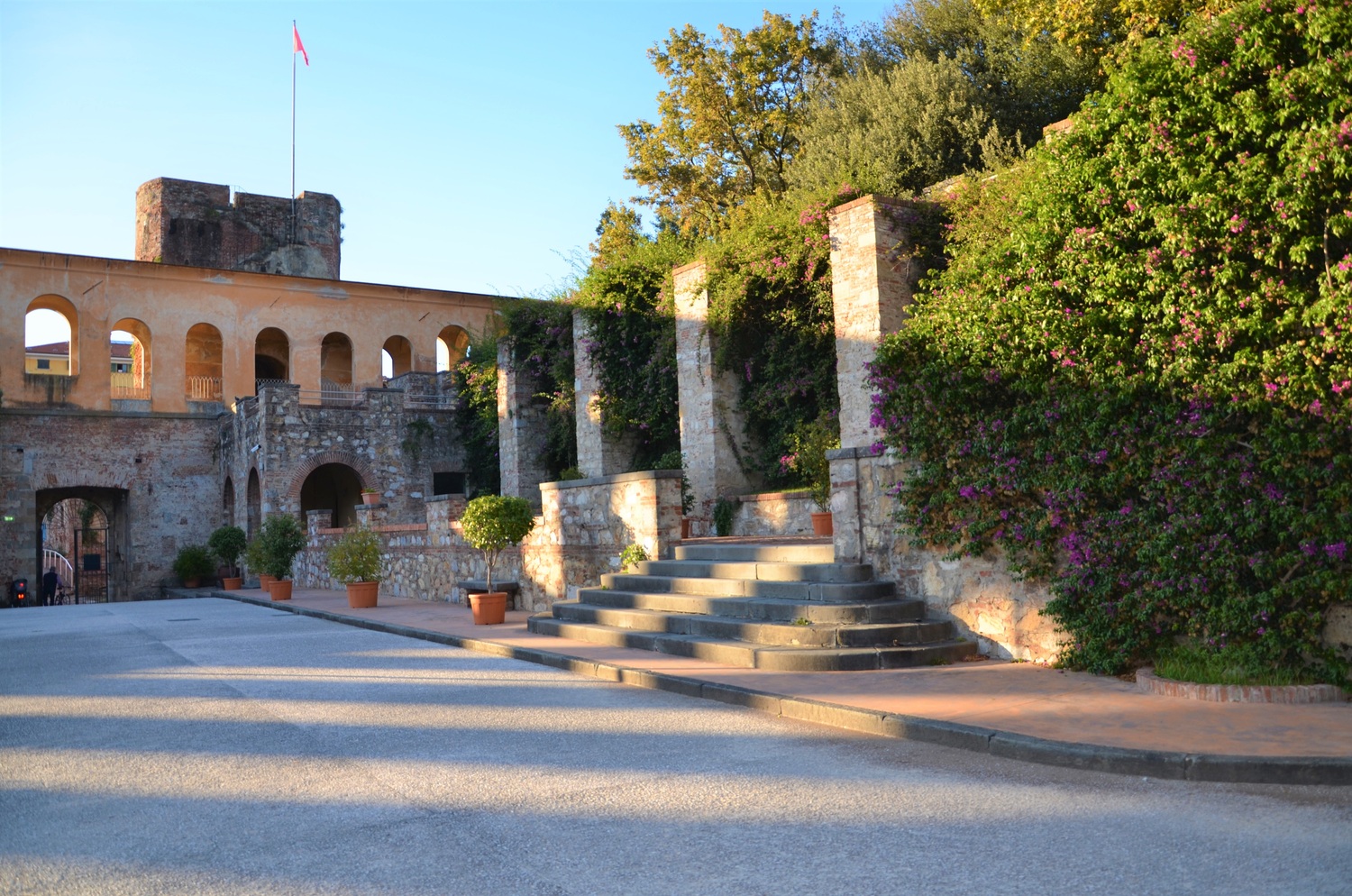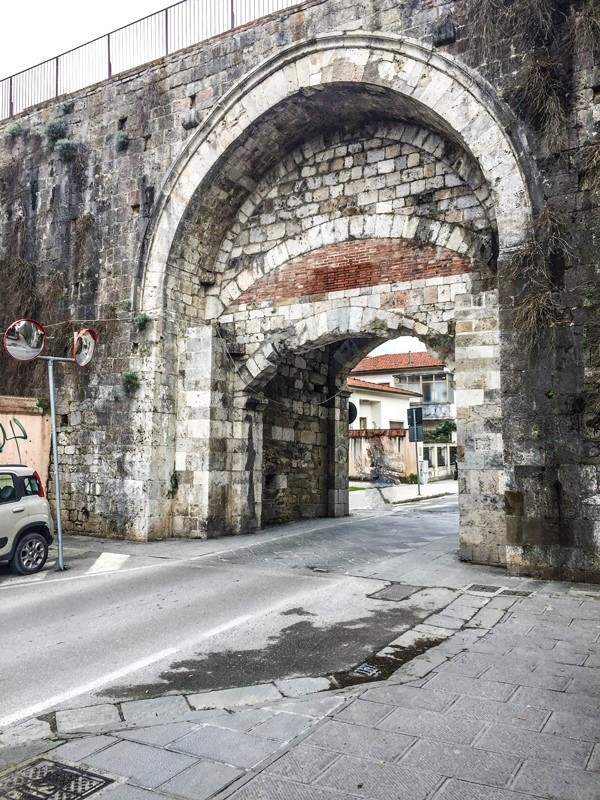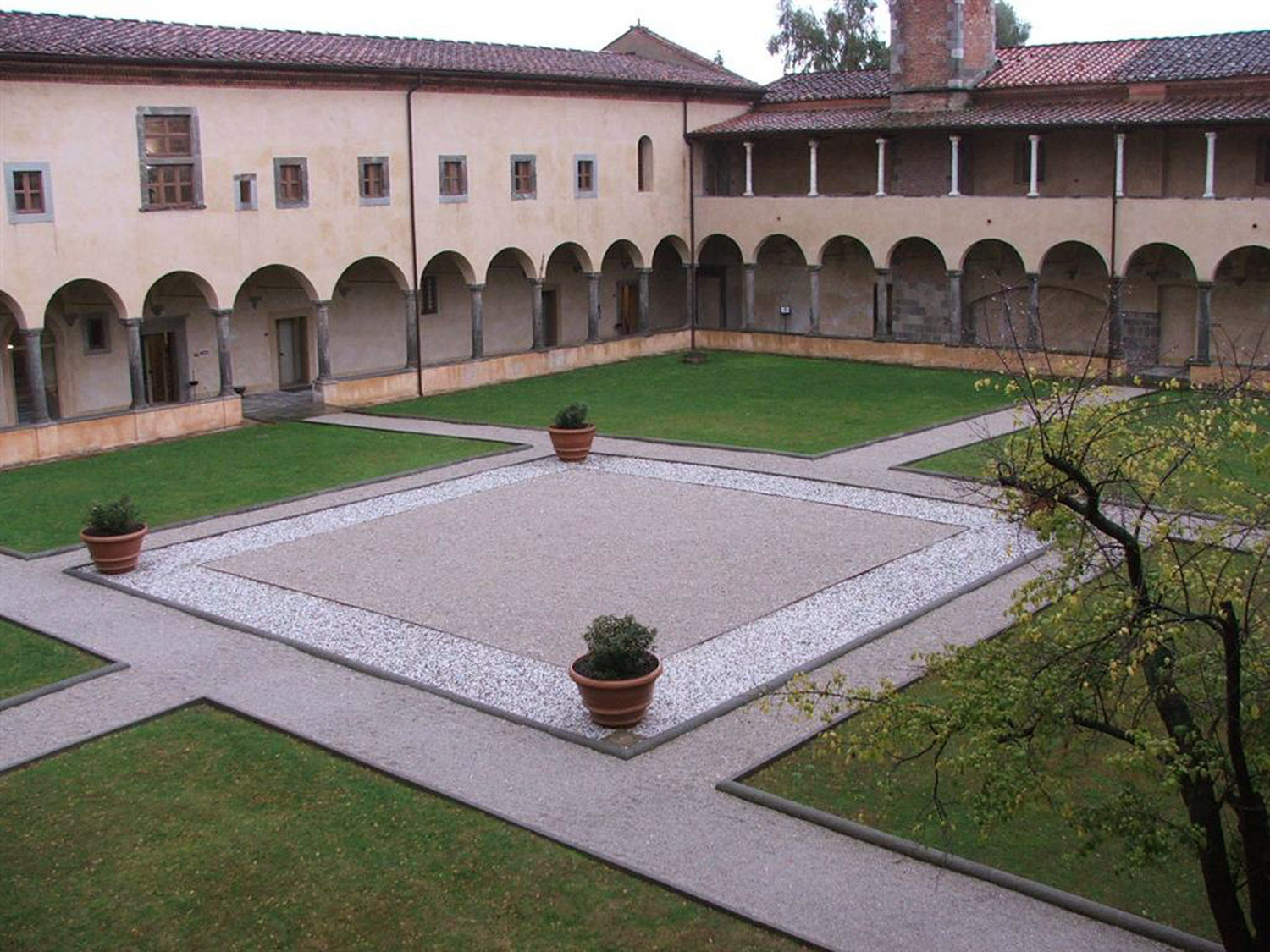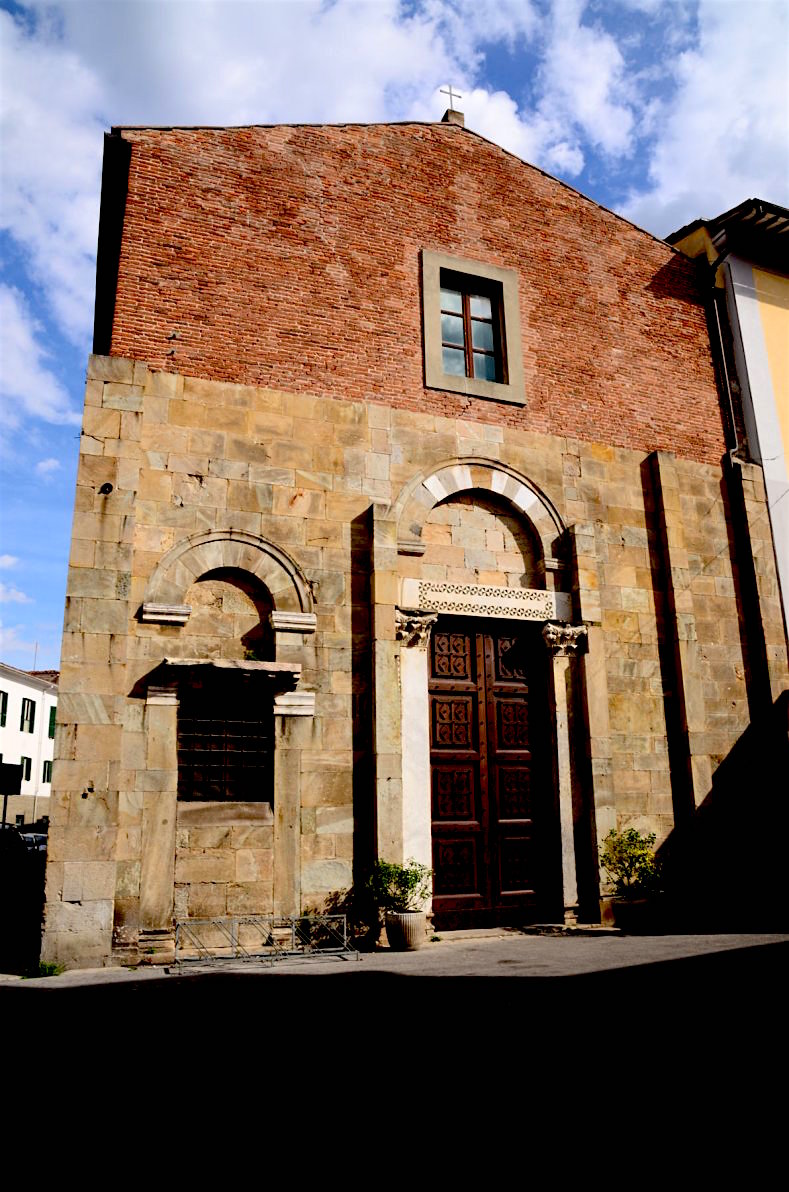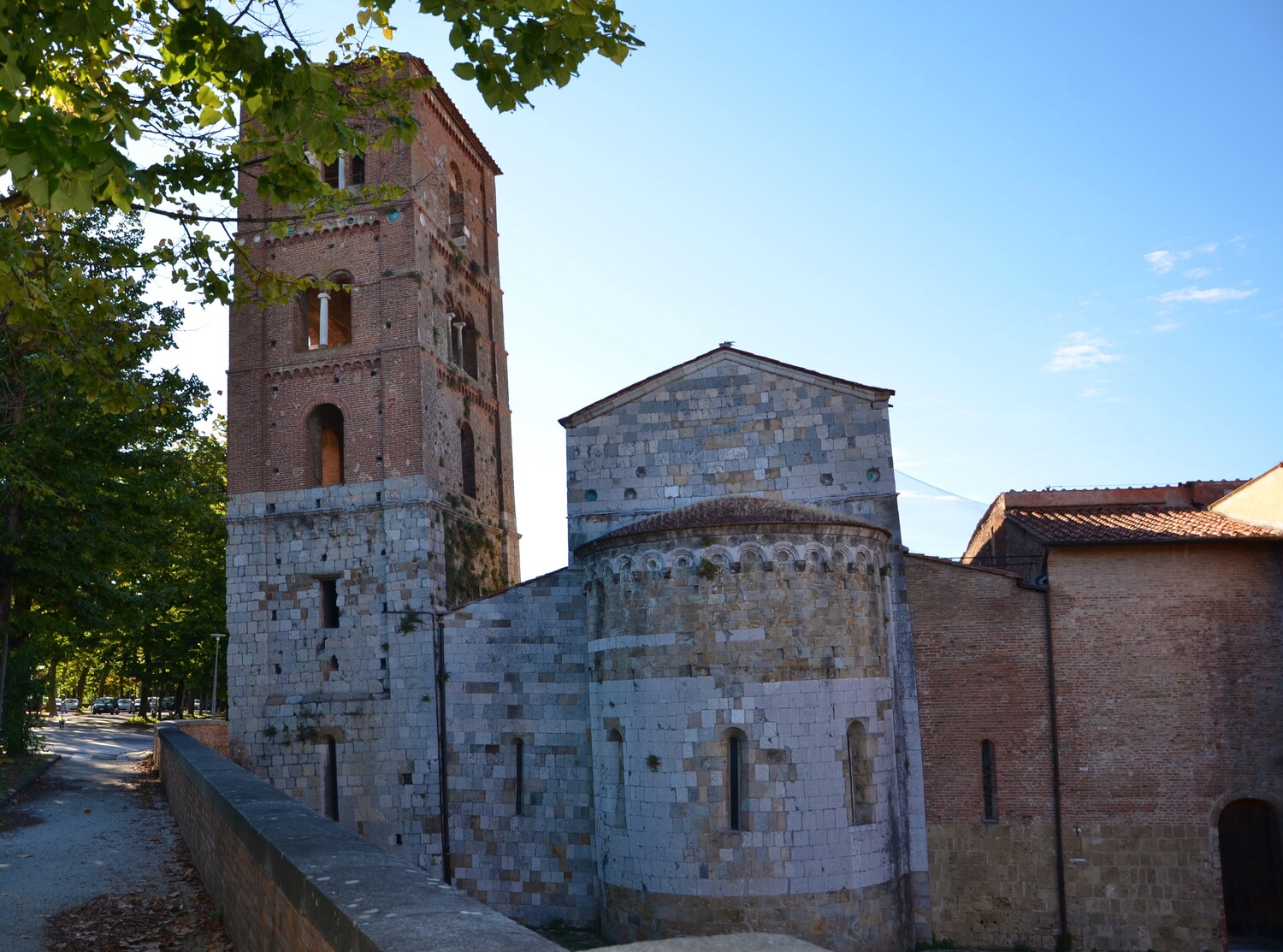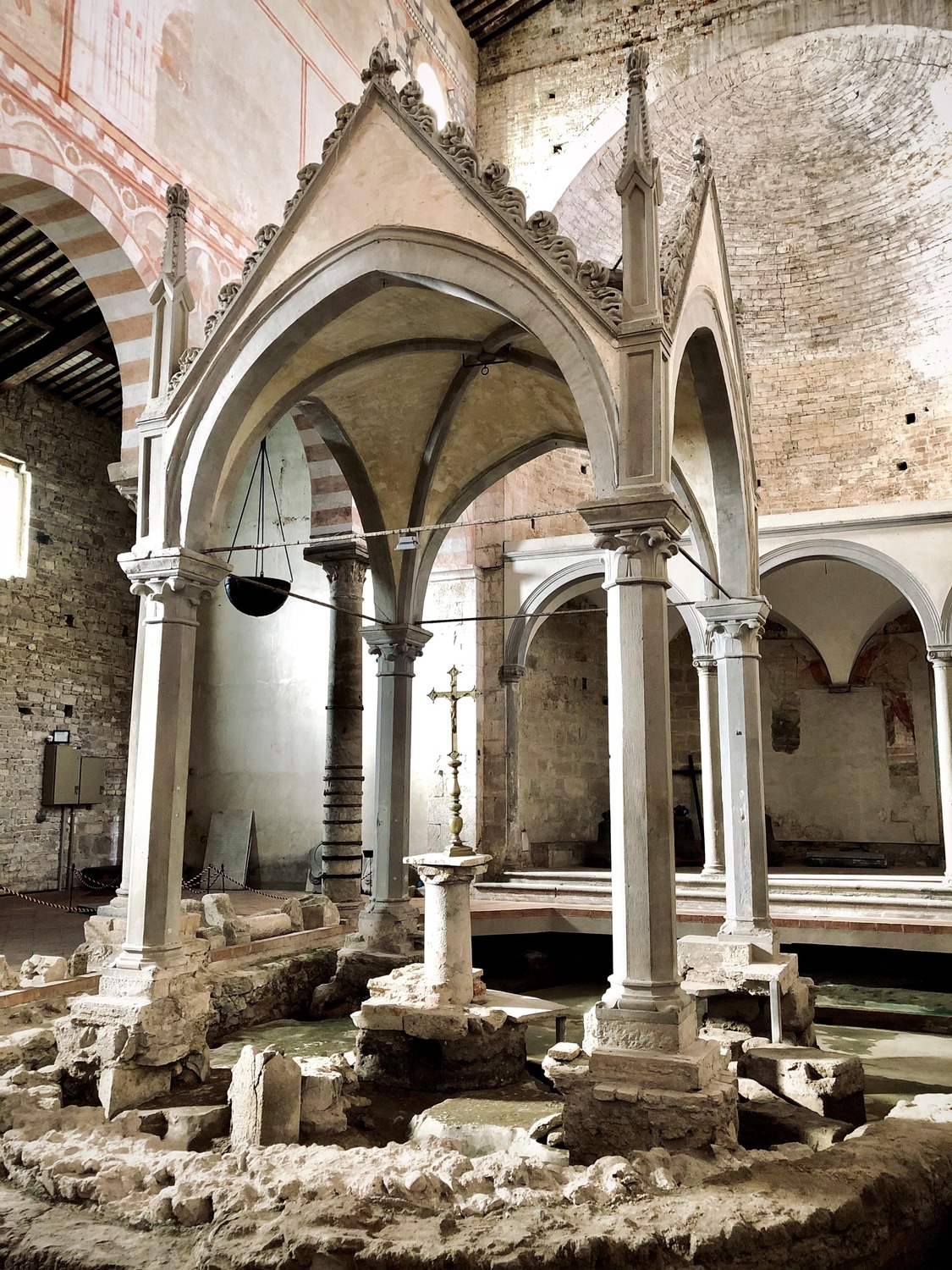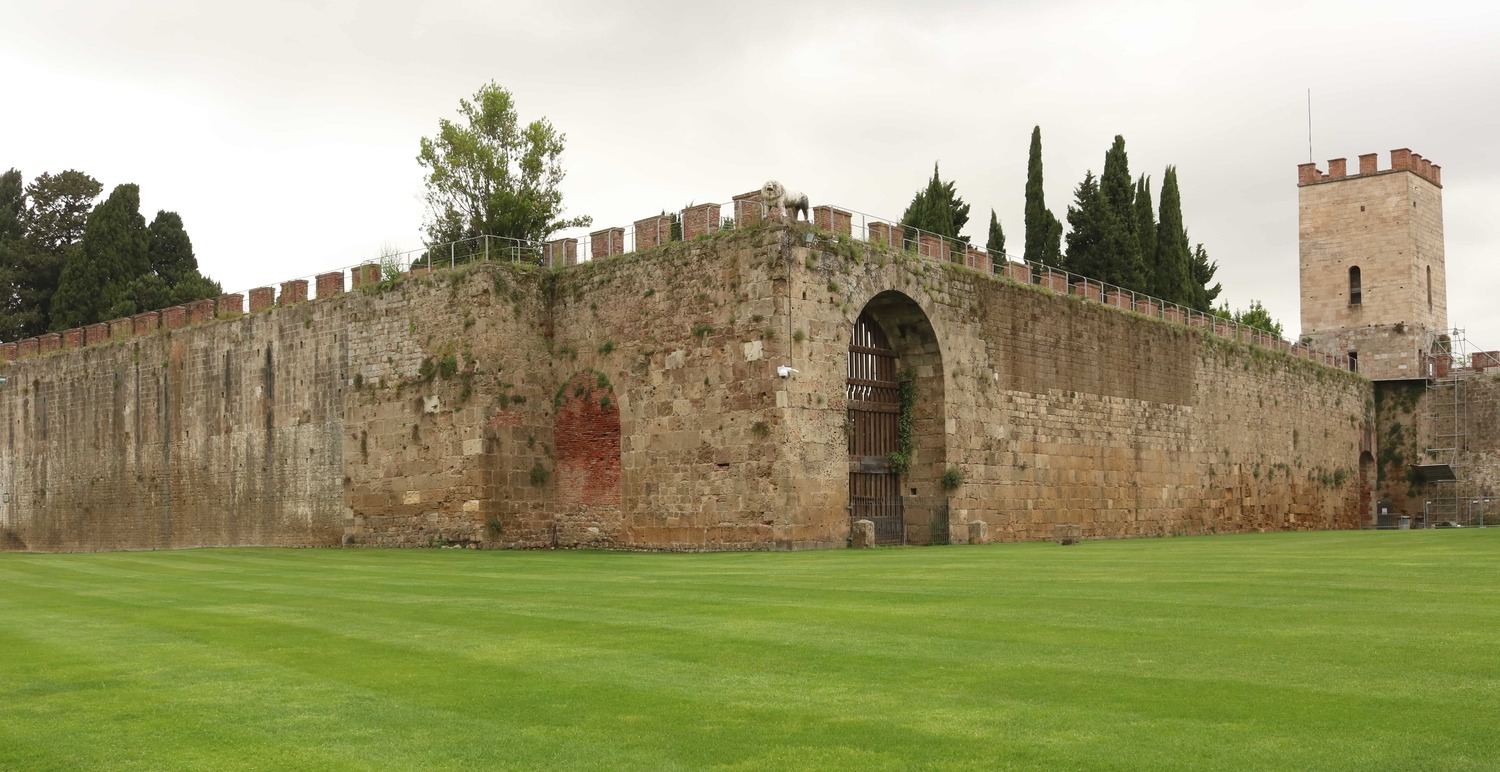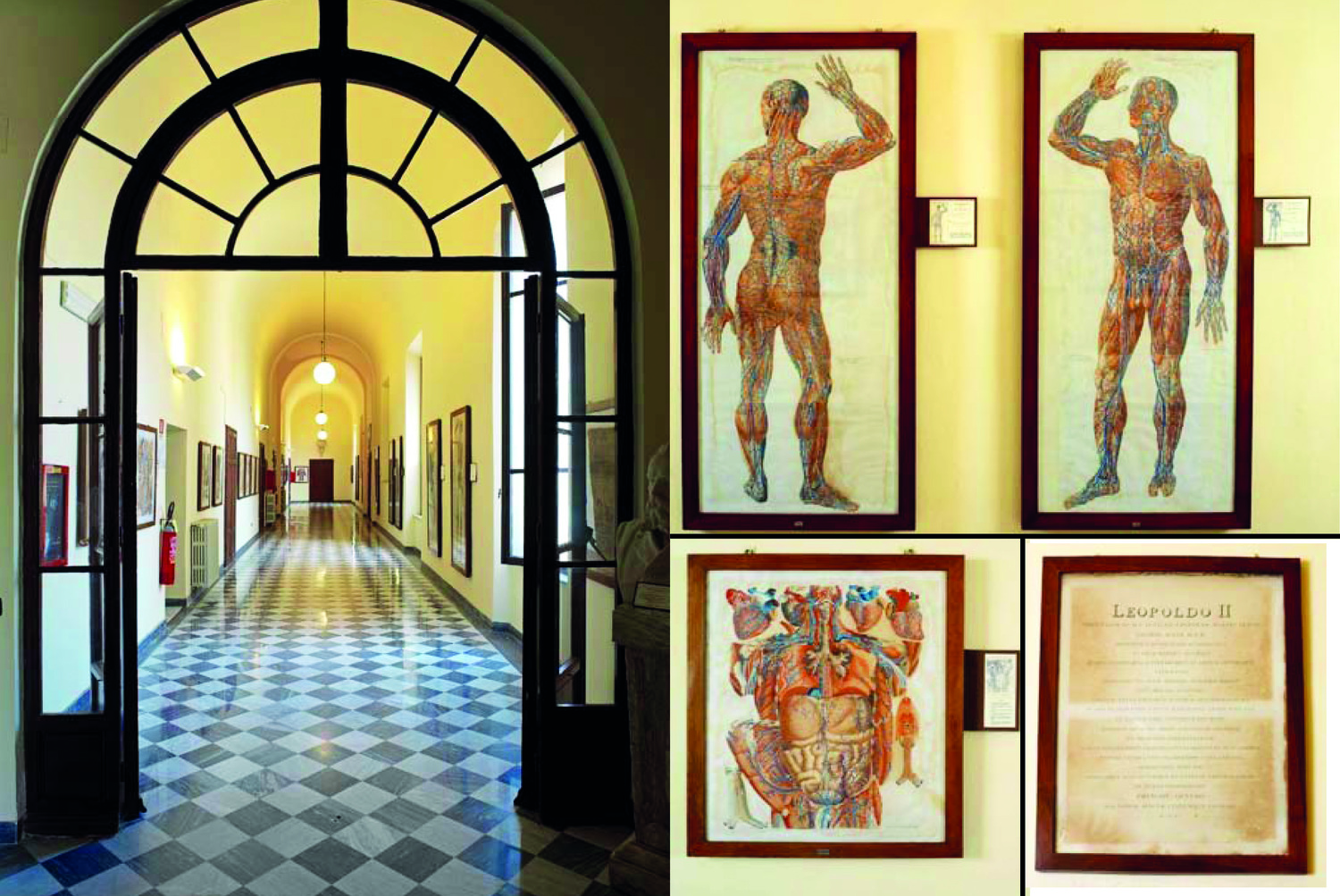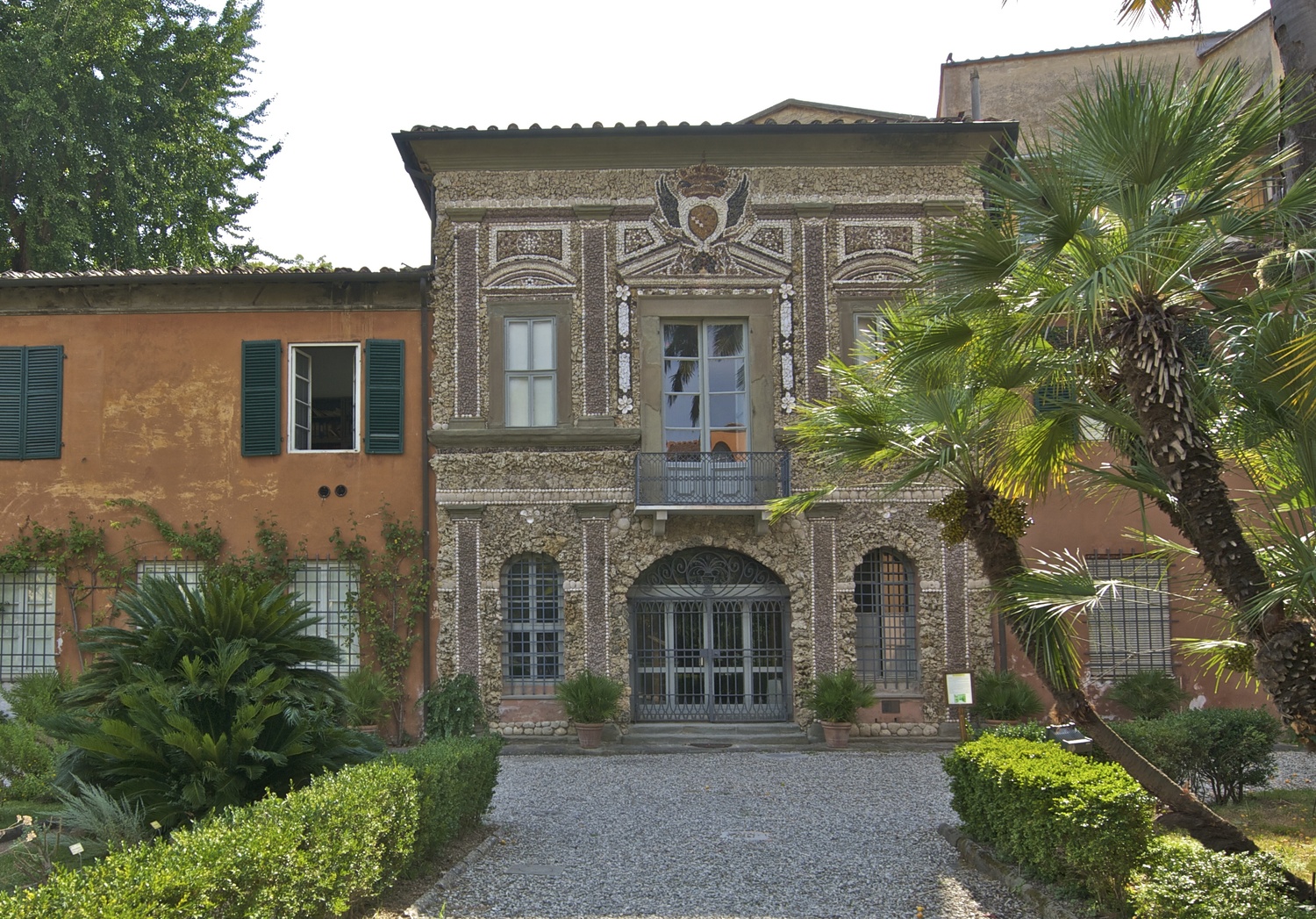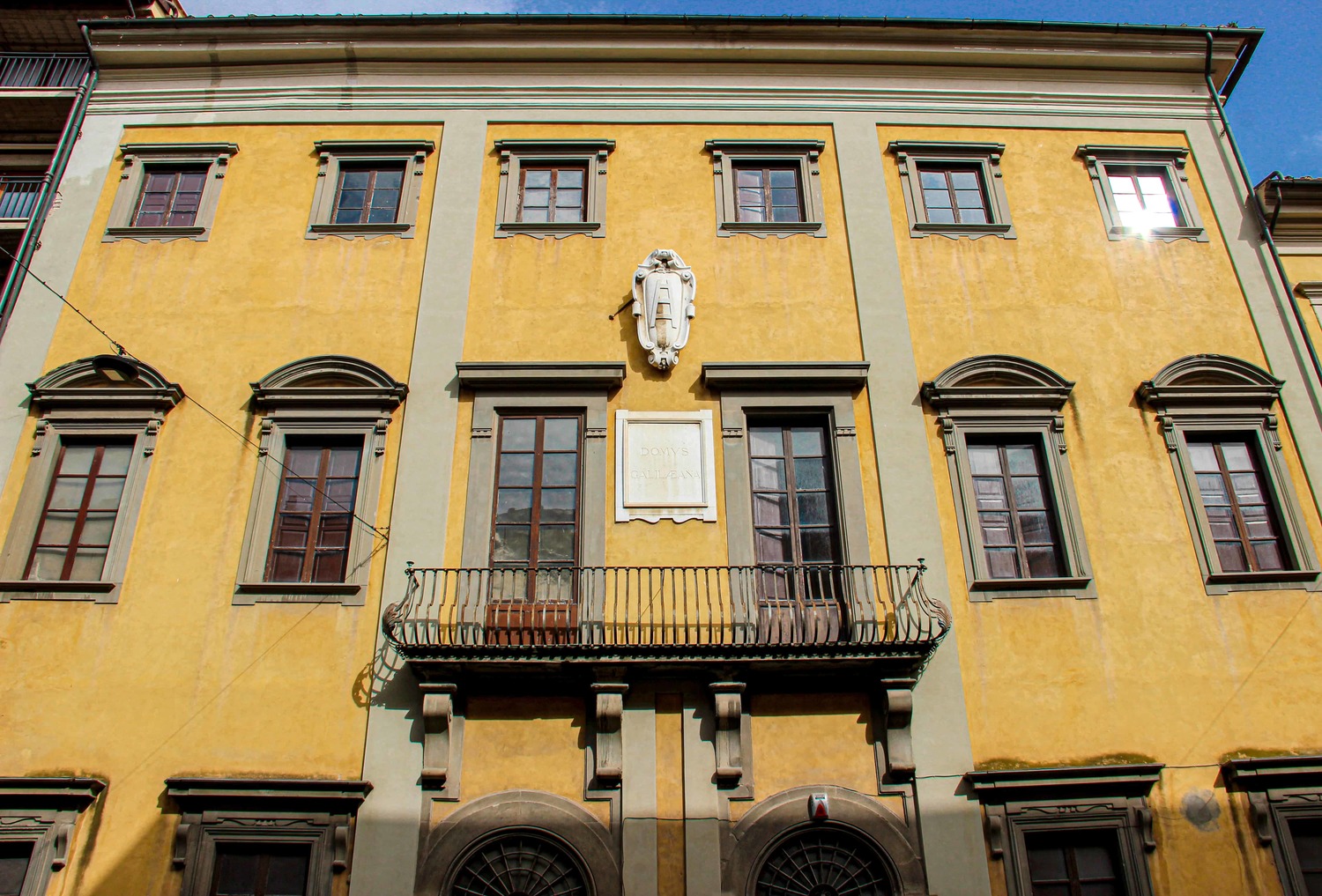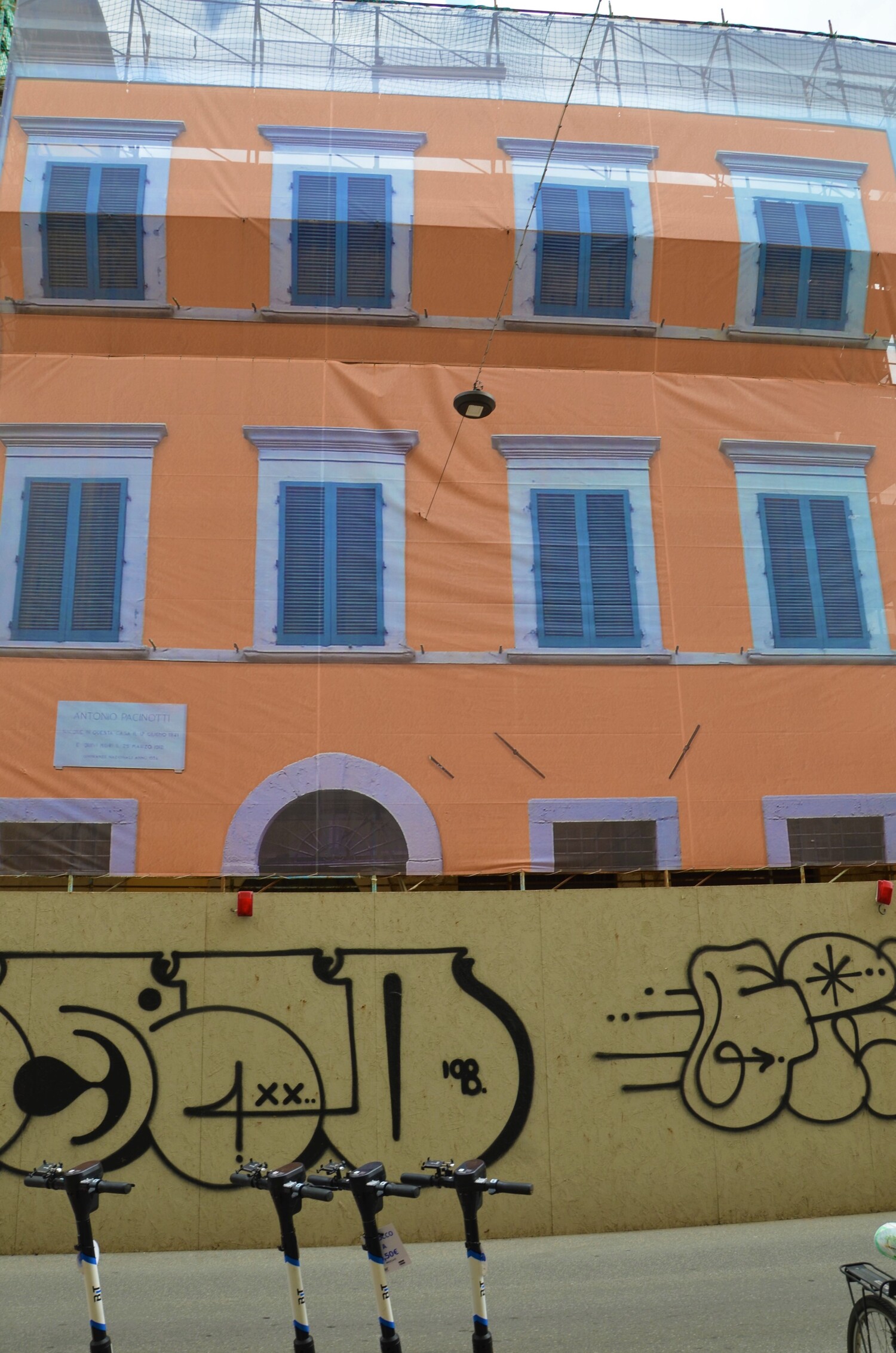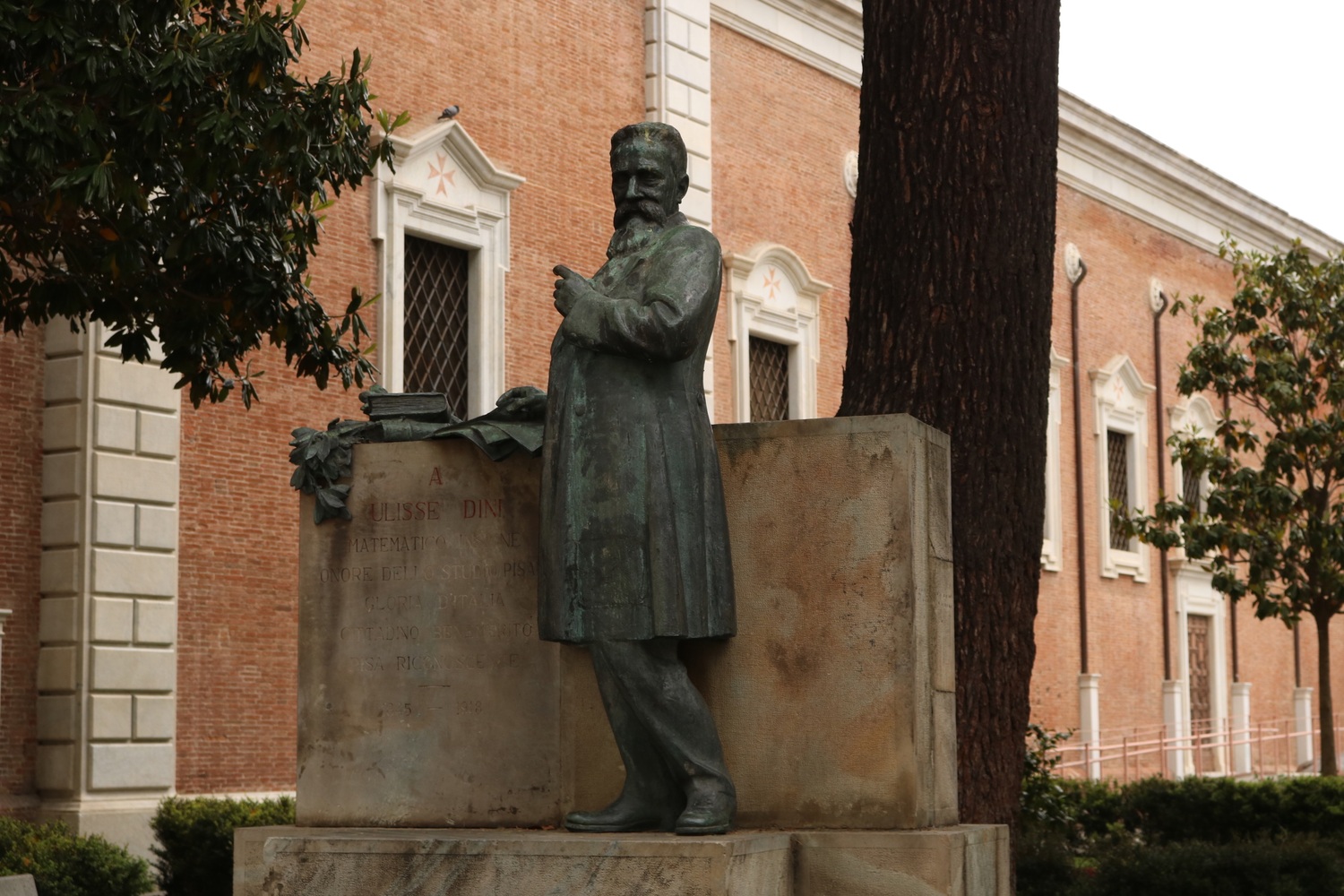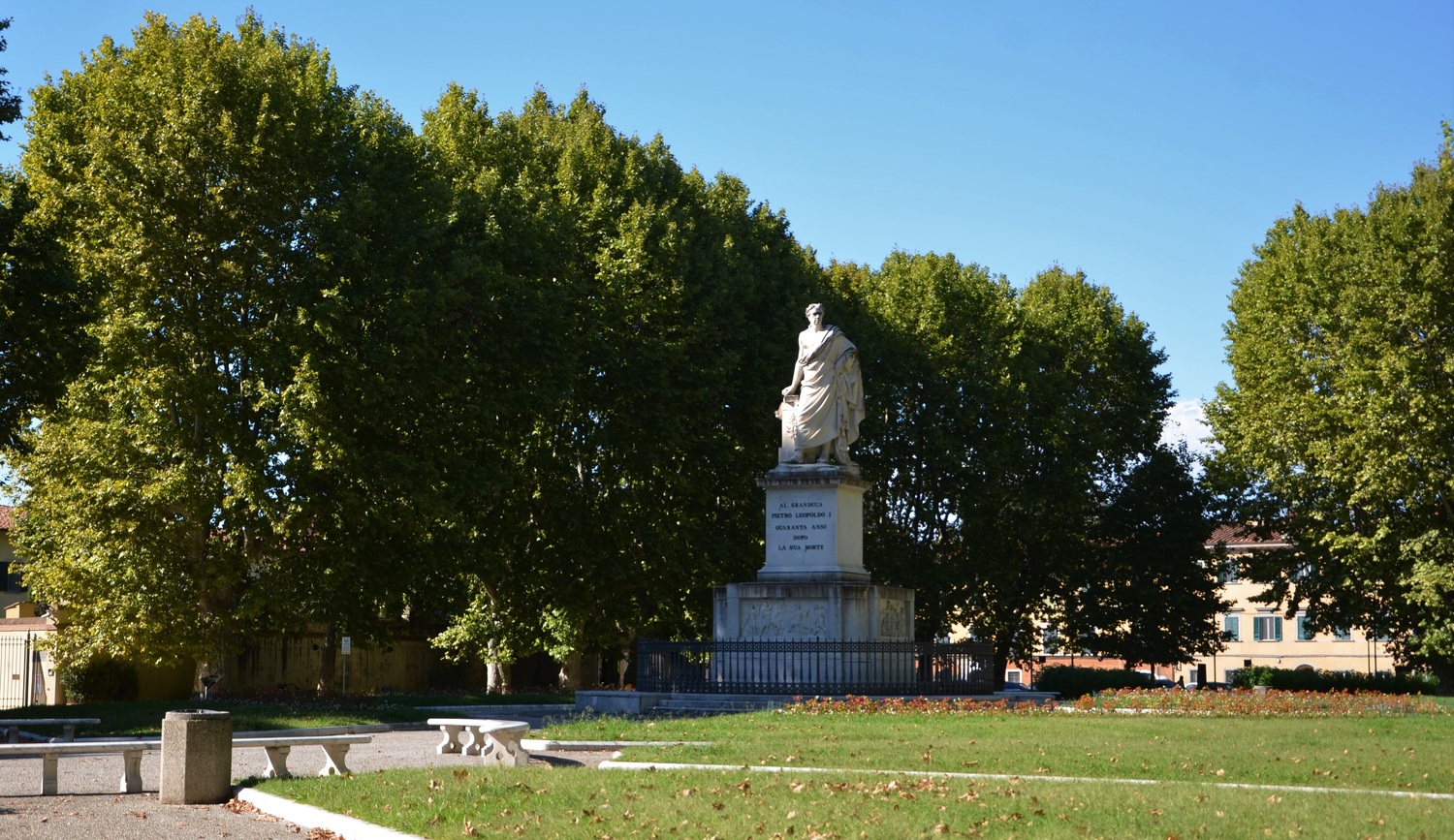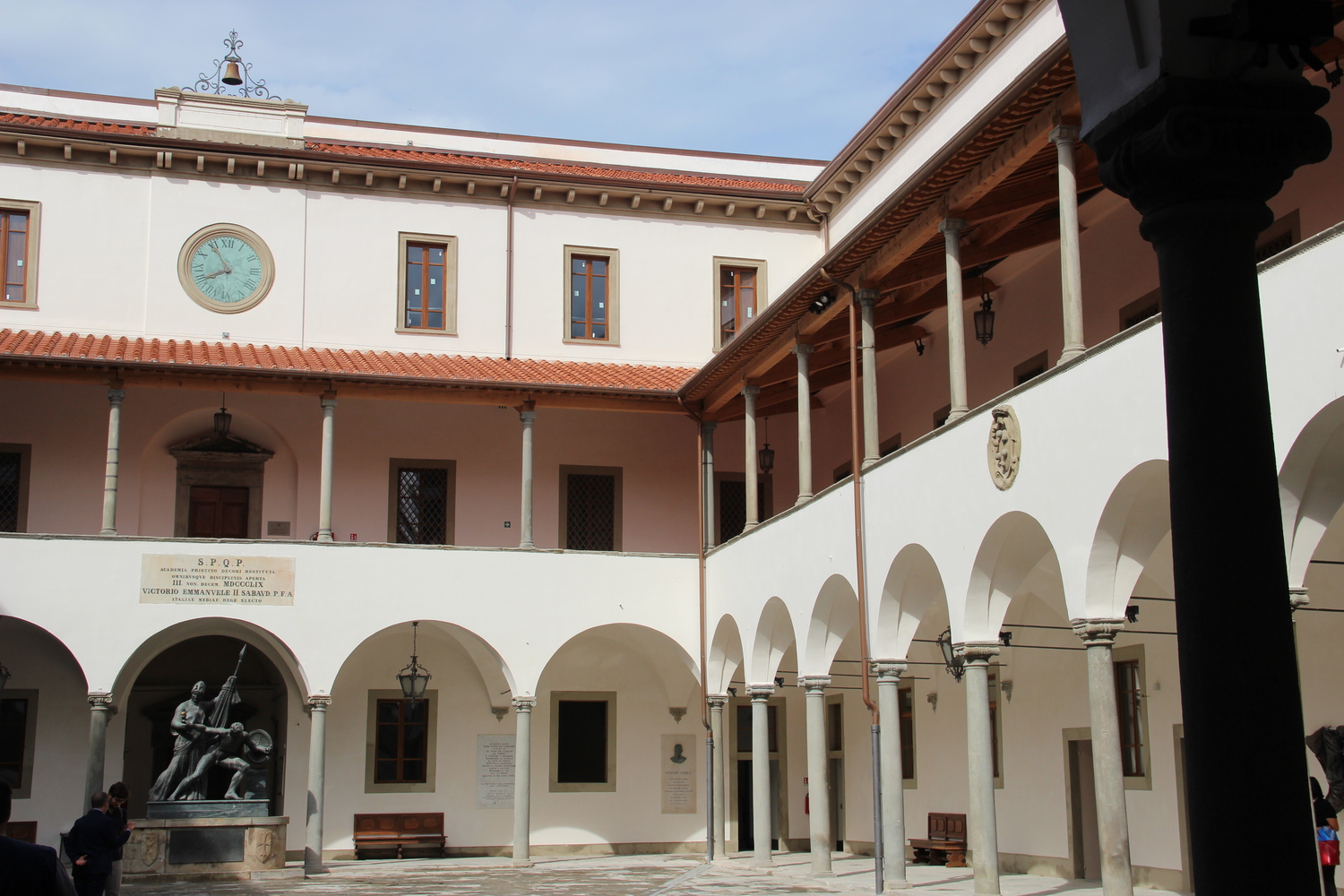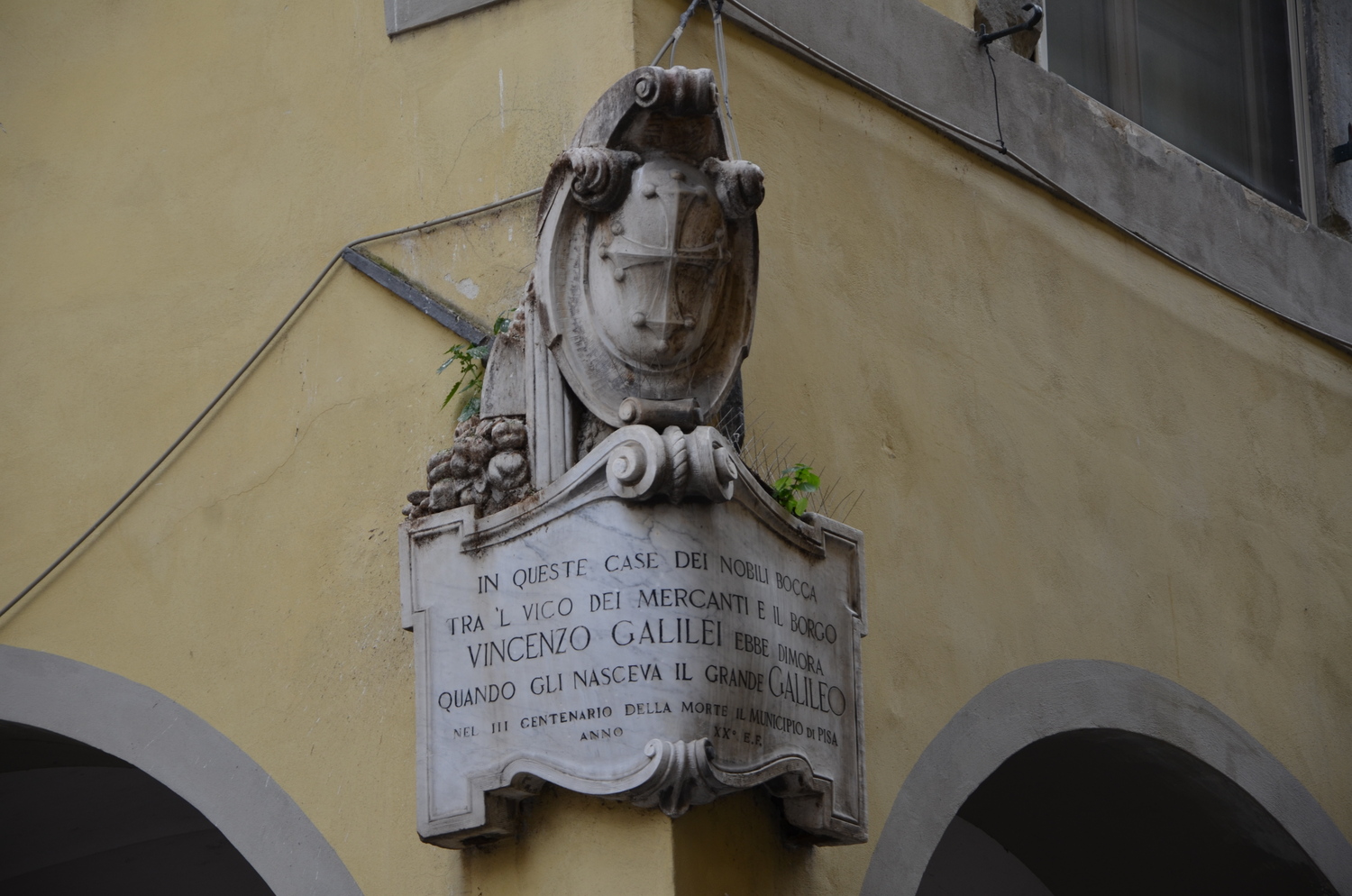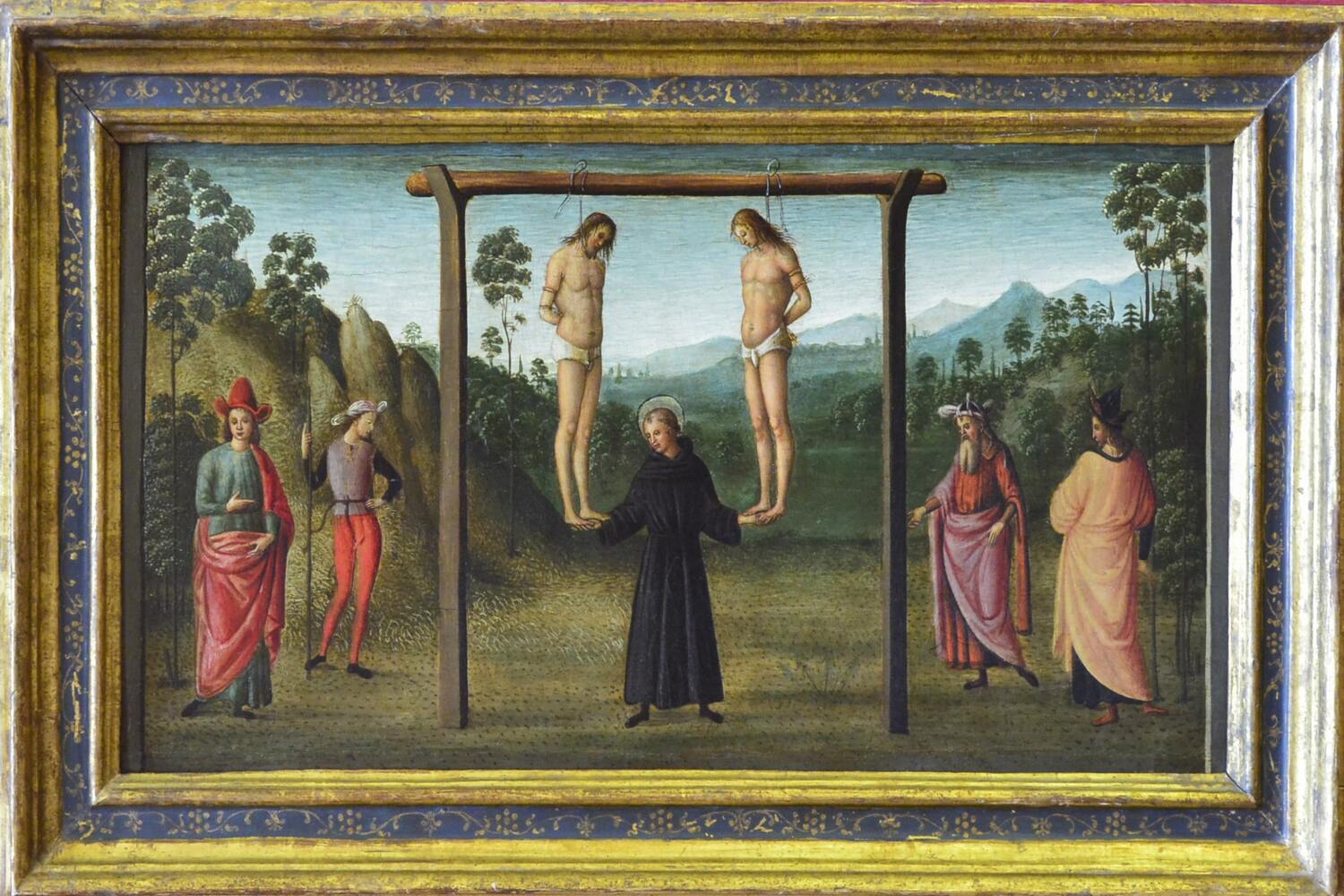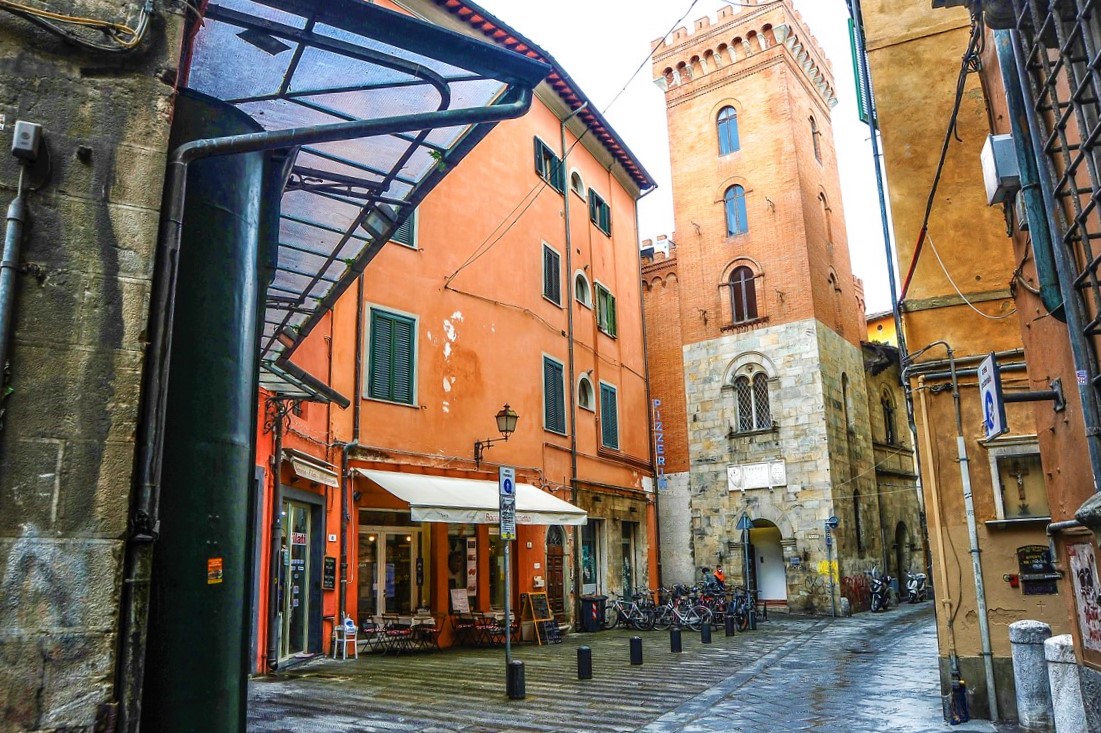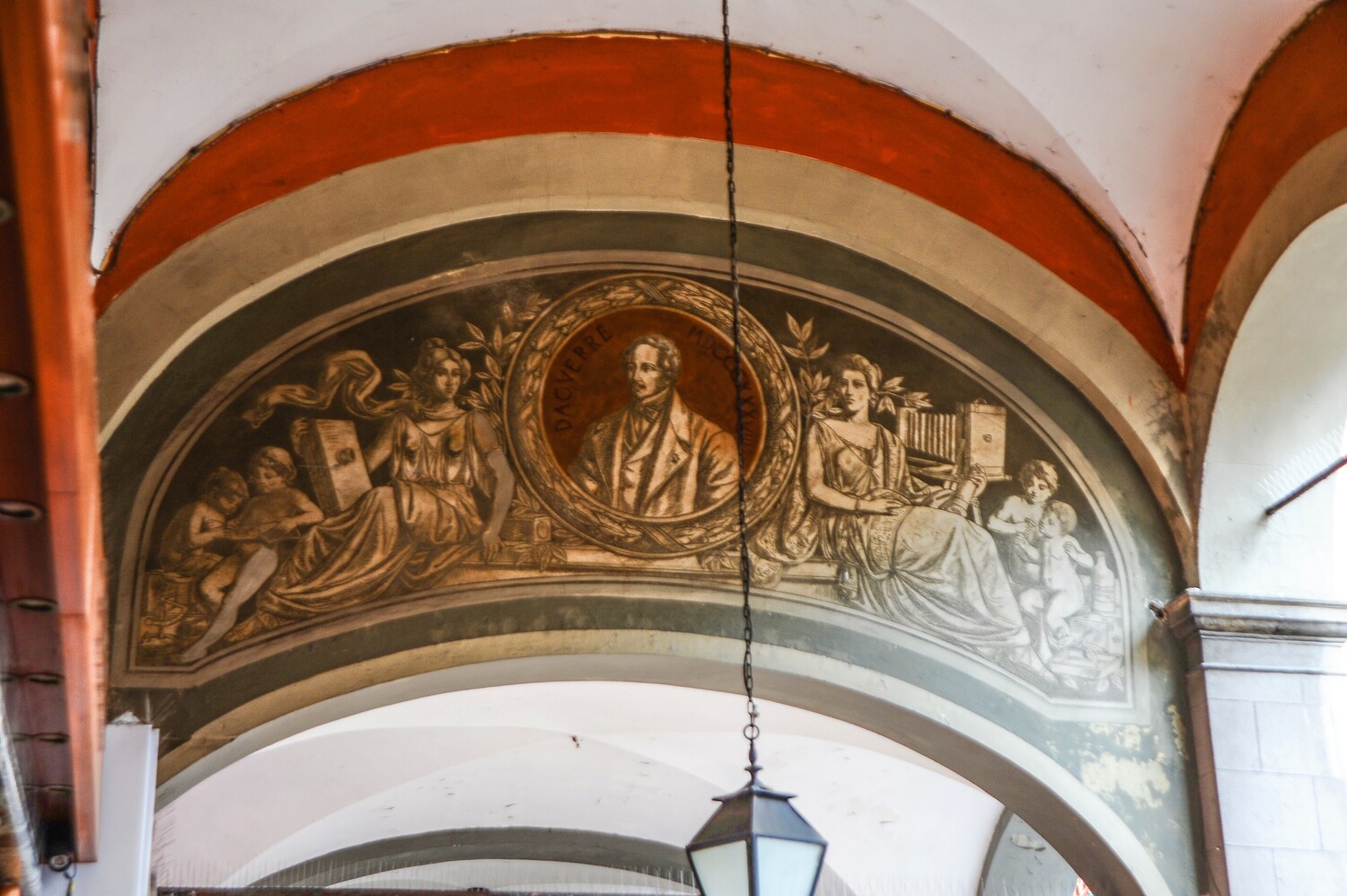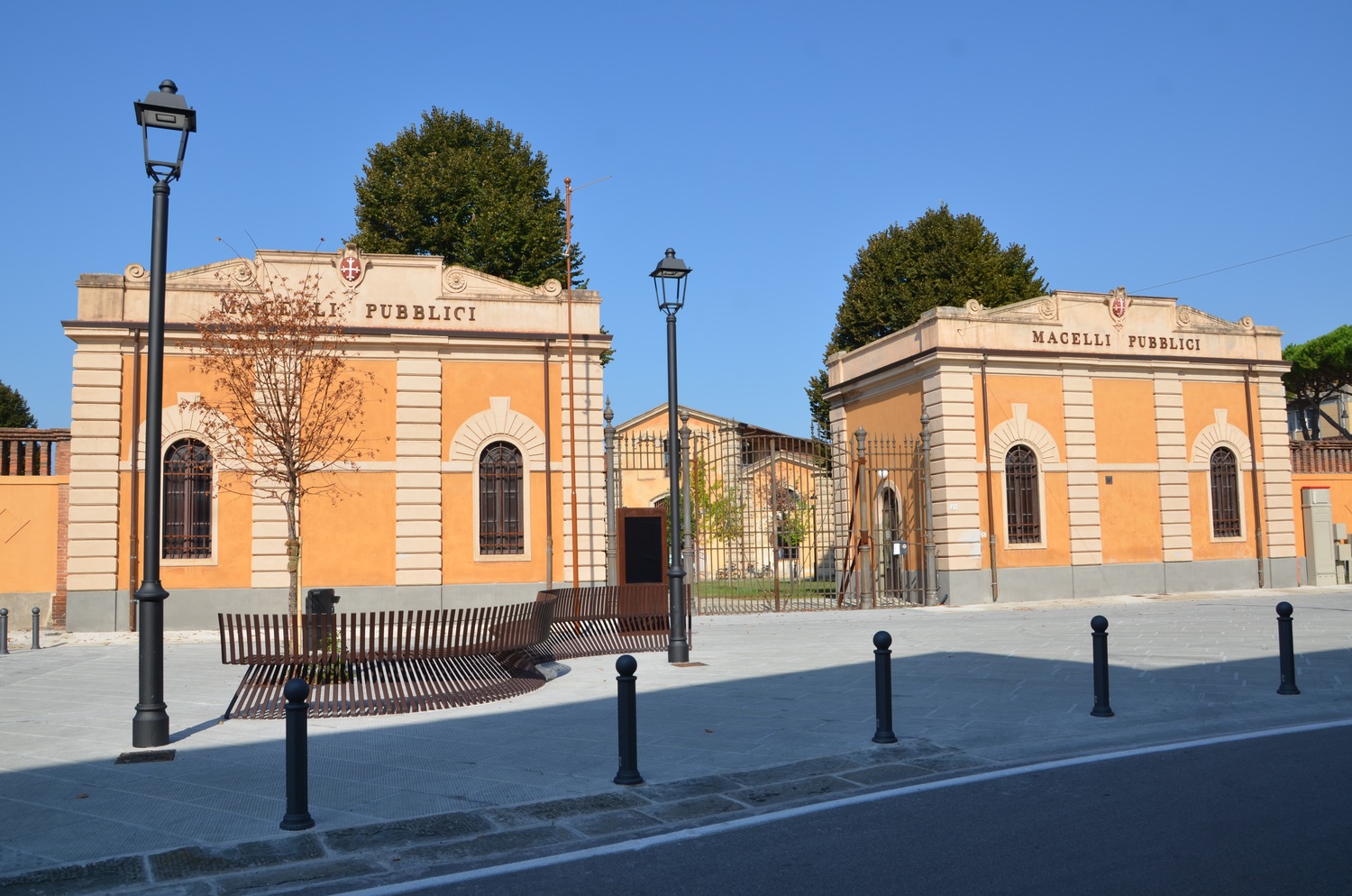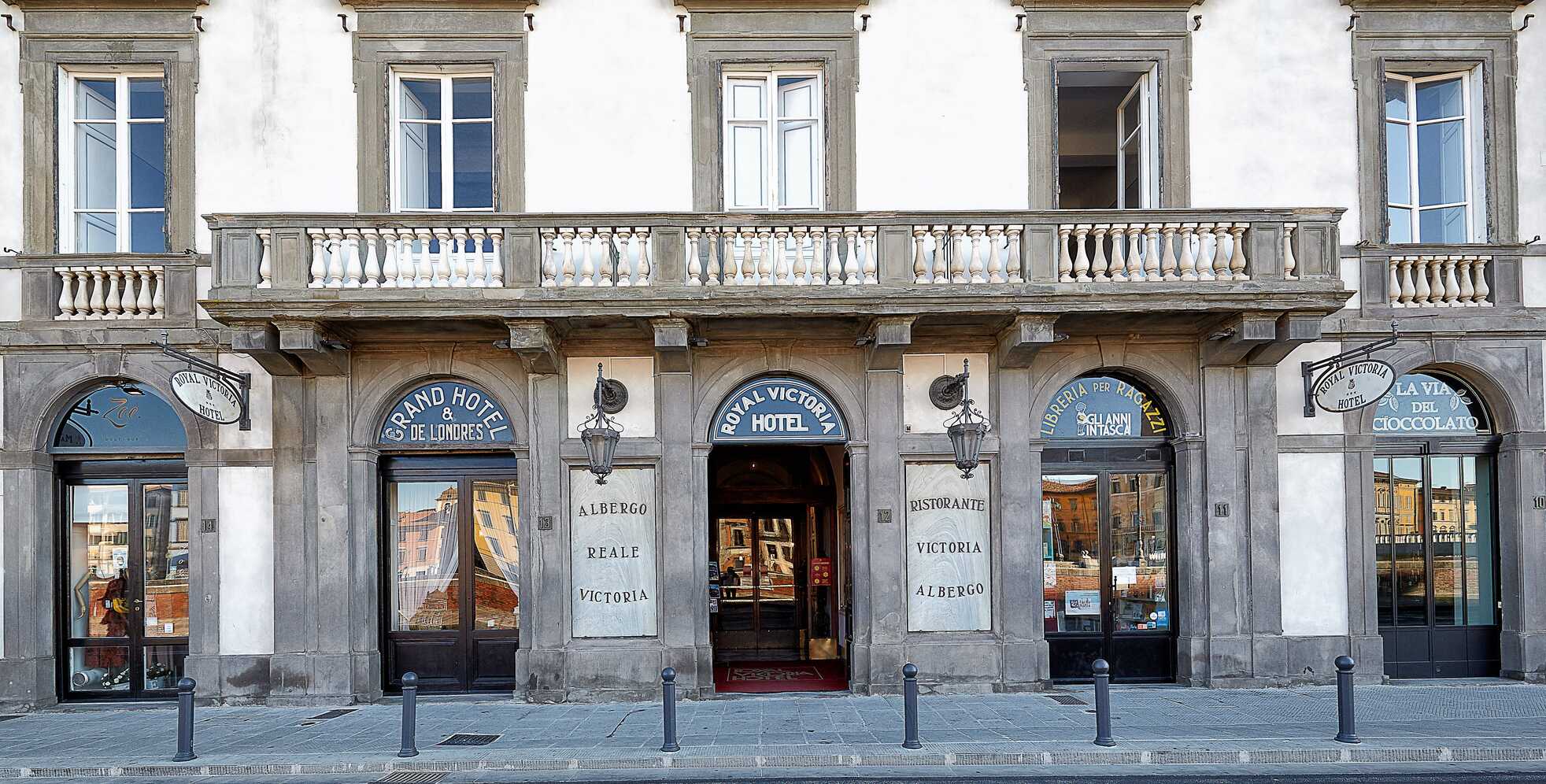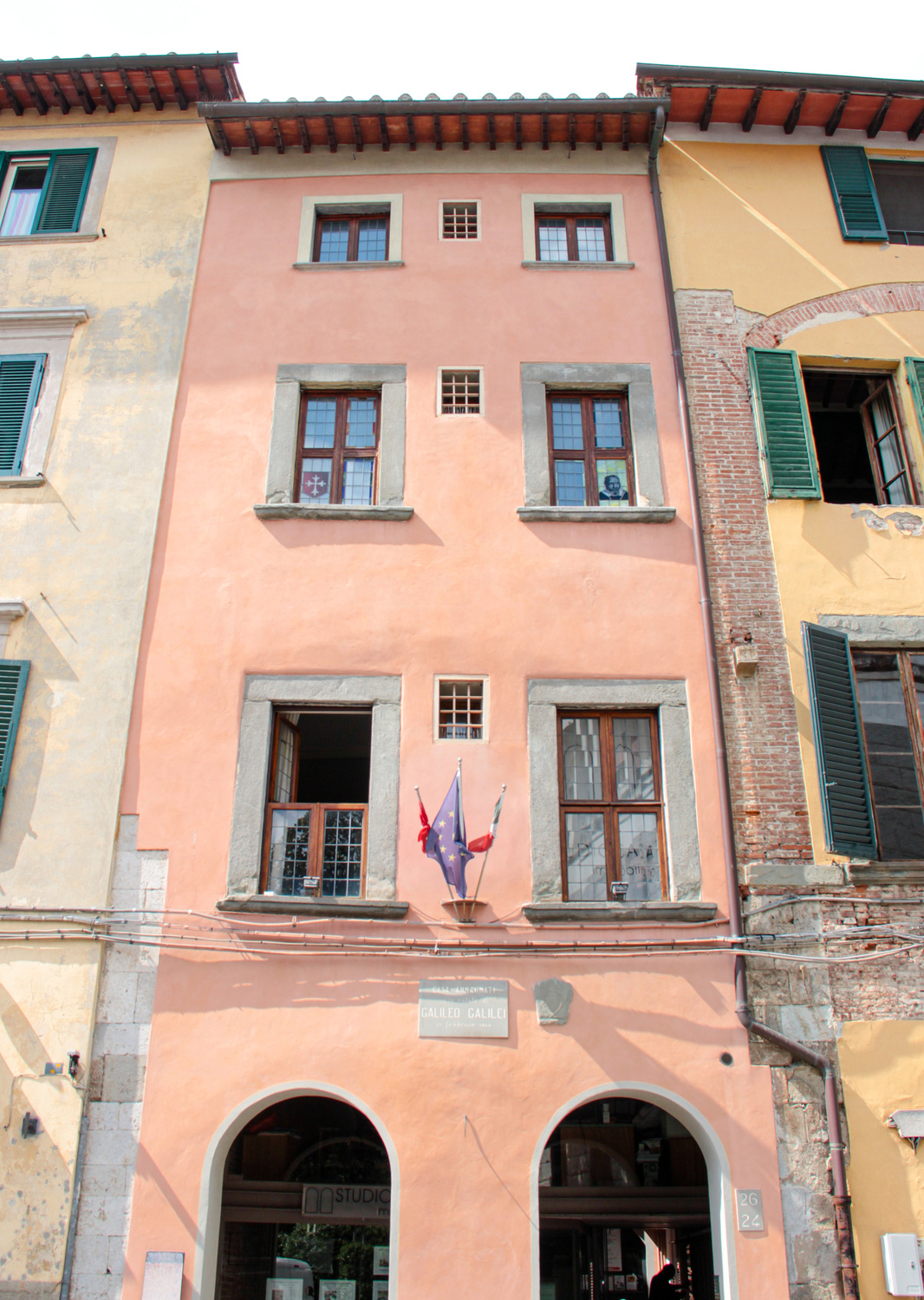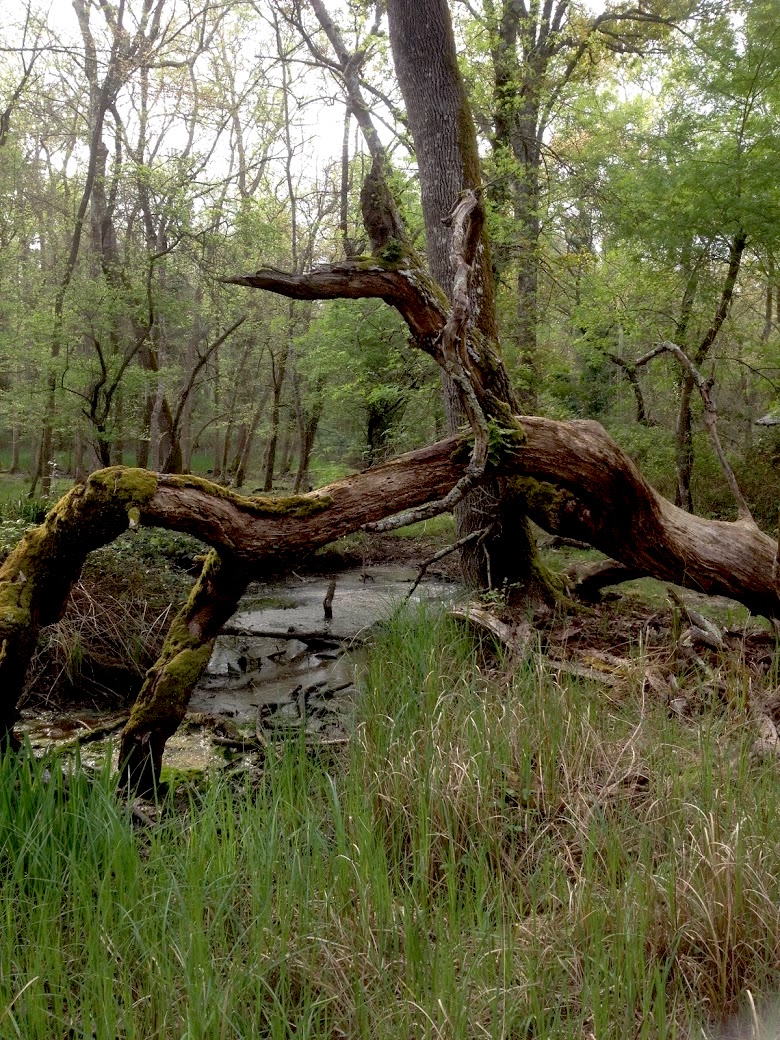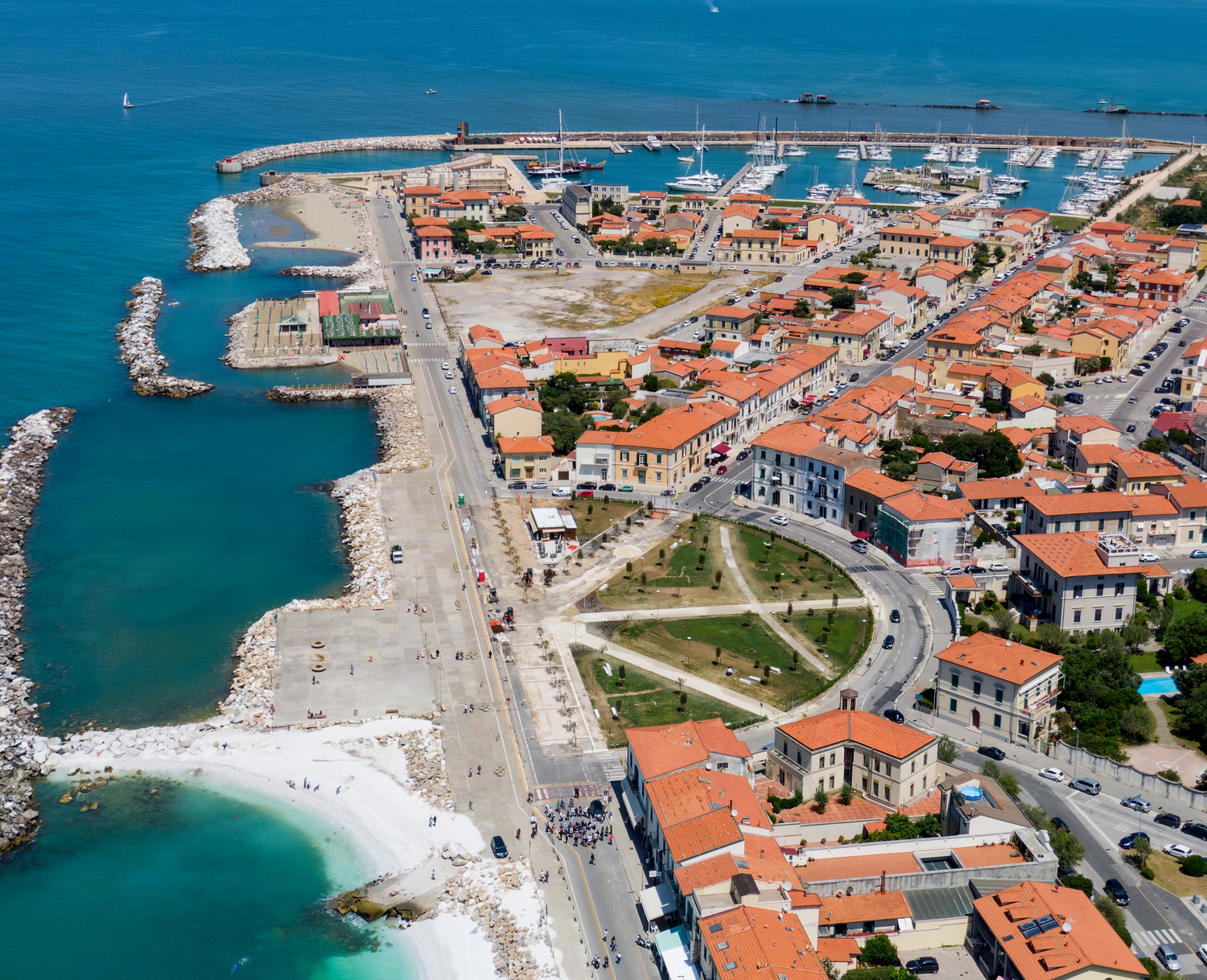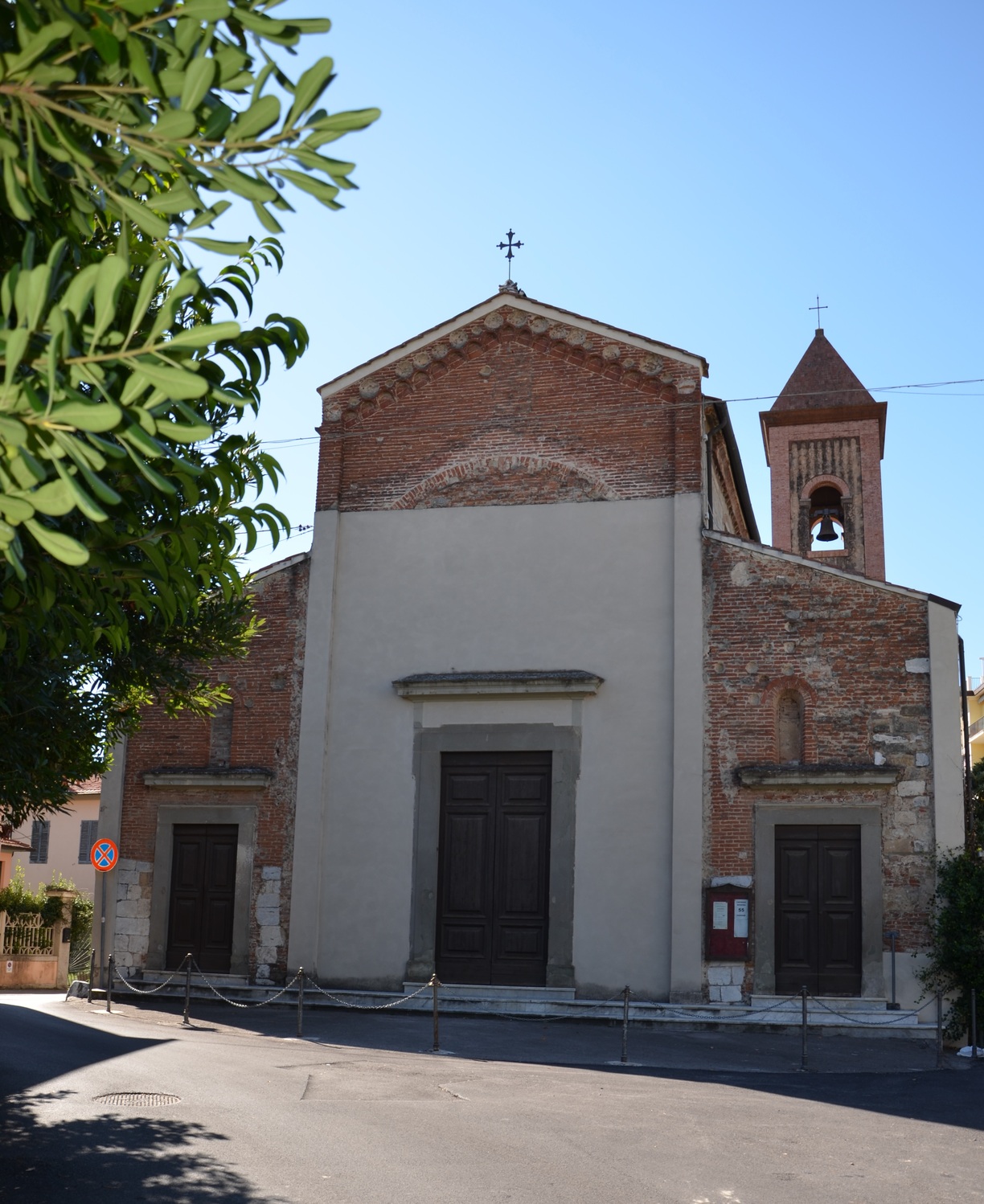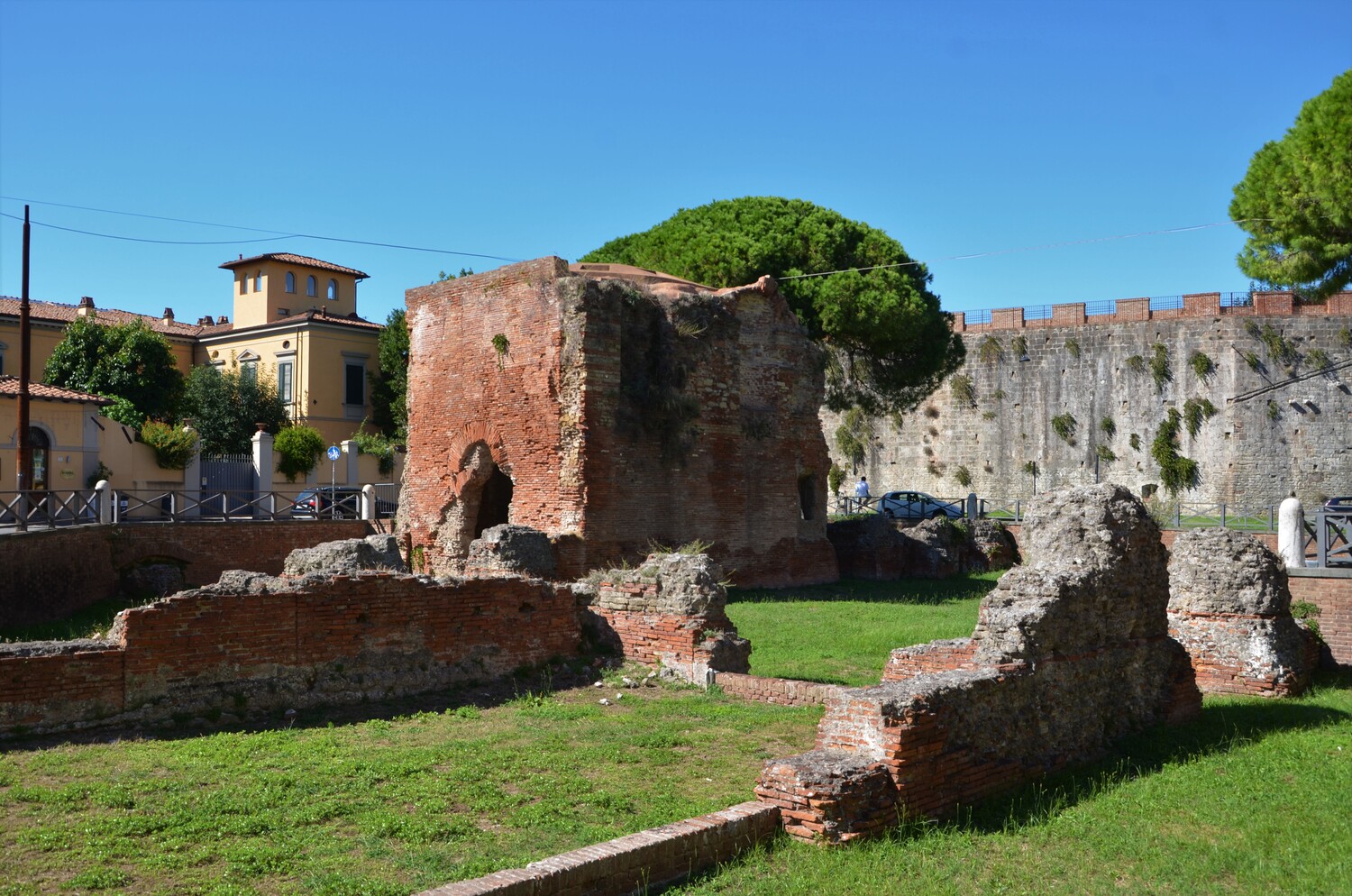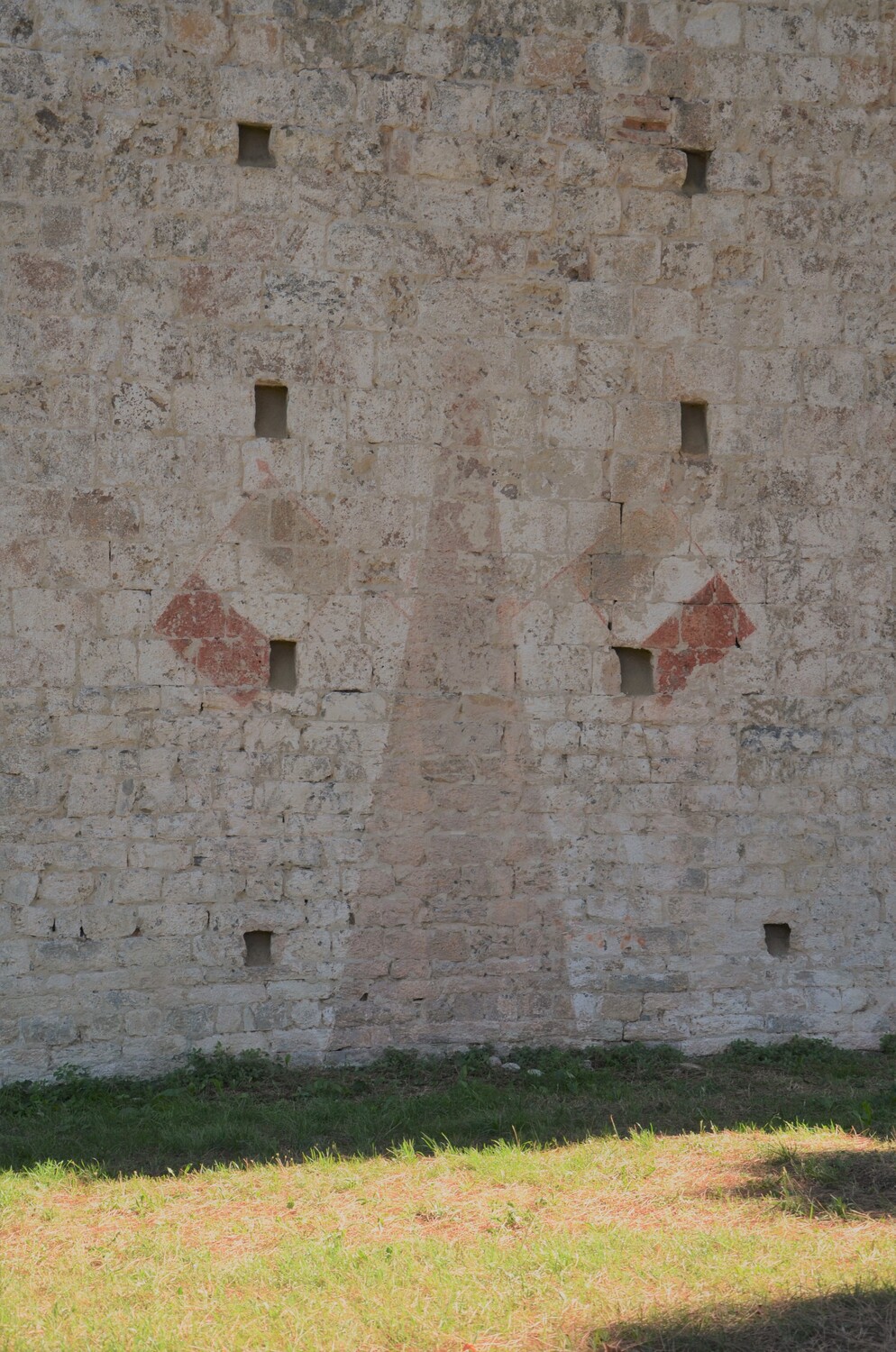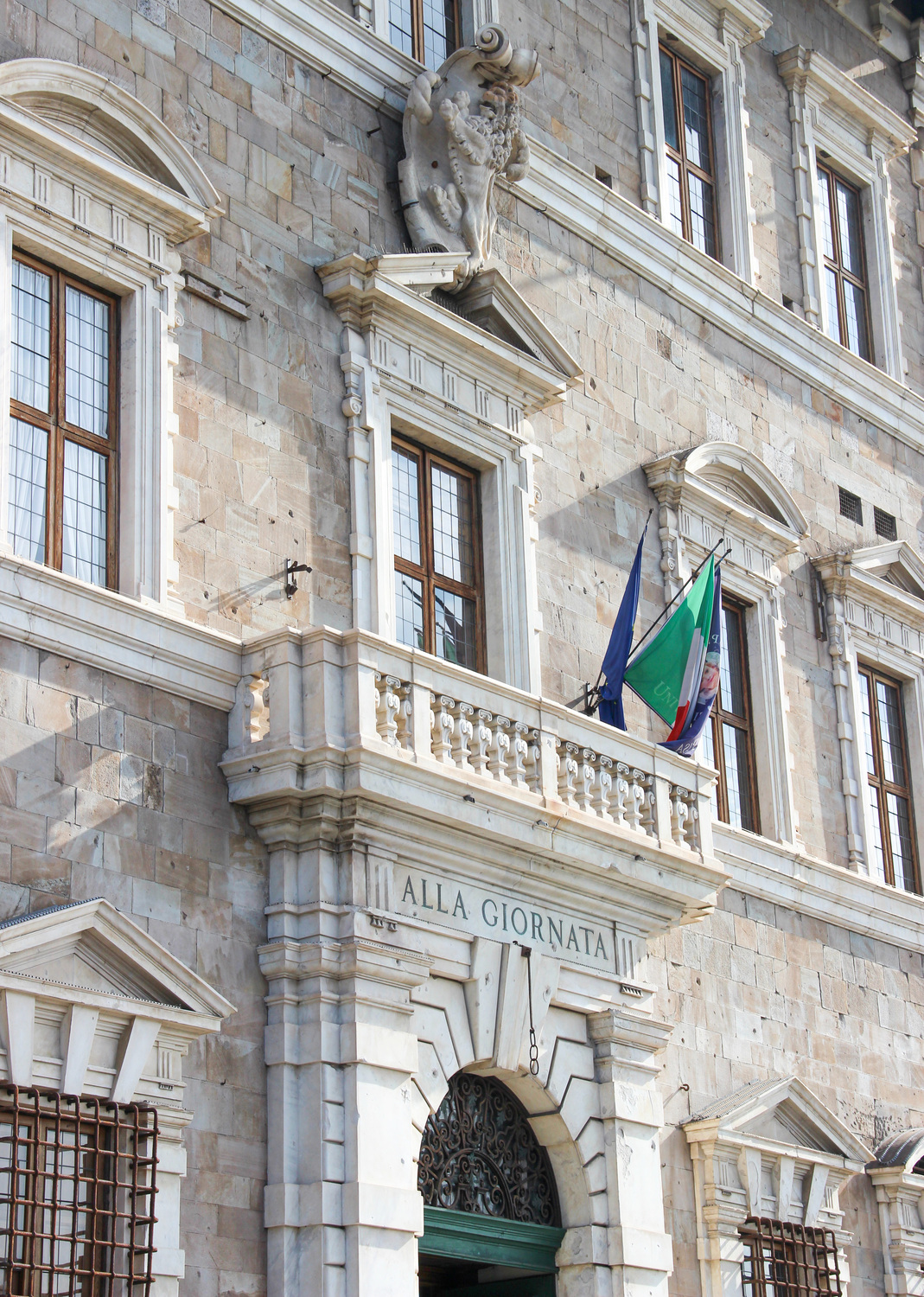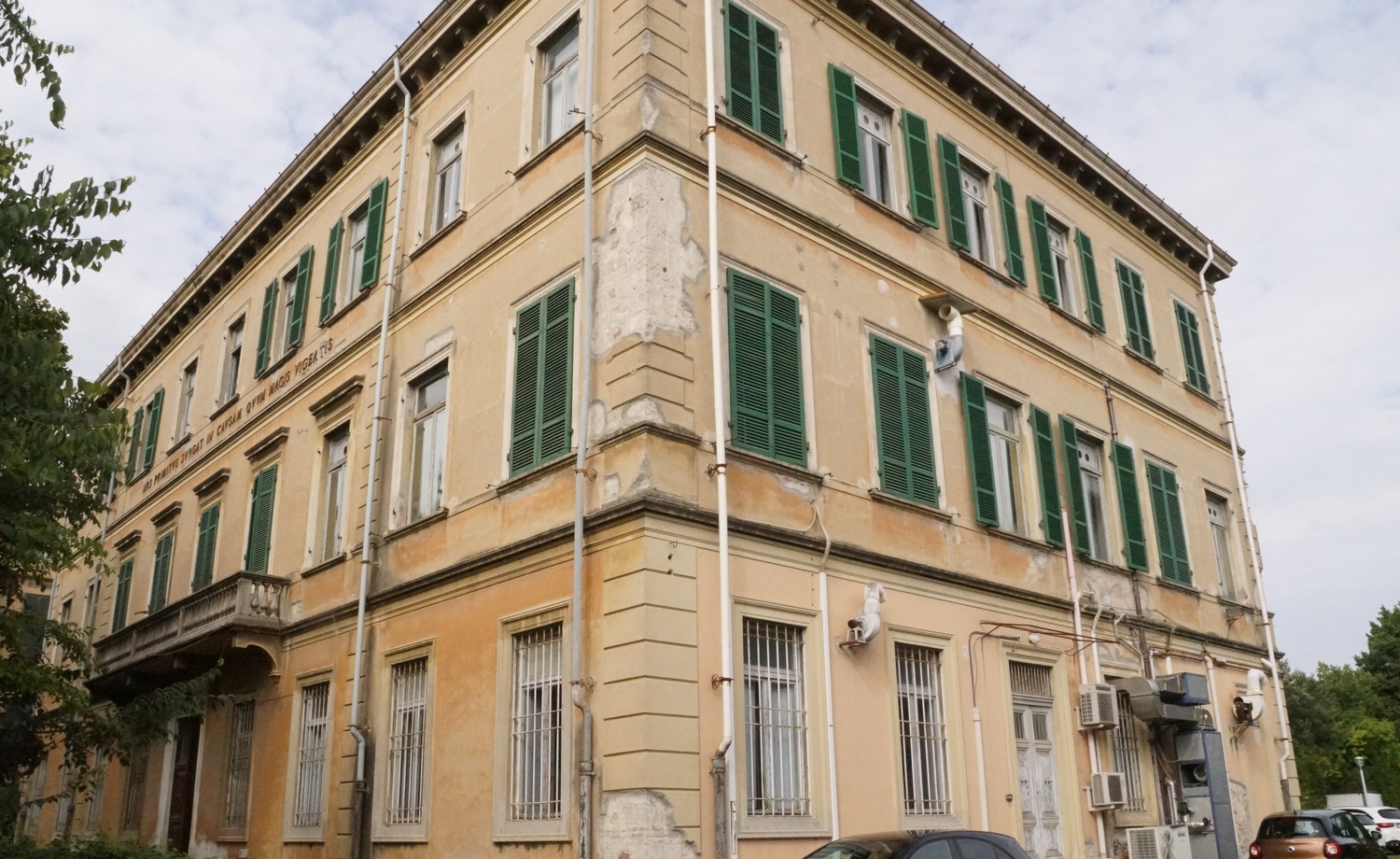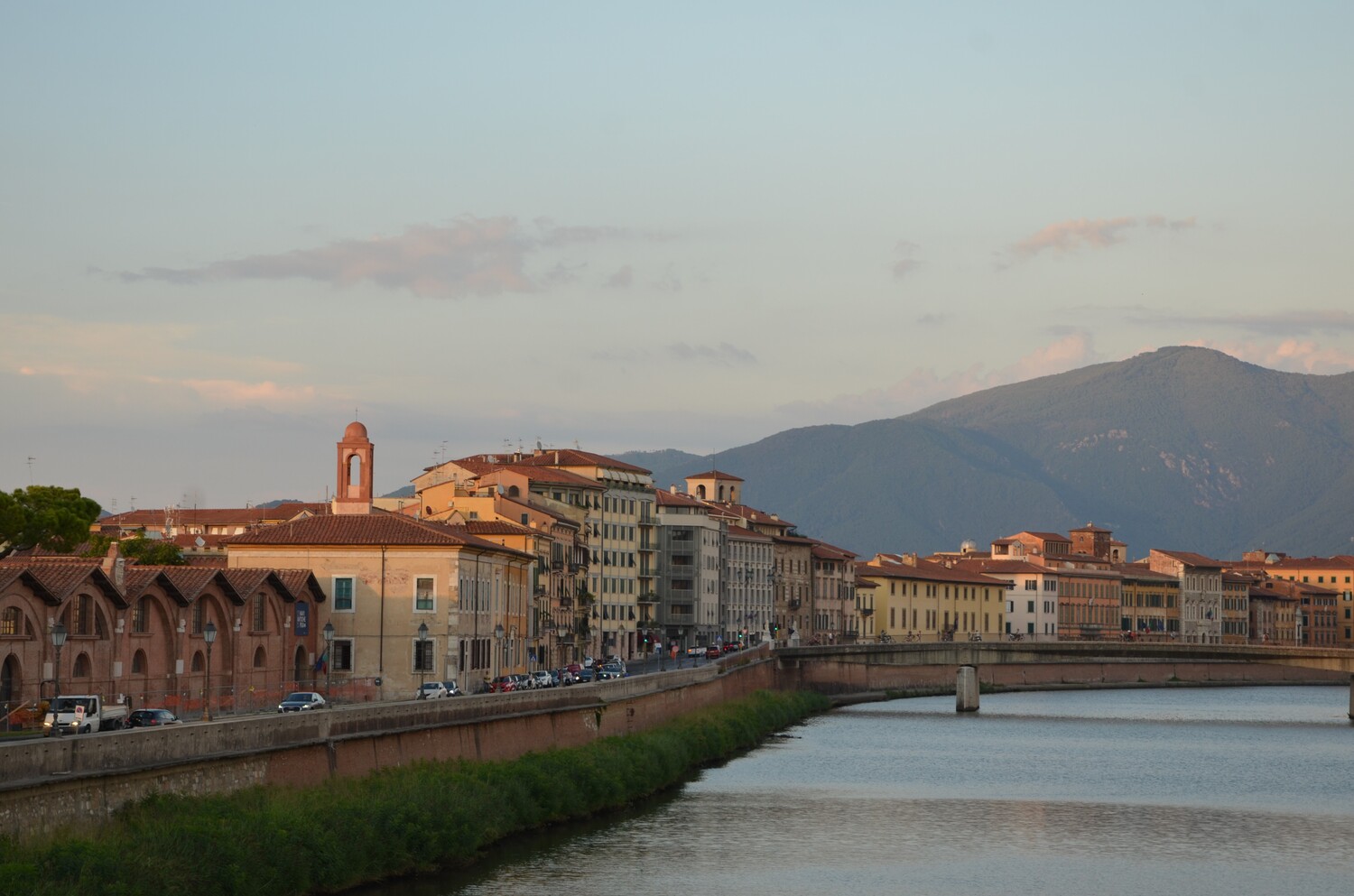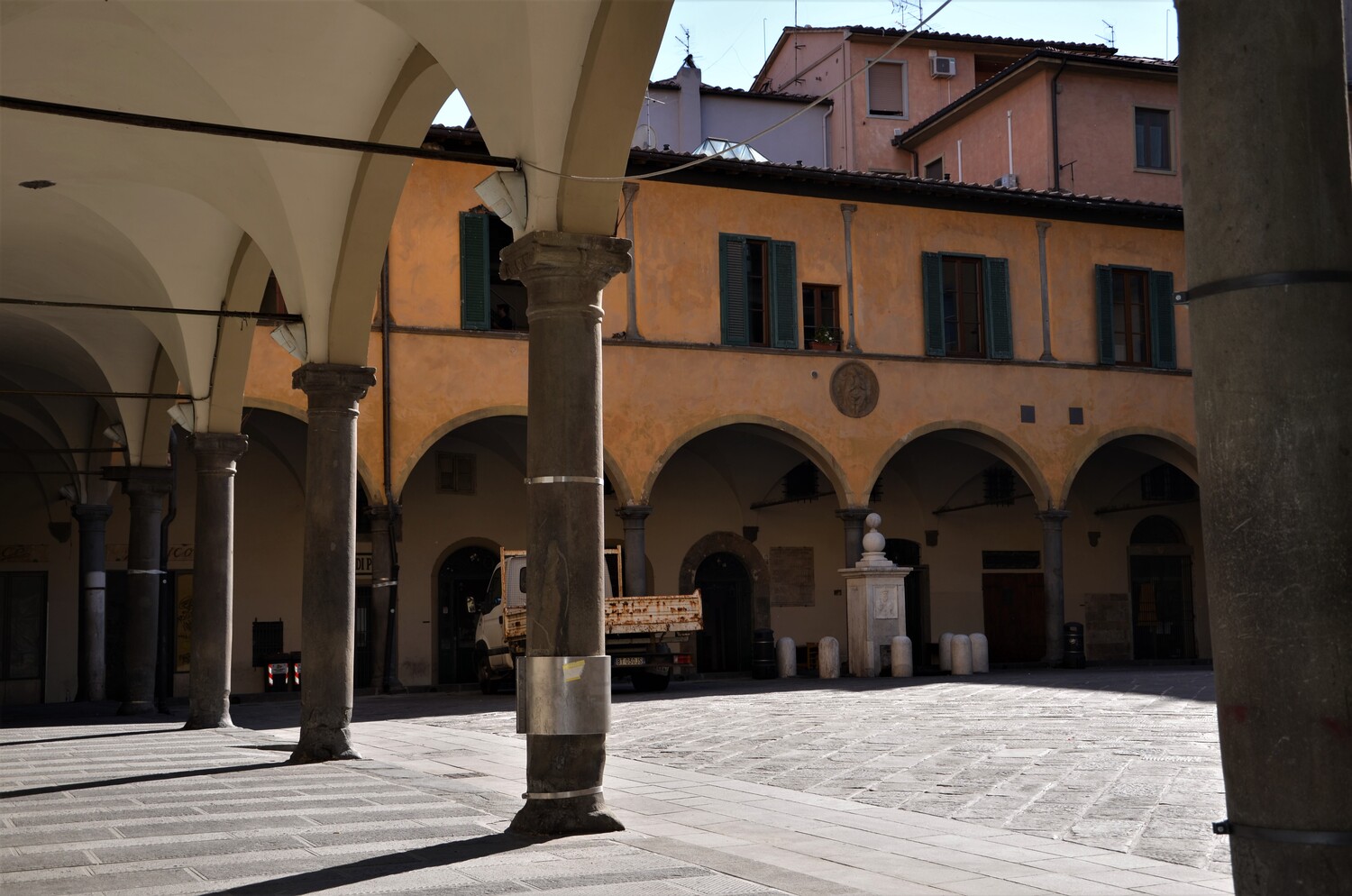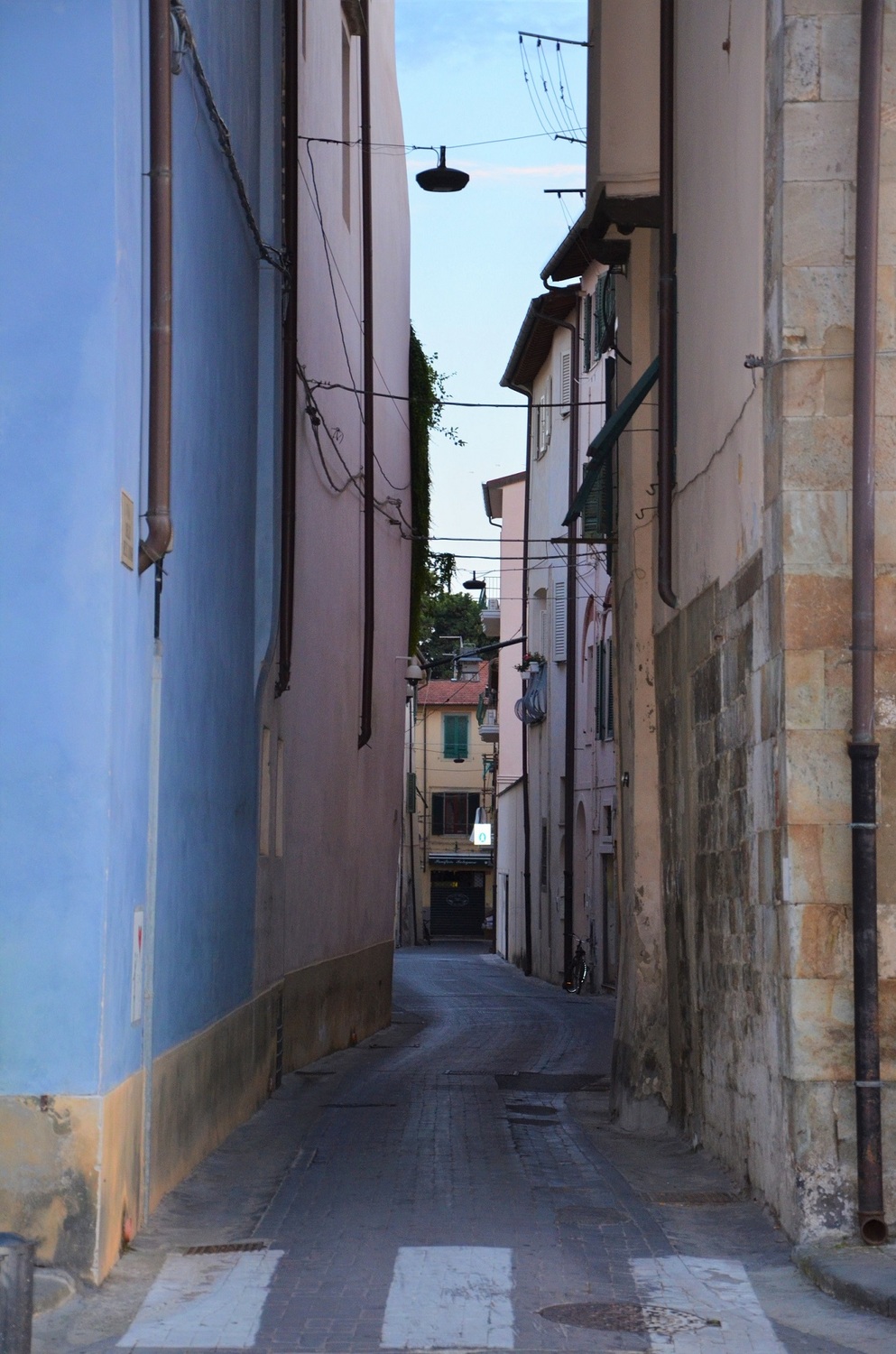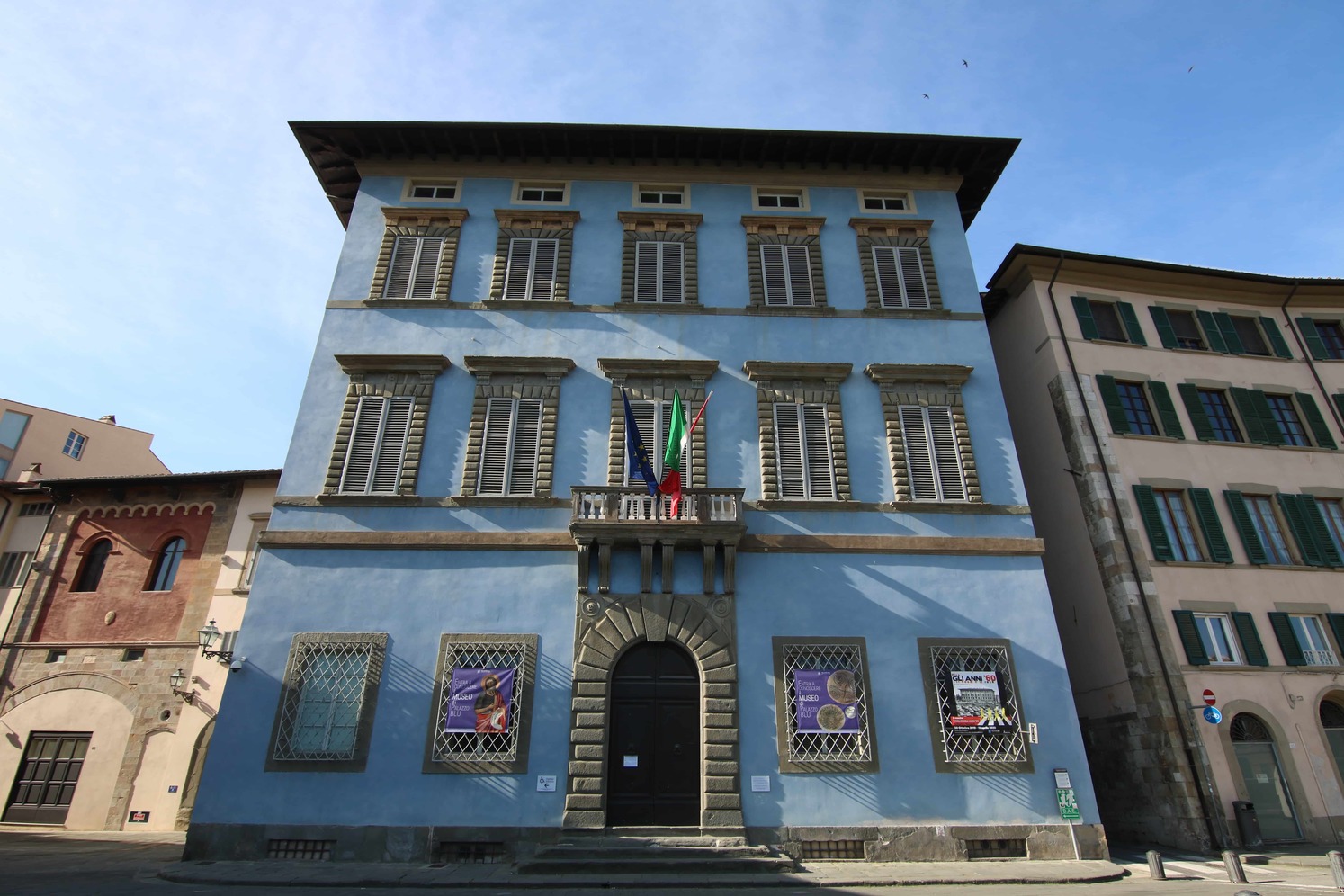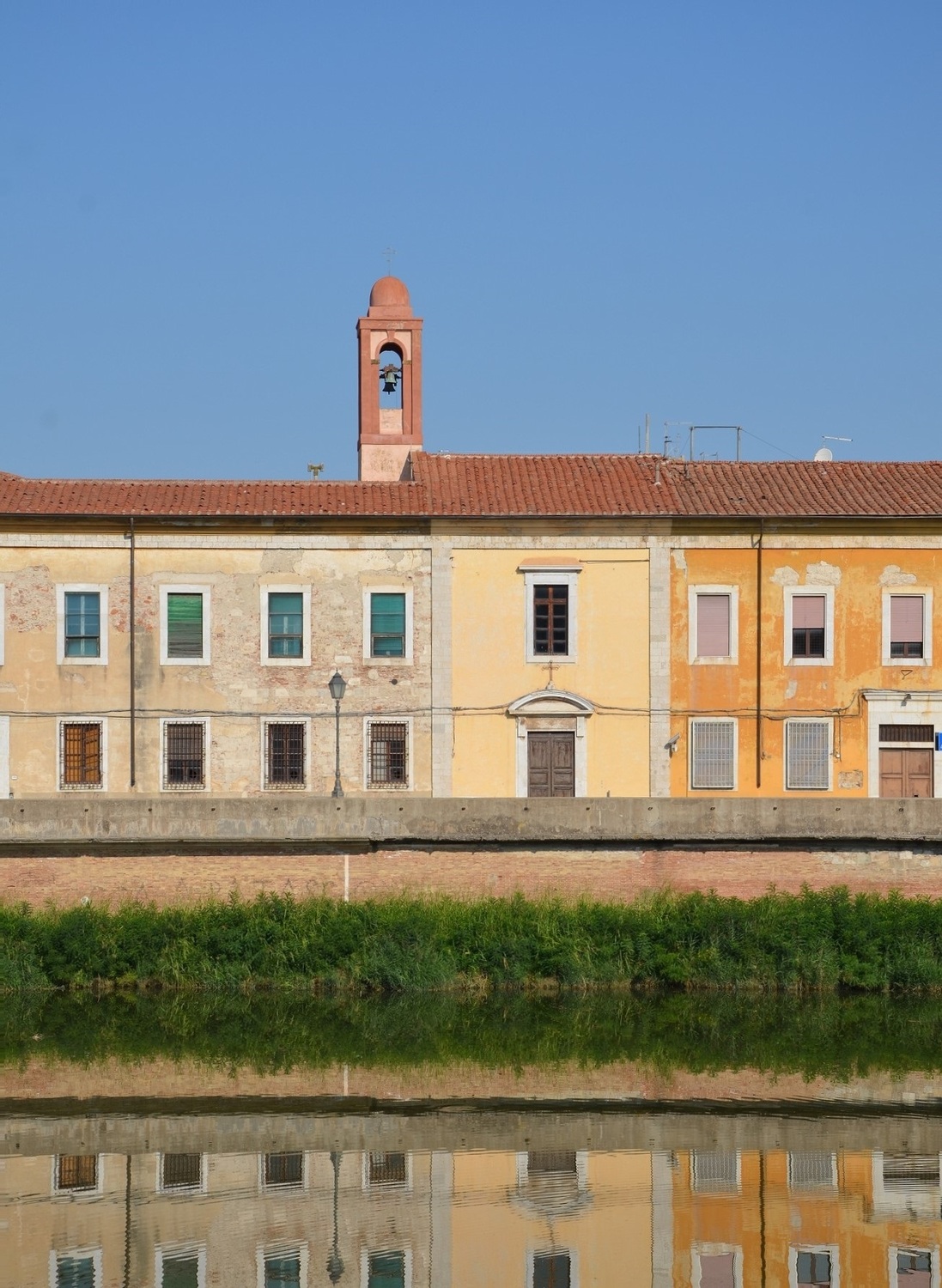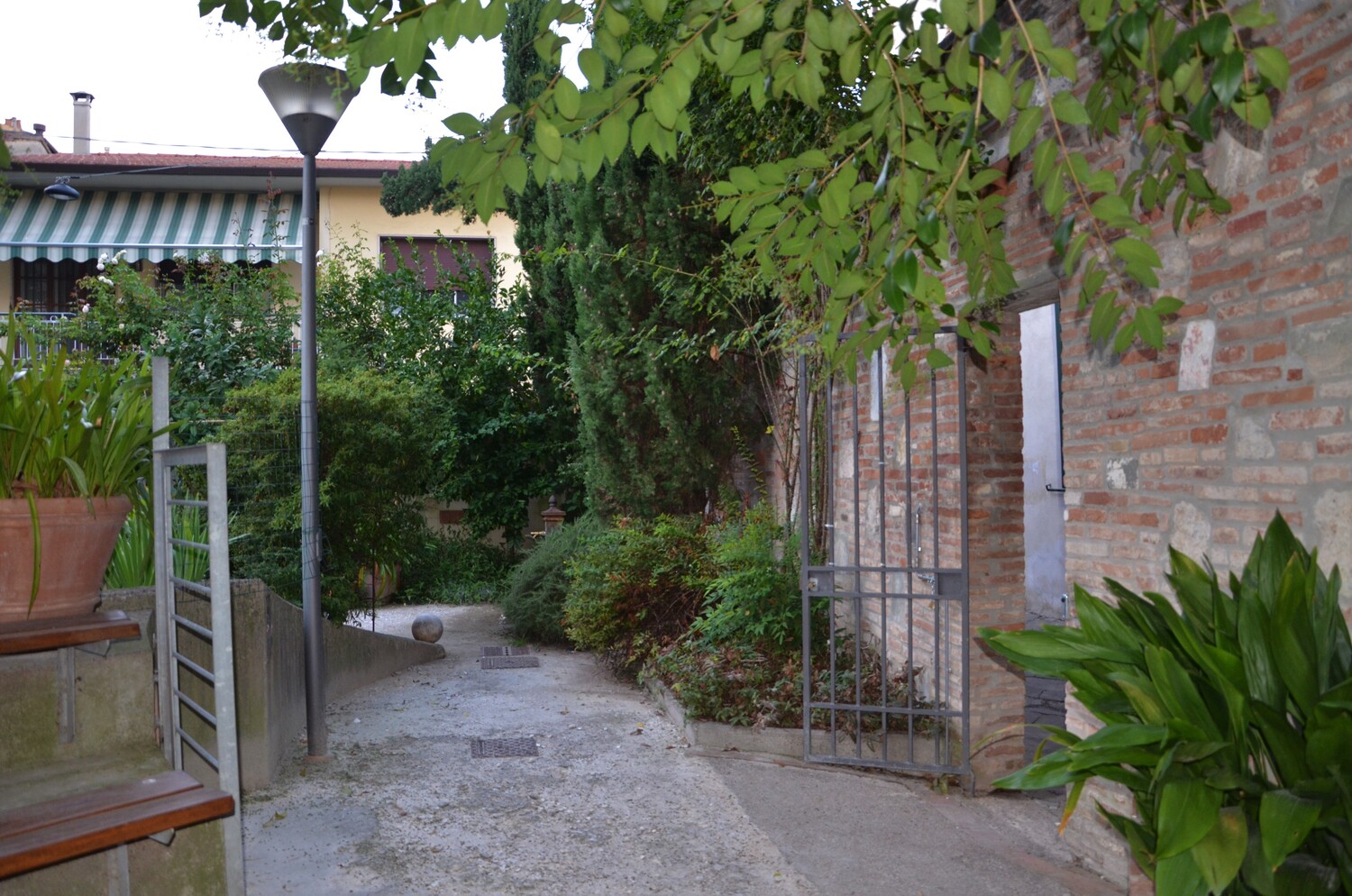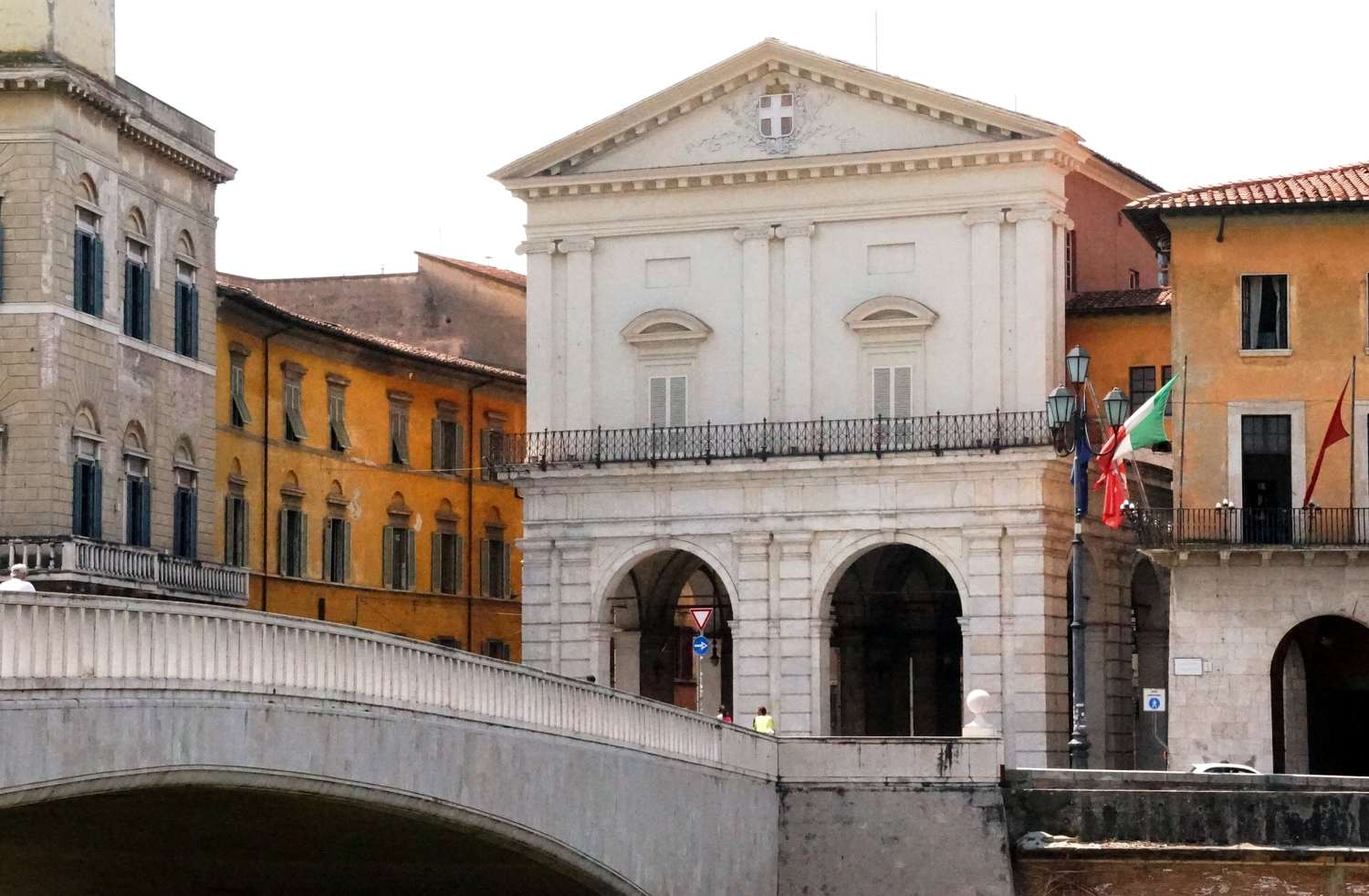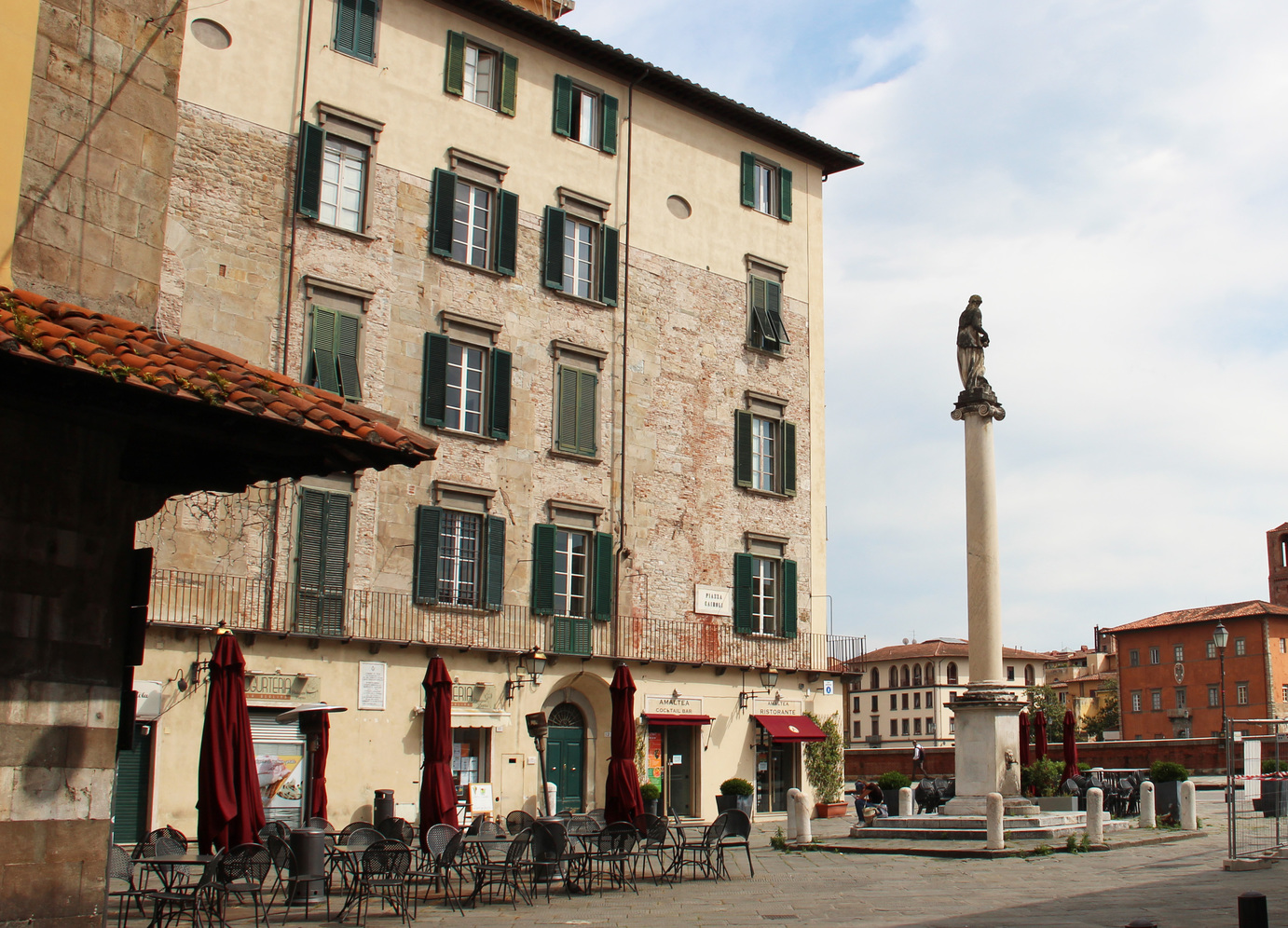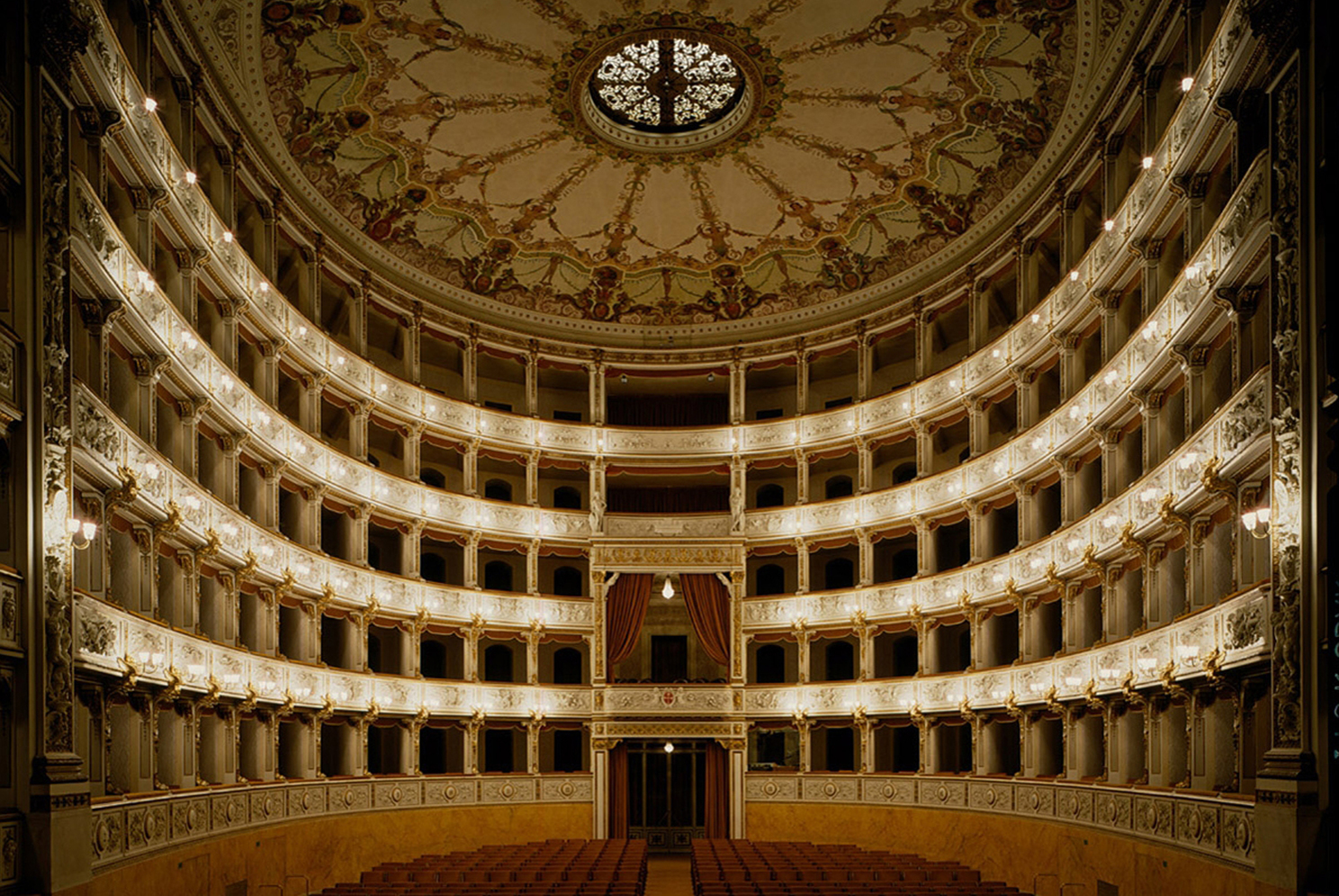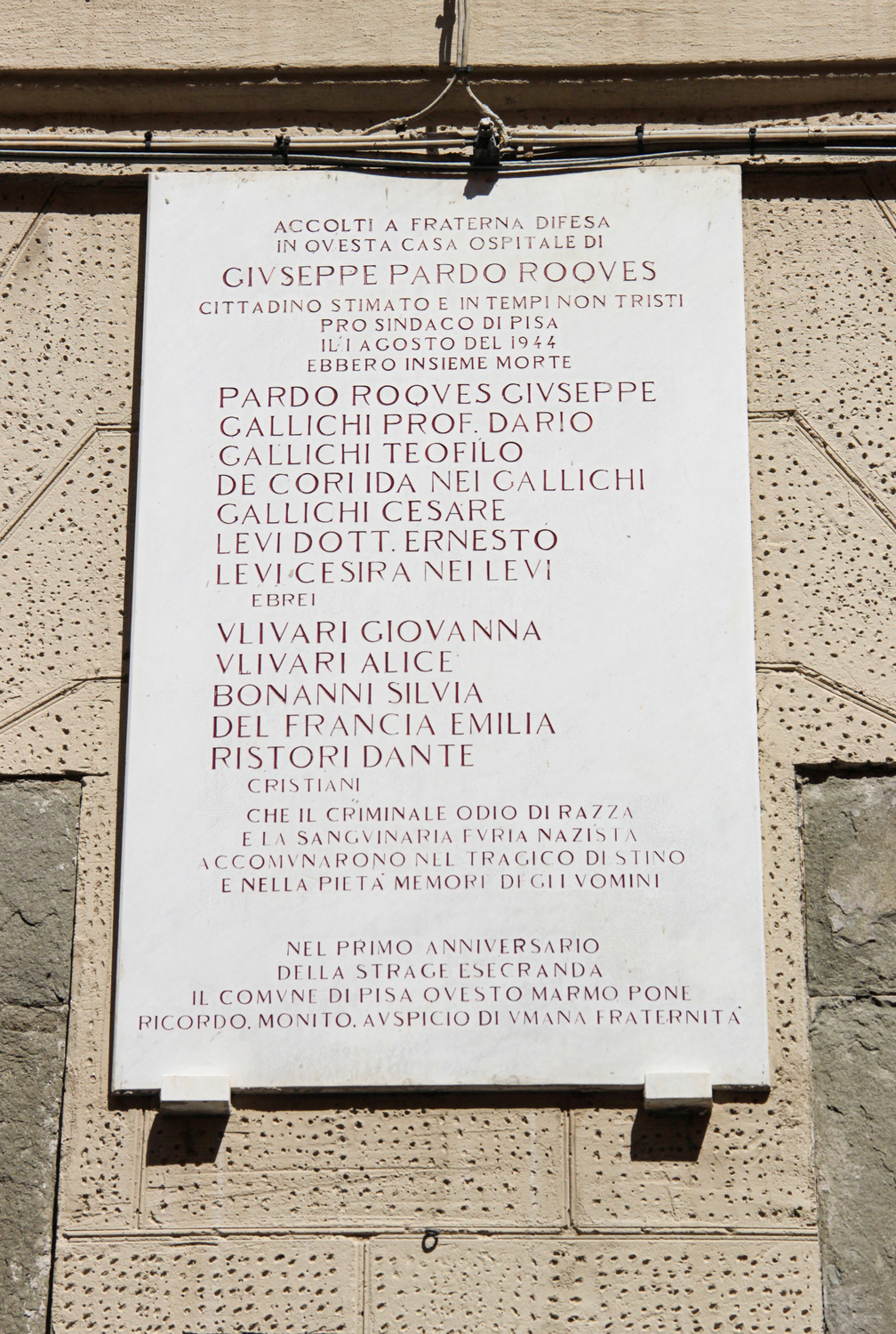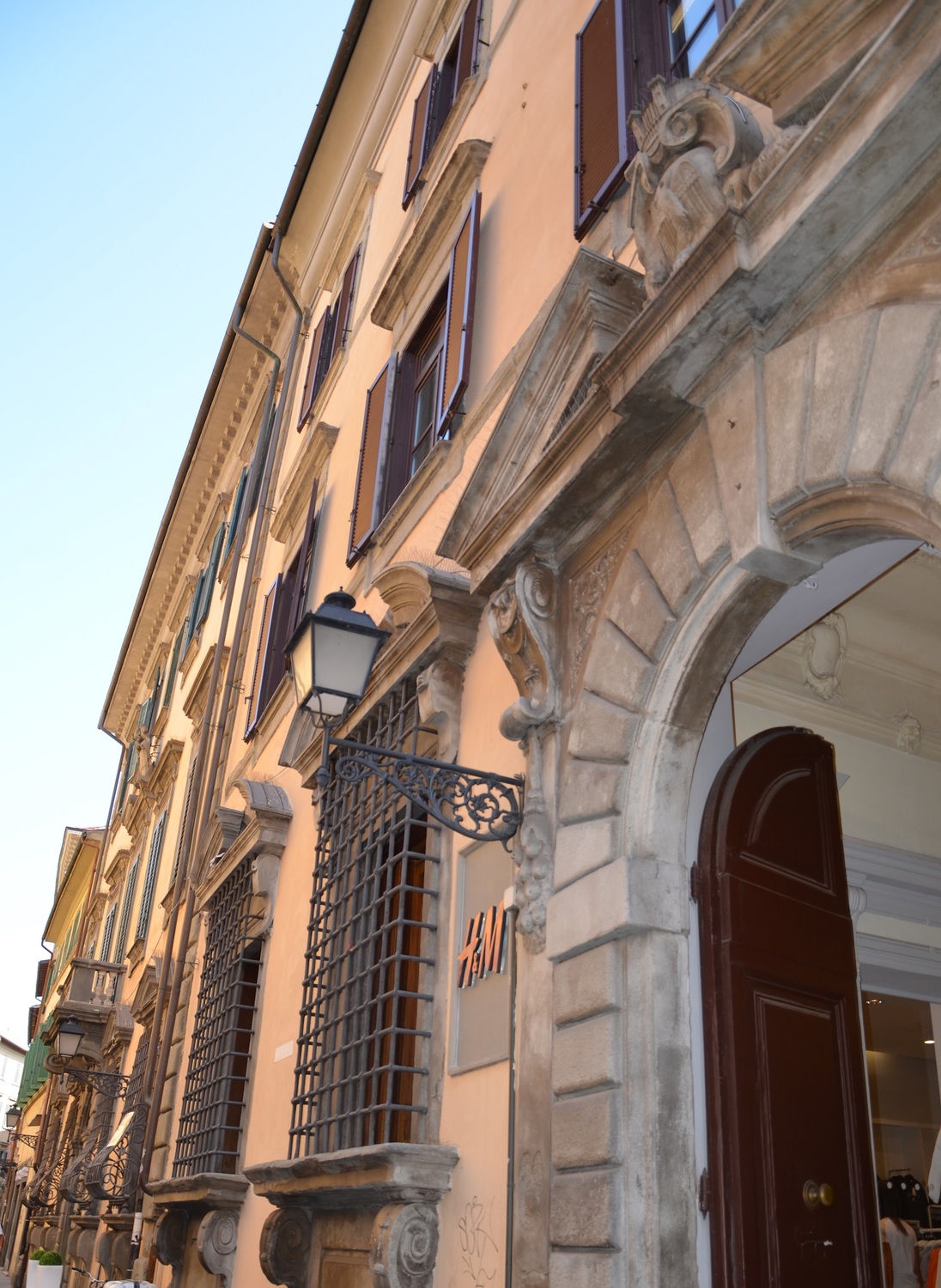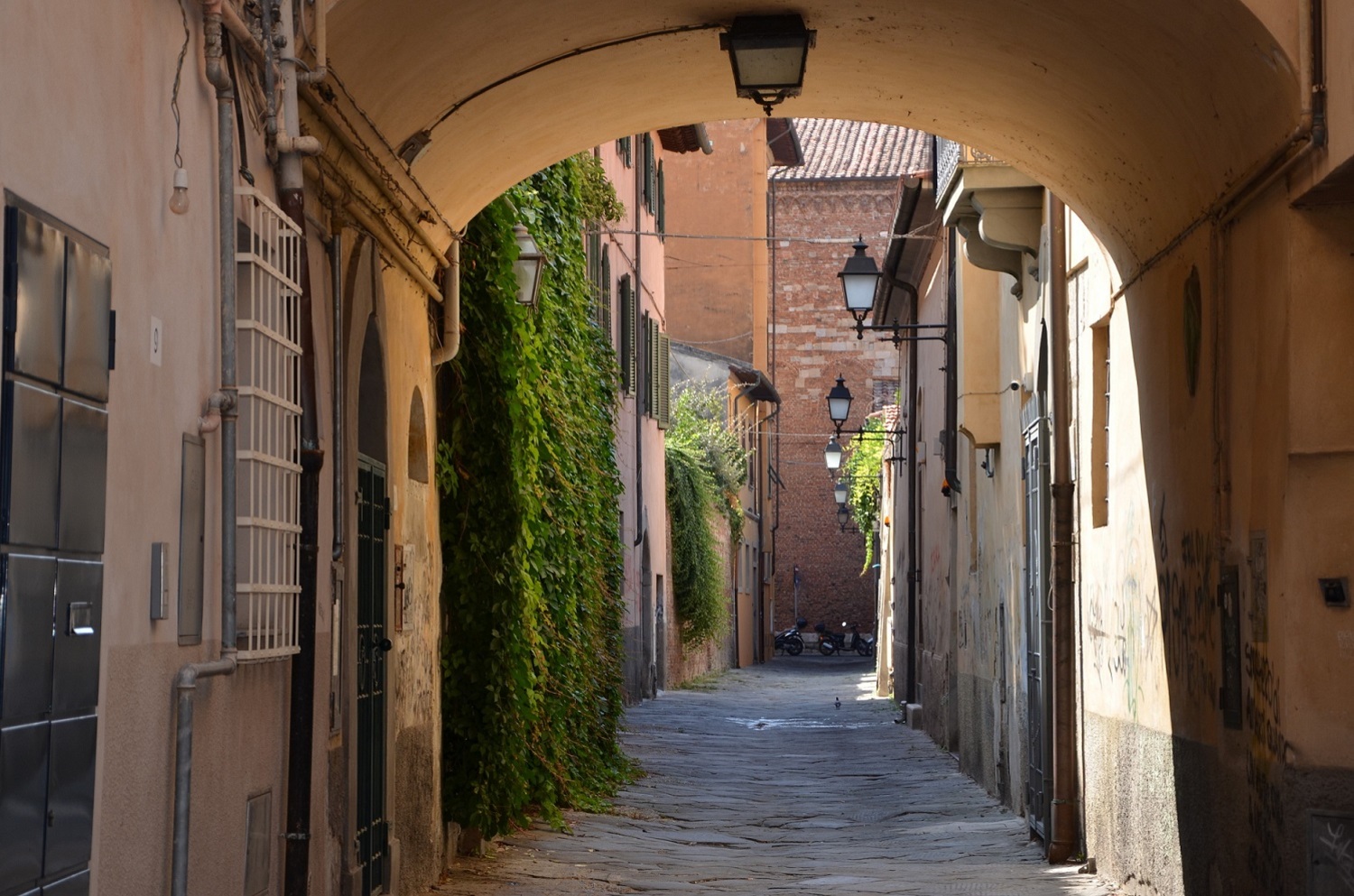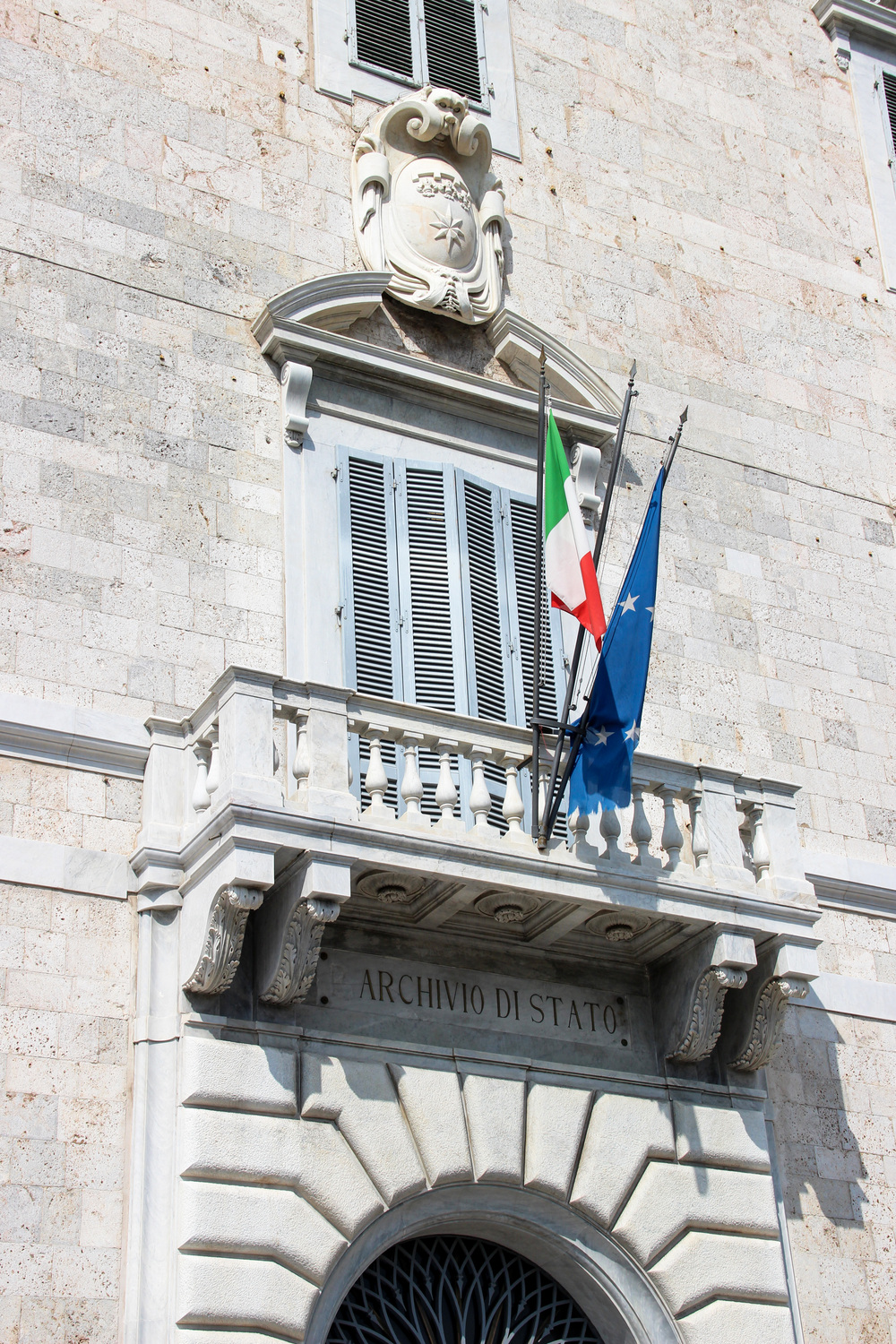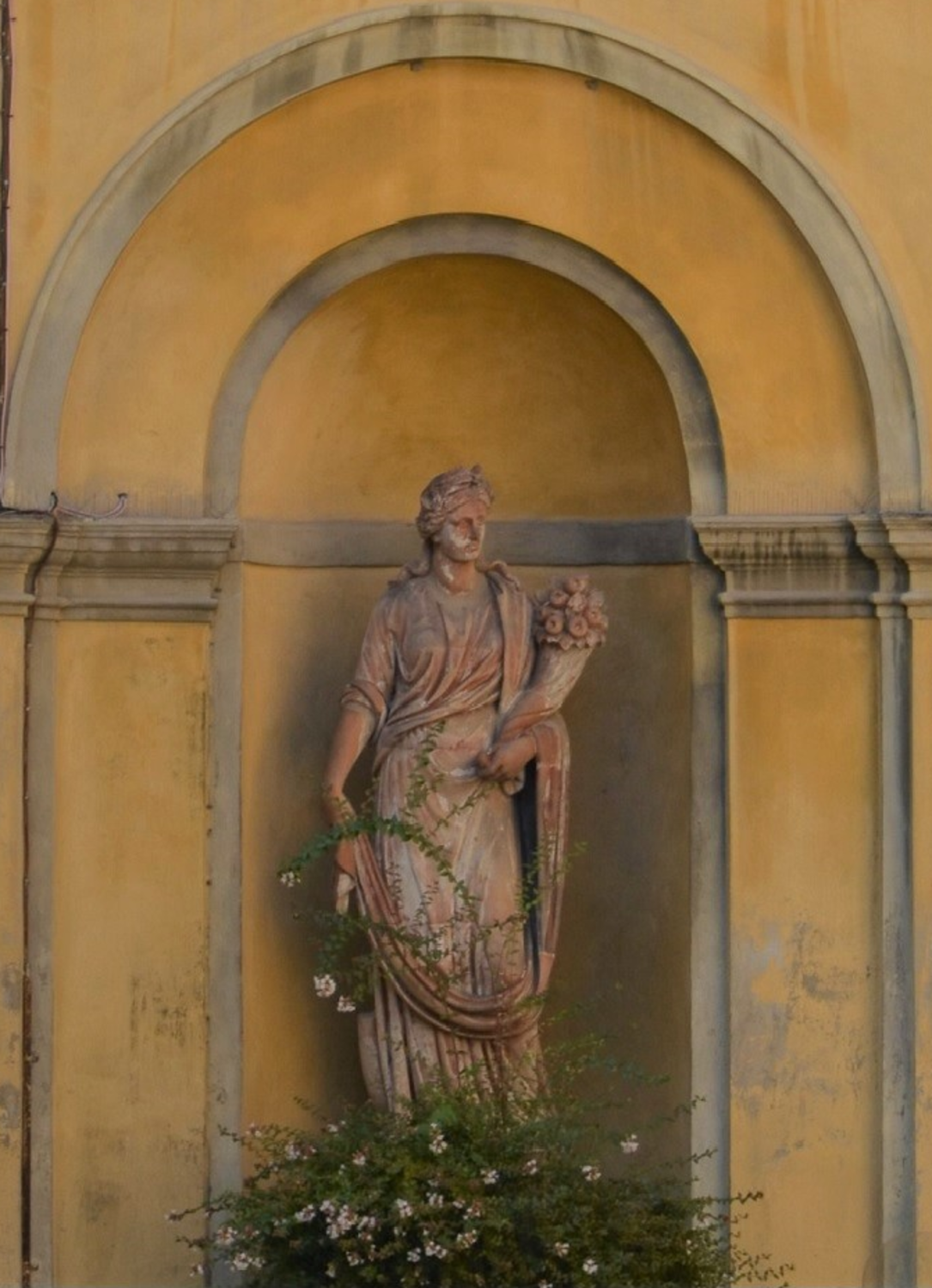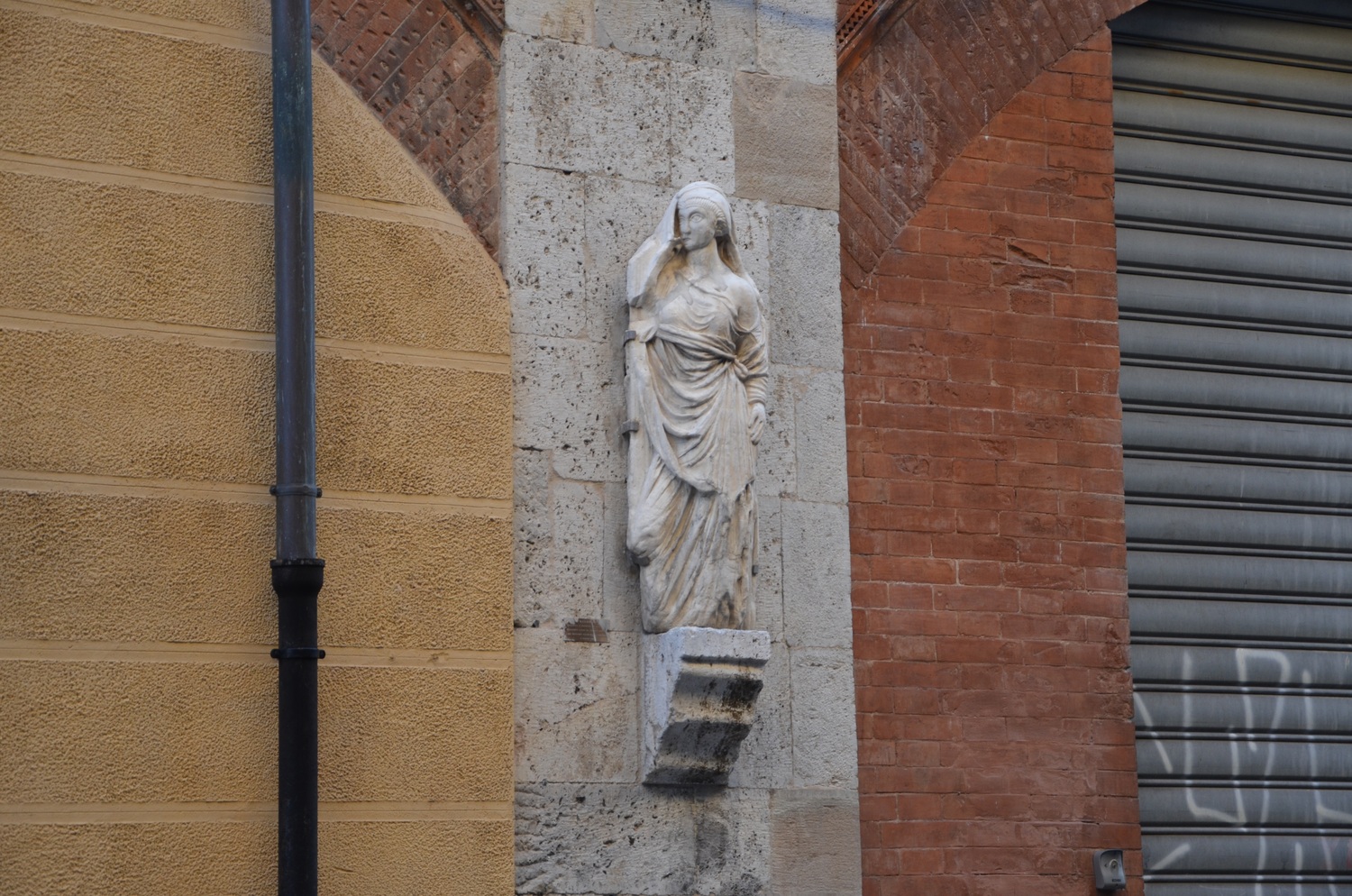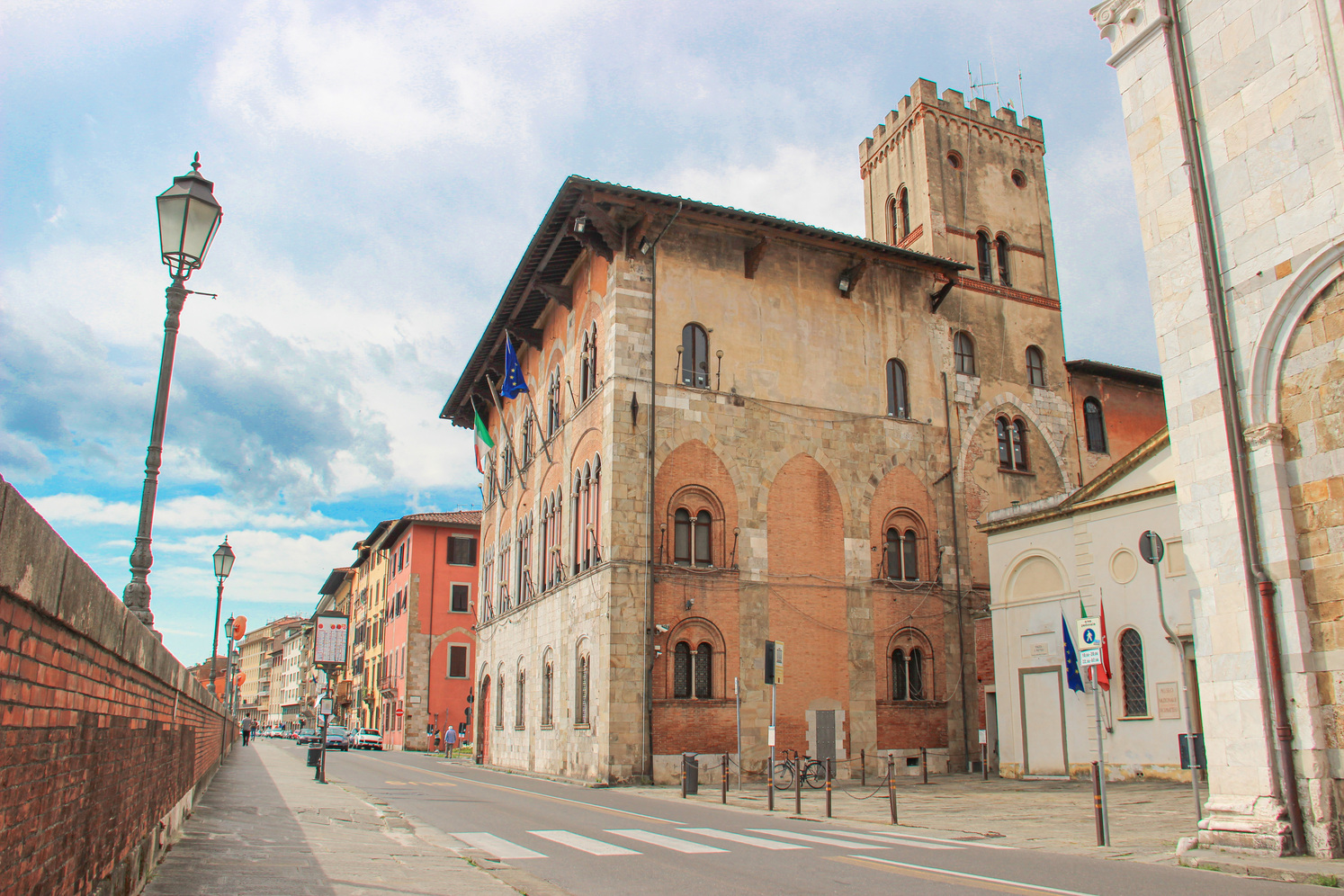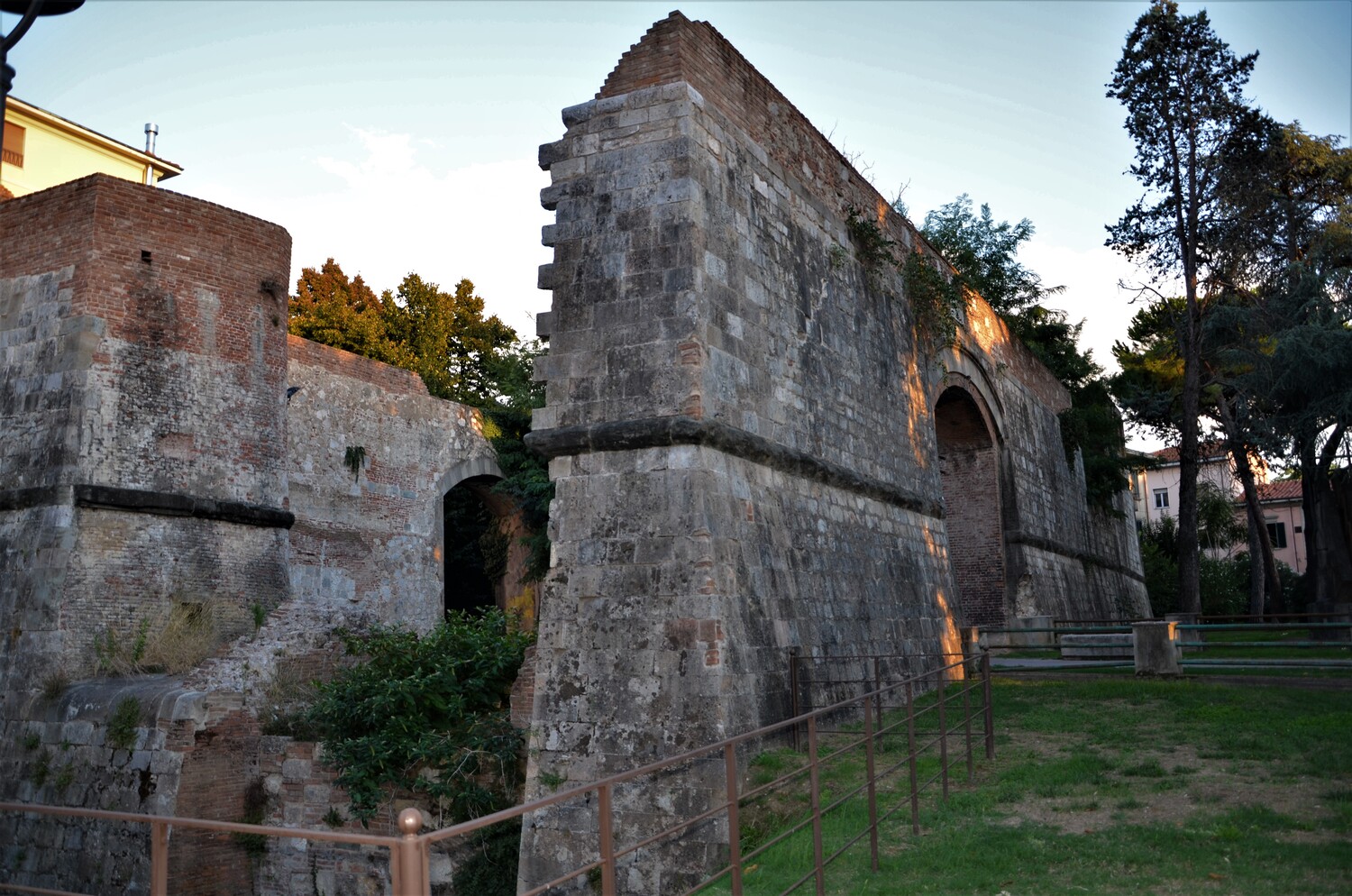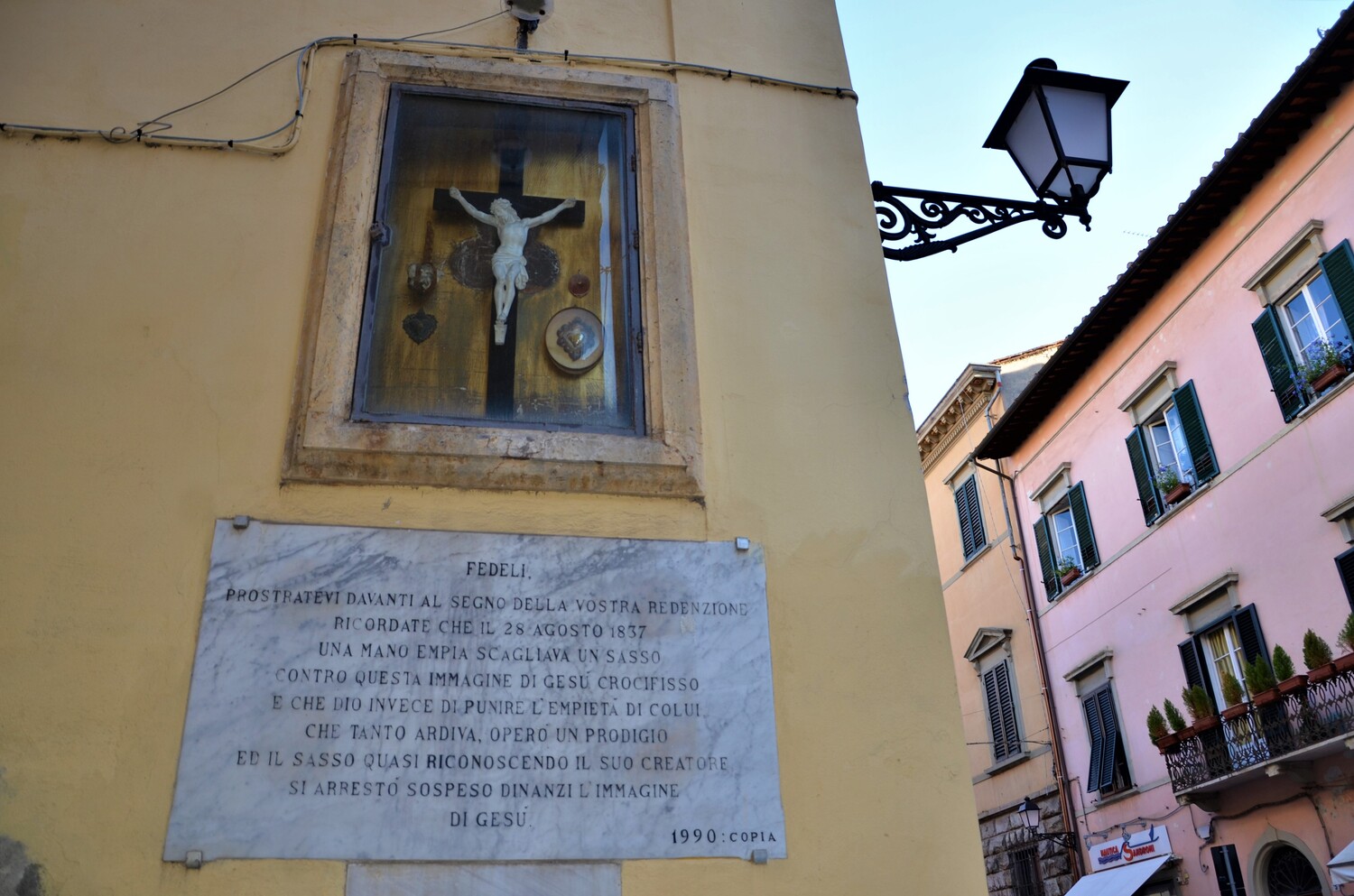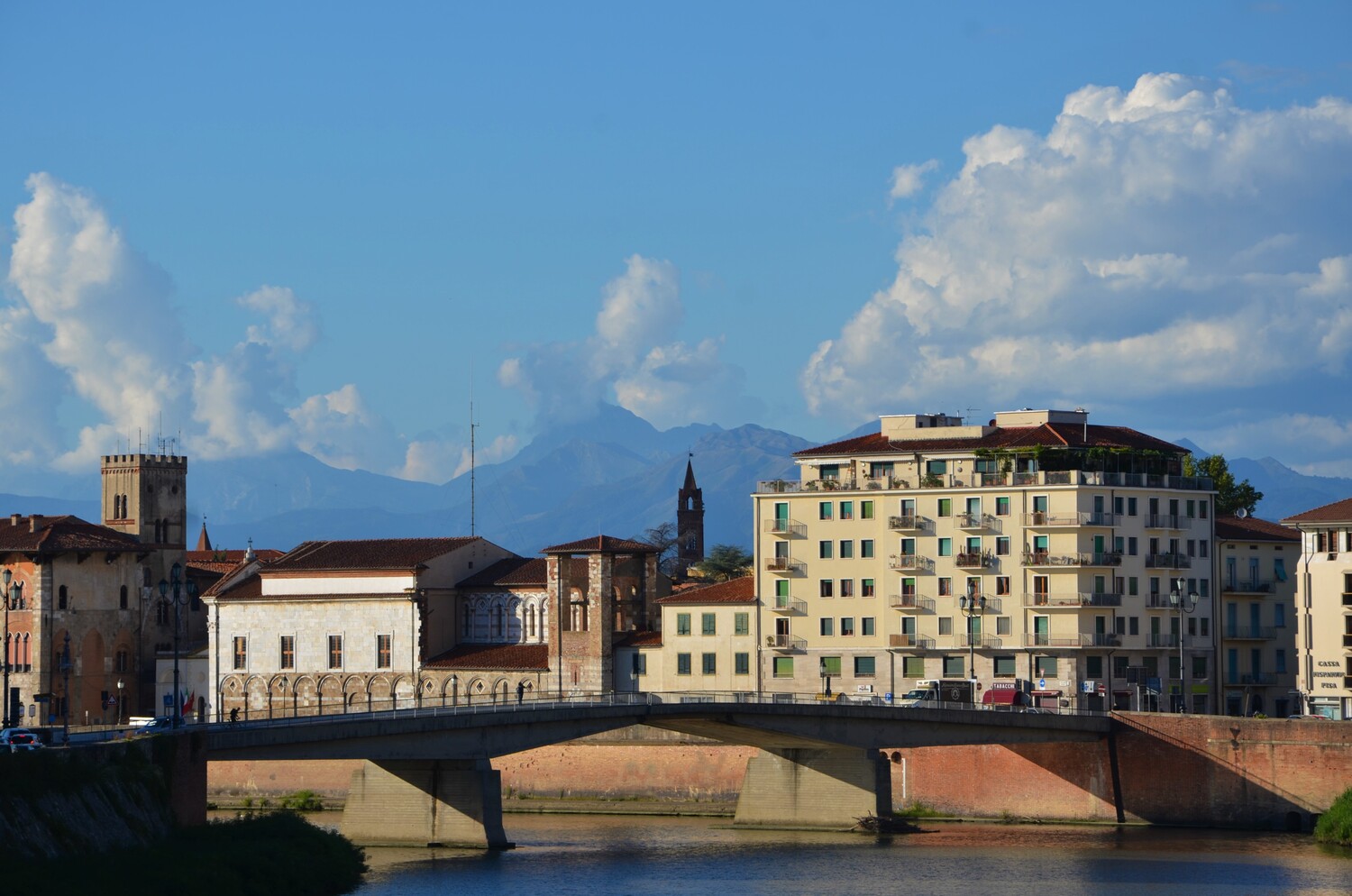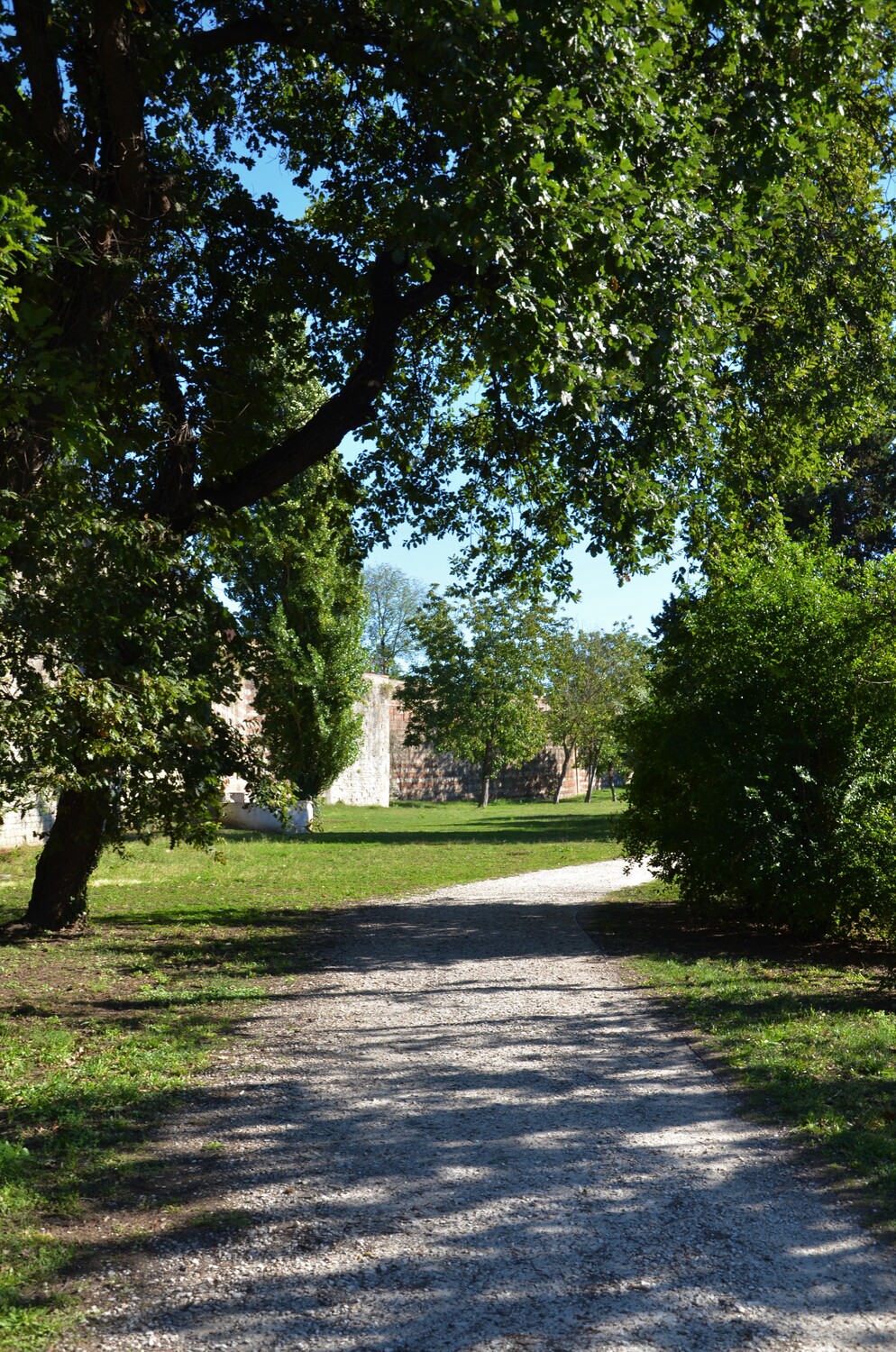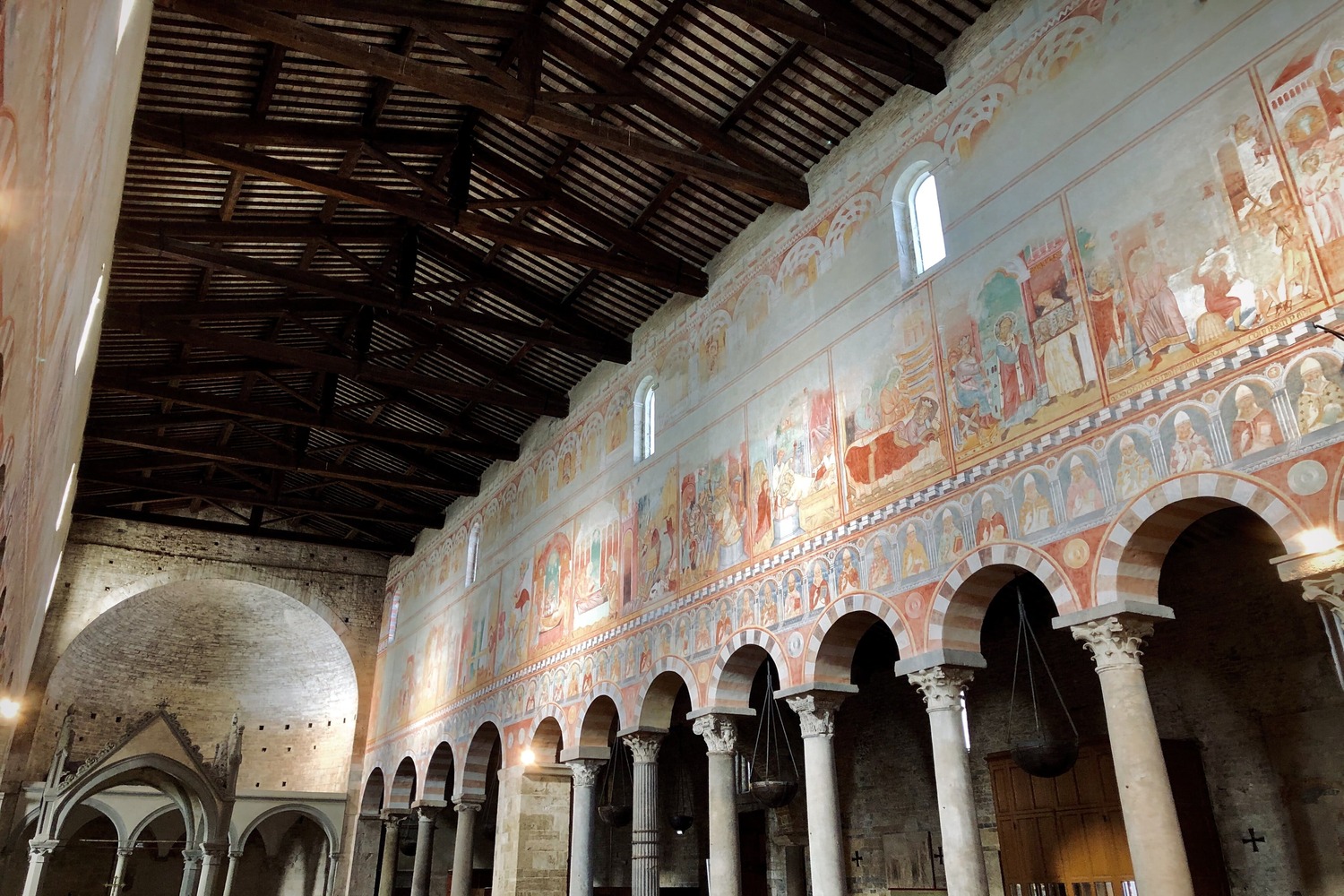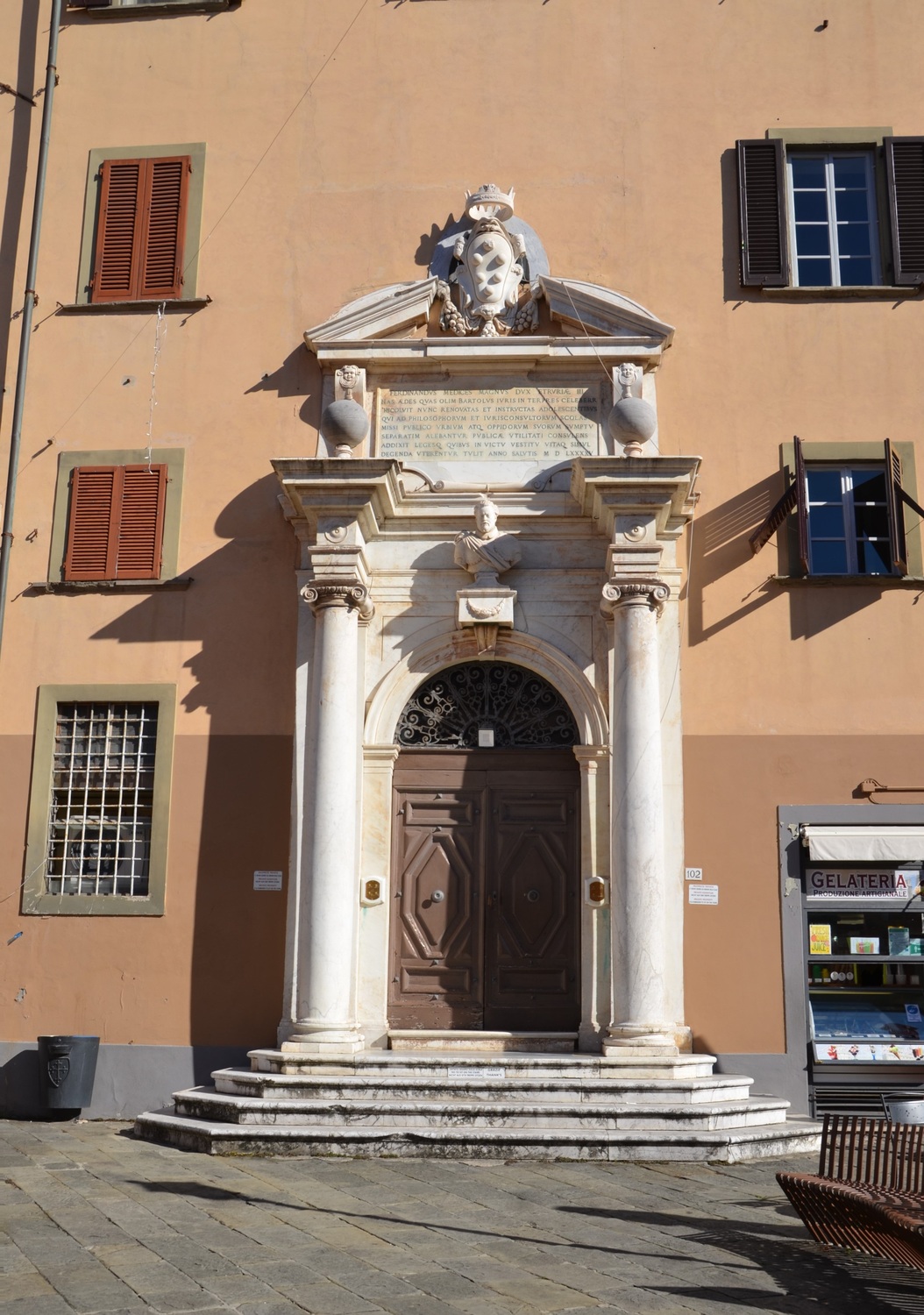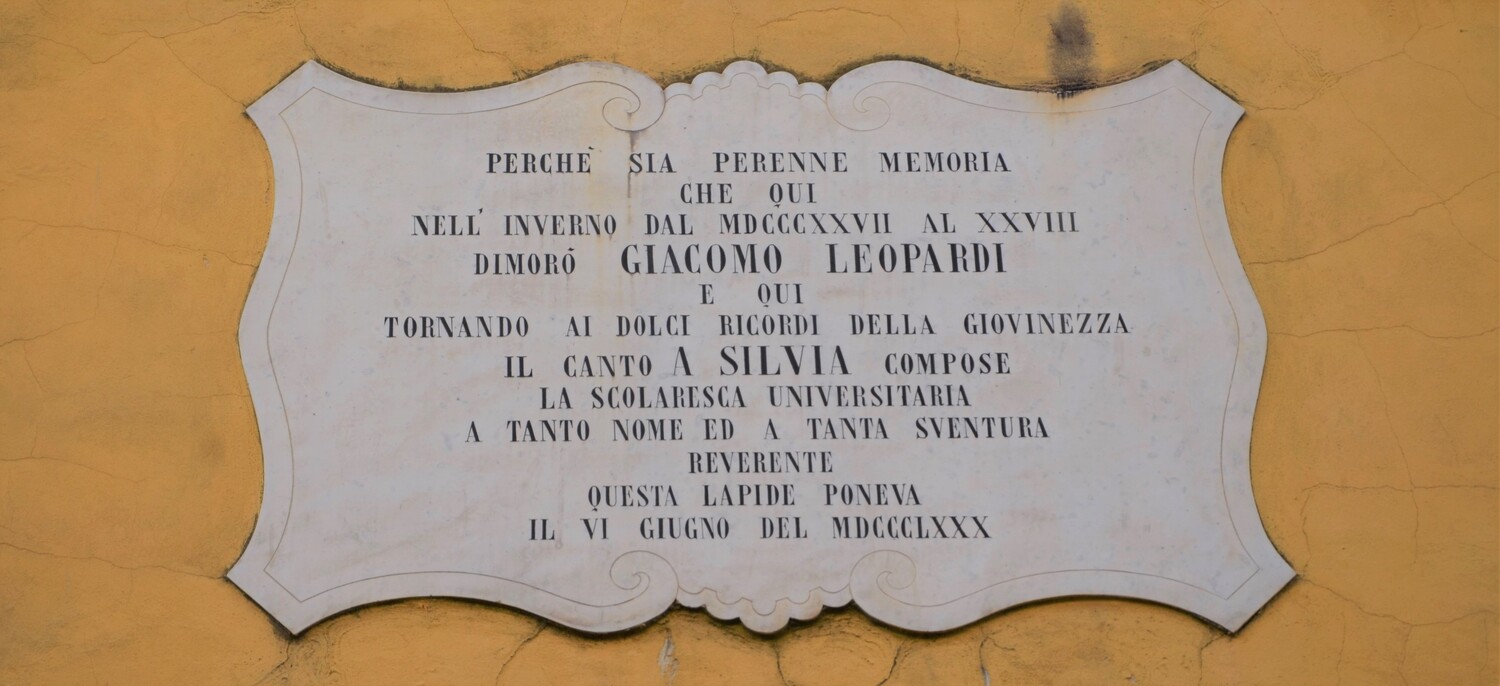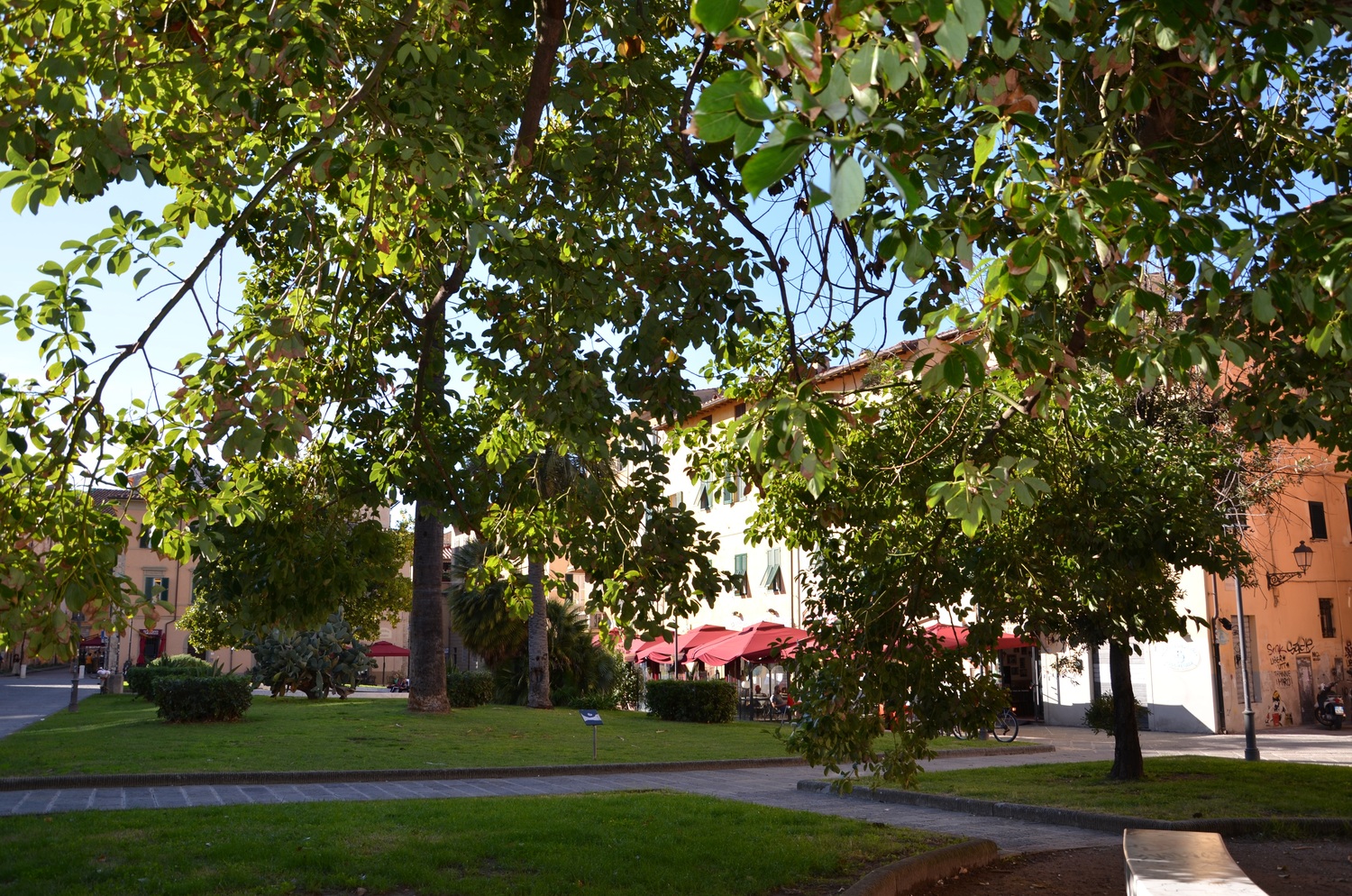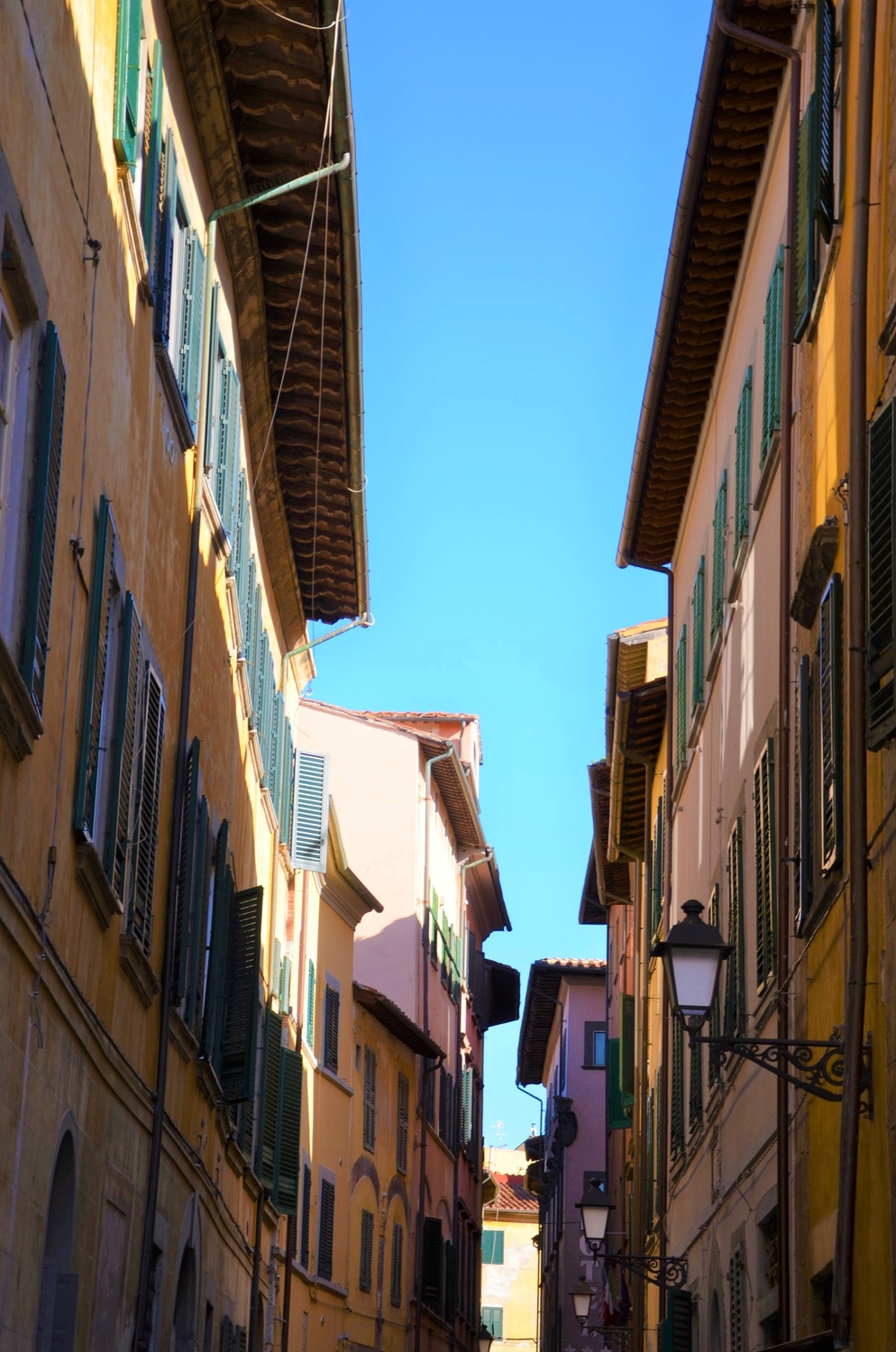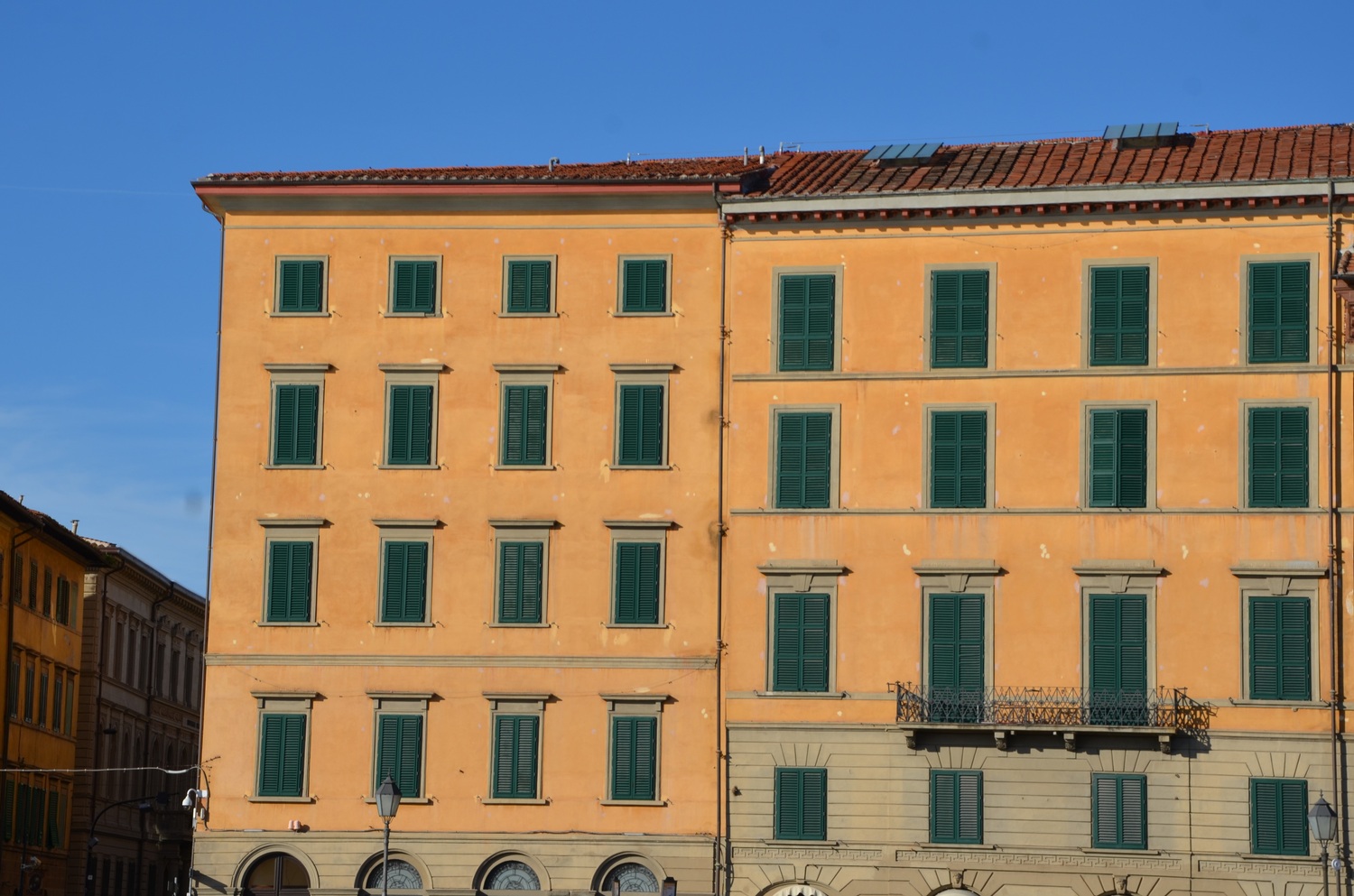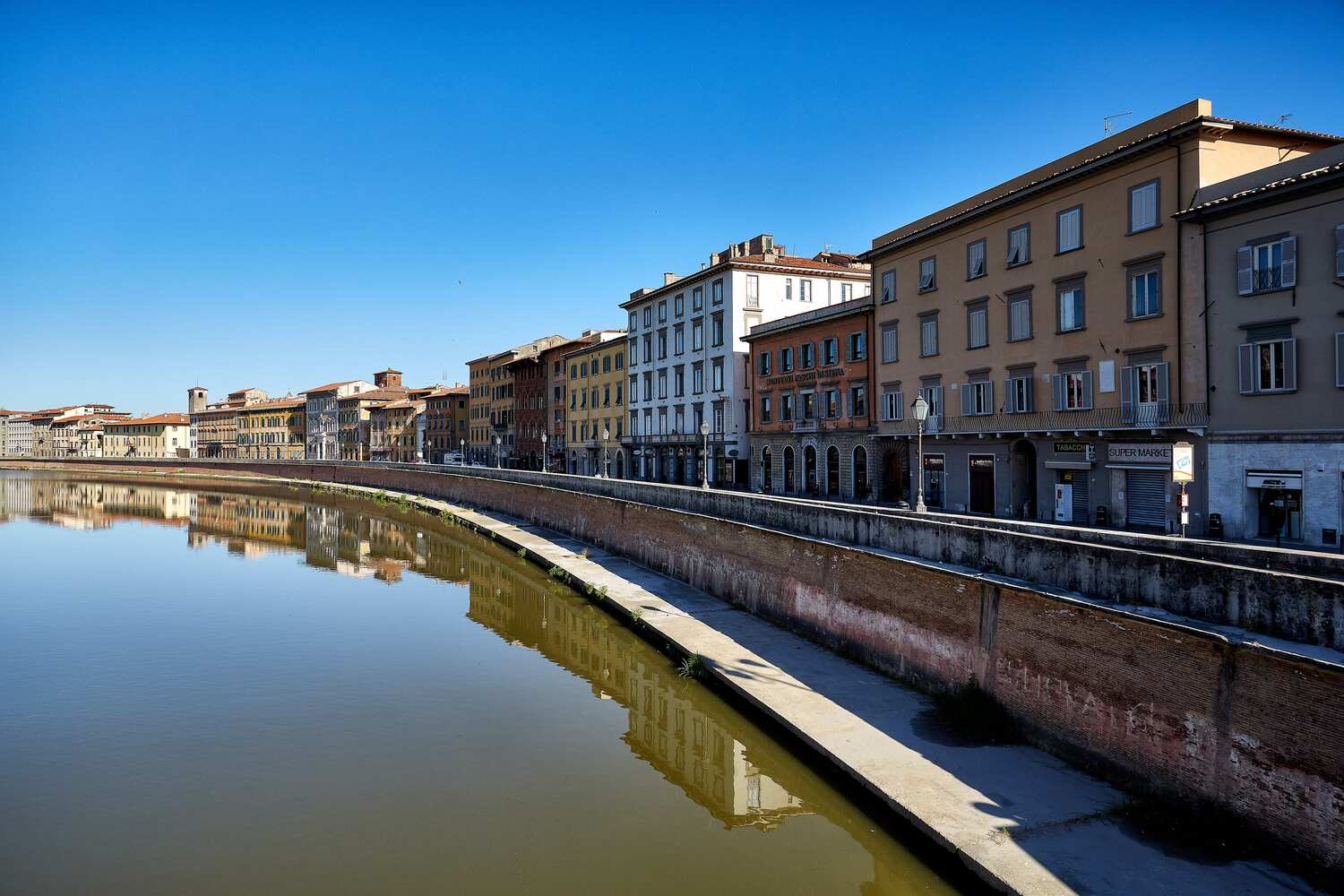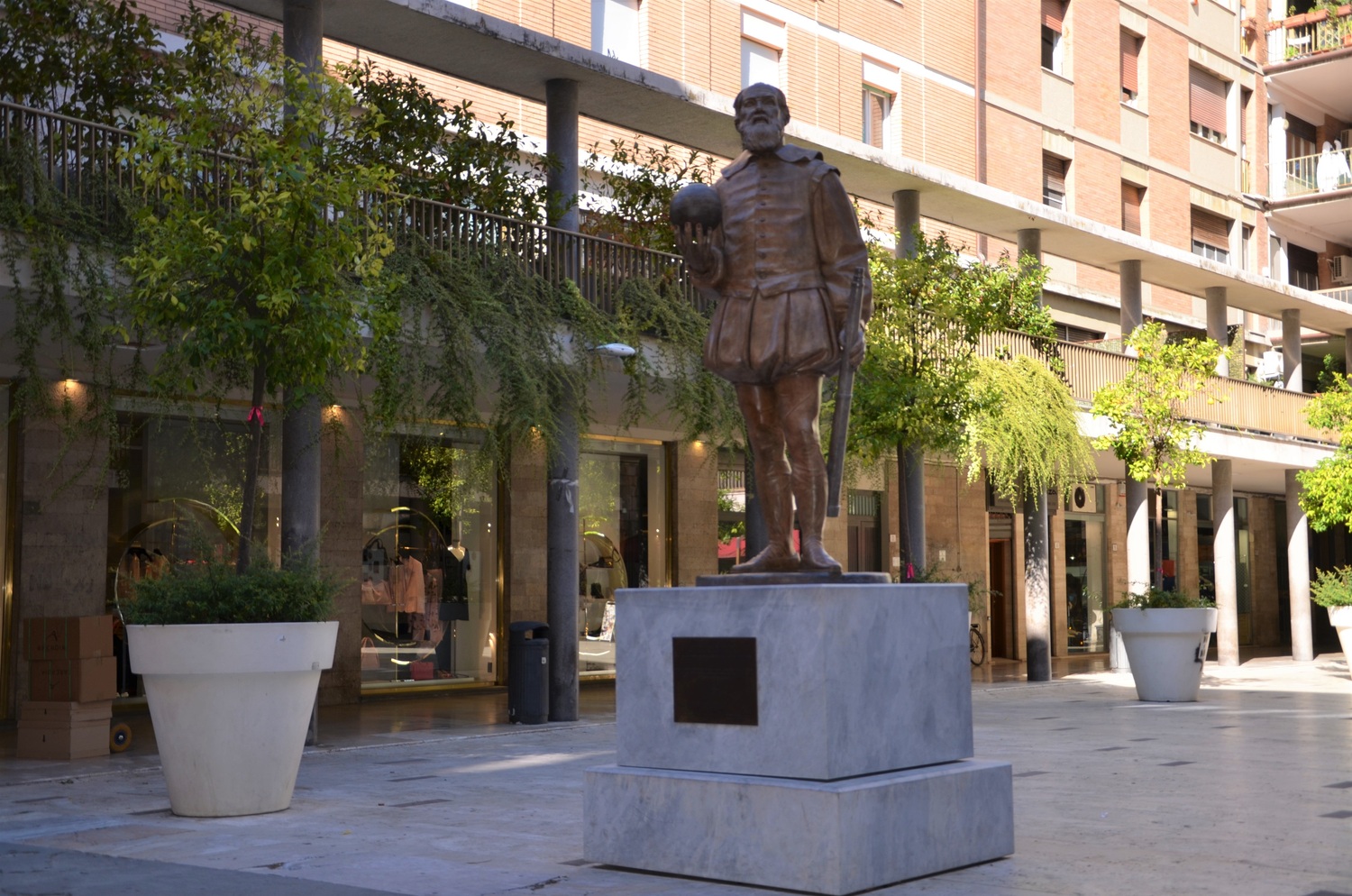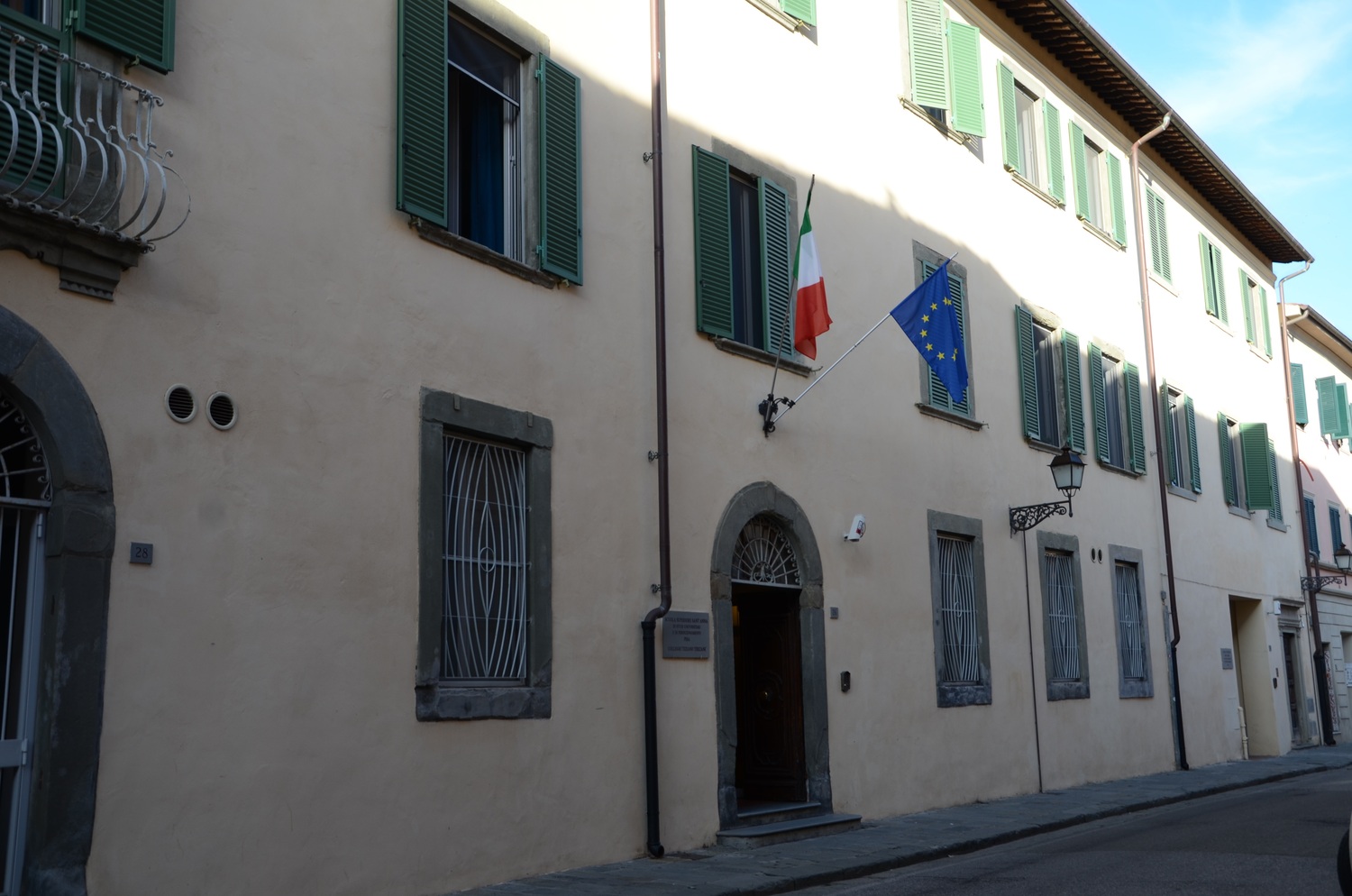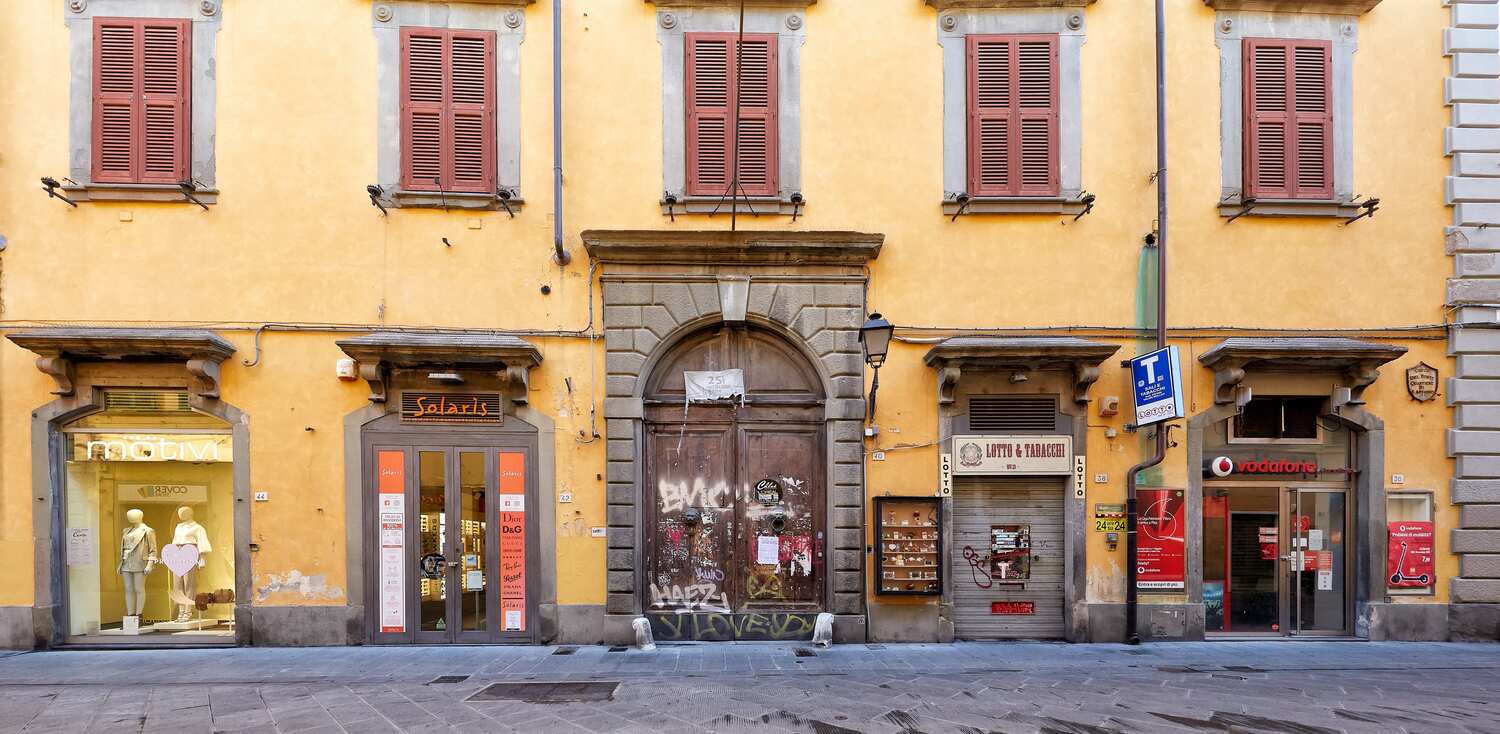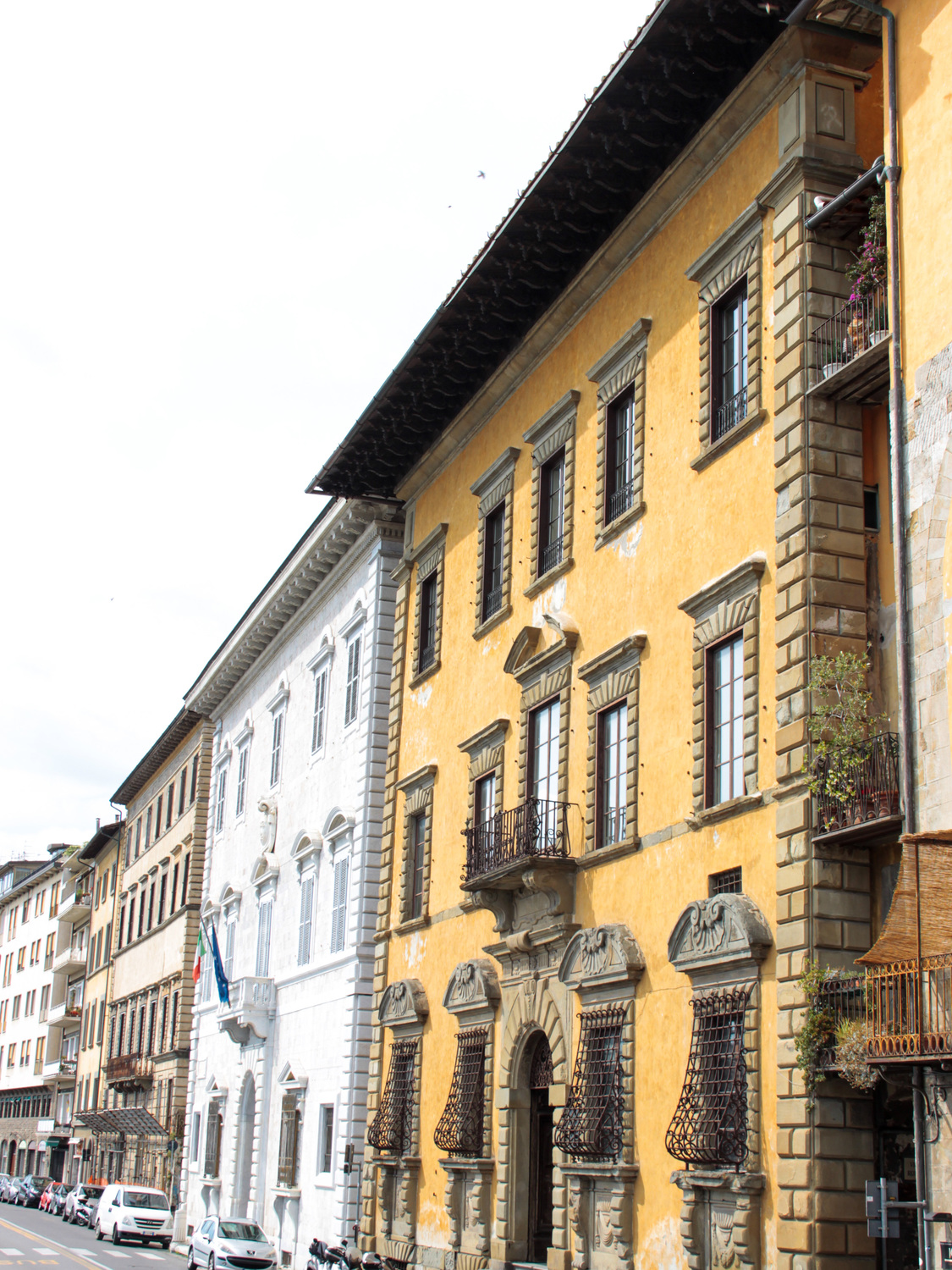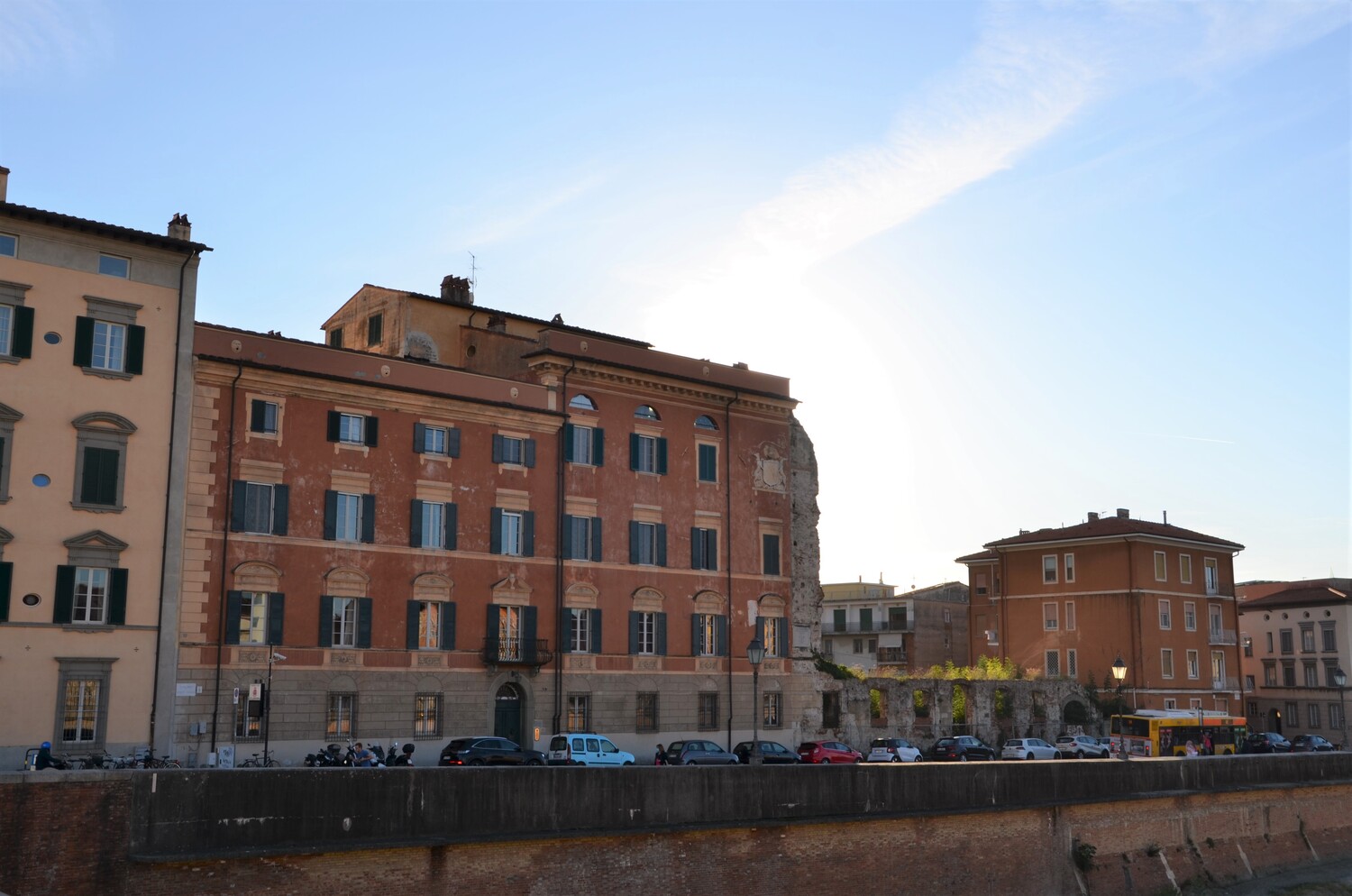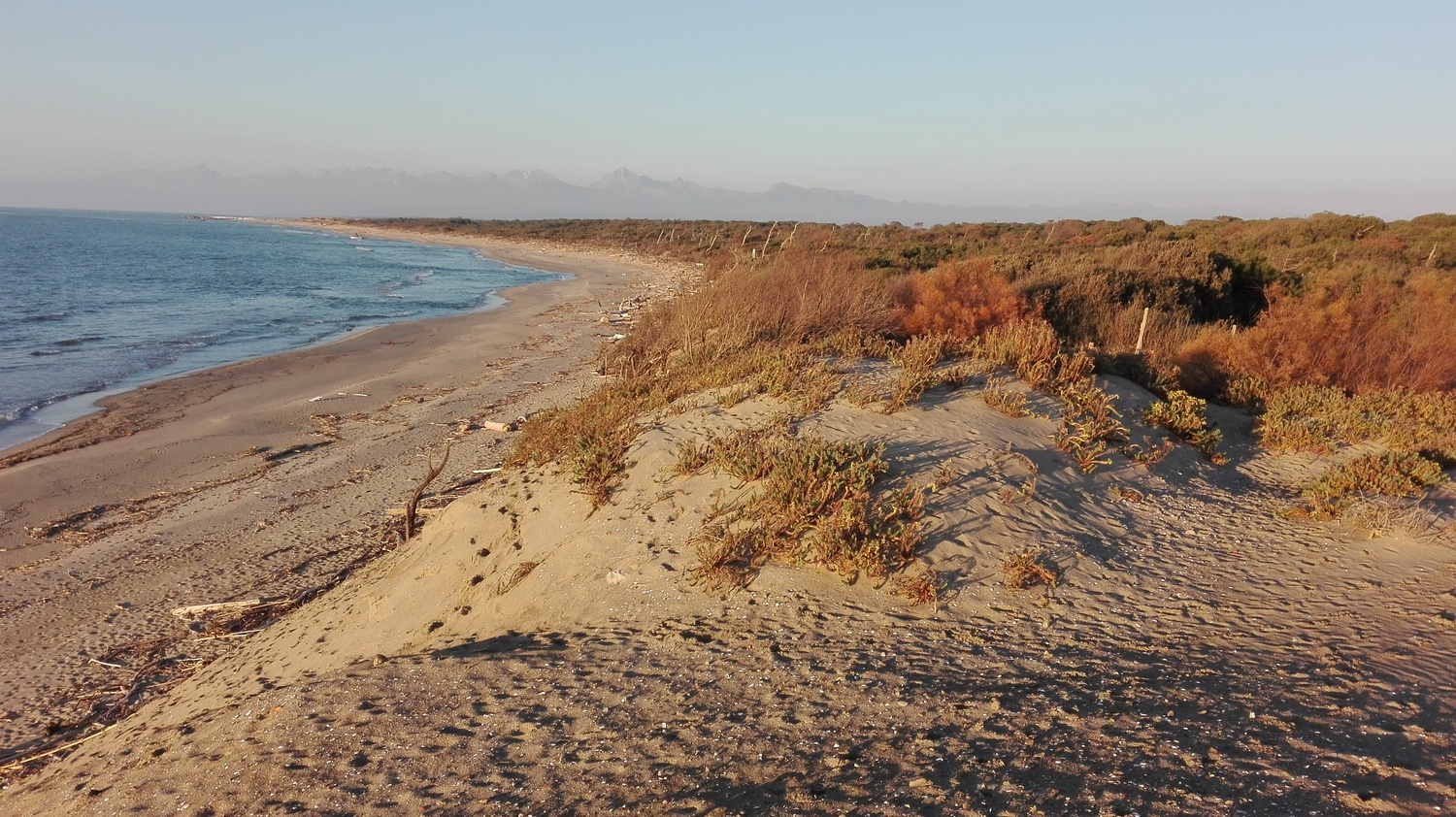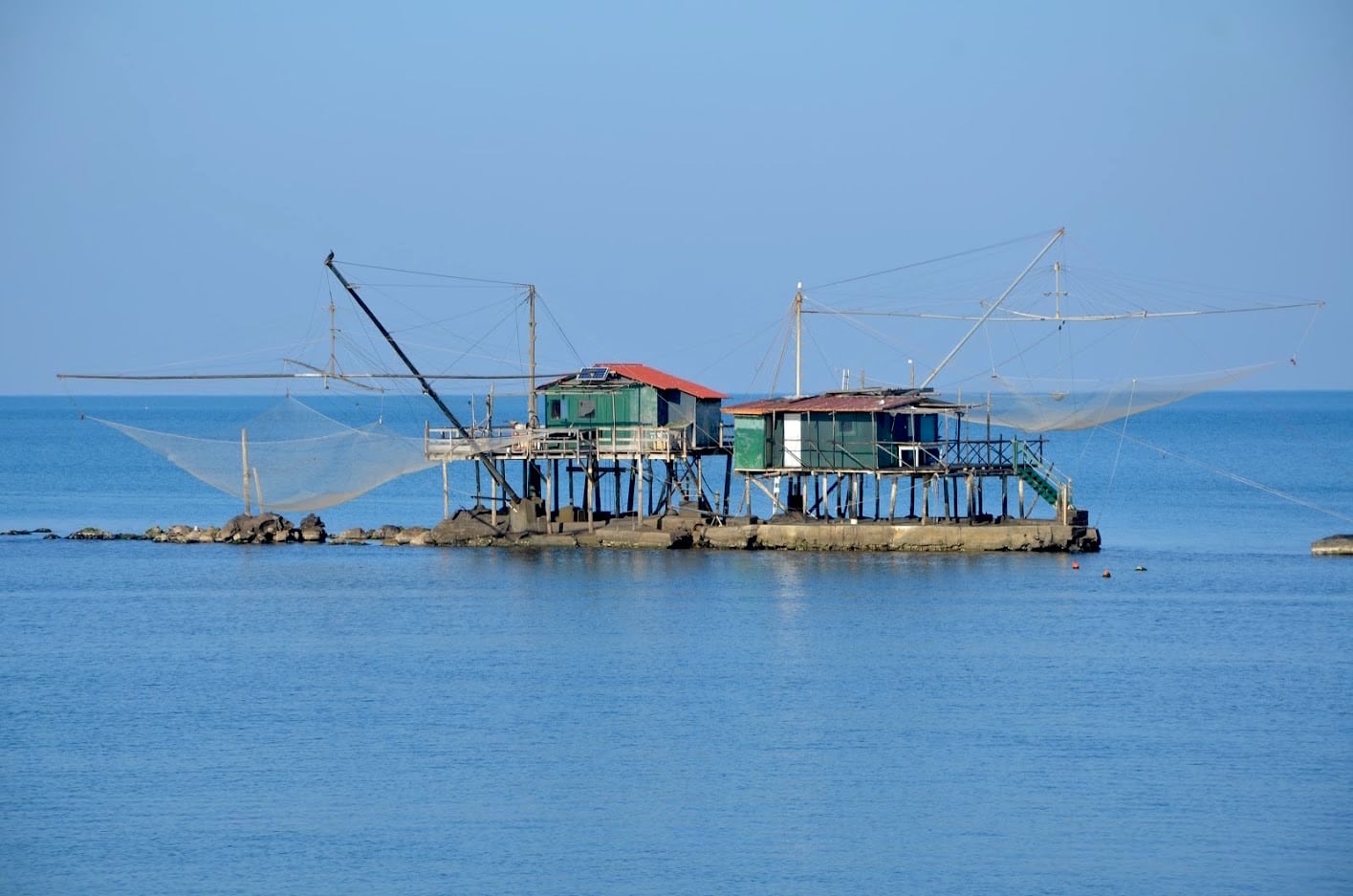- The frescoes: from the front door, clockwise, we can see works from artists belonging to the Giotto school with the Stories of San Ranieri by Andrea di Buonaiuto and Antonio Veneziano (1367-1377), continuing with Saints Efisio and Potito, saints of Sardinian origin also venerated in Pisa, painted by Spinello Aretino (1380-1385). Both works are unfortunately severely damaged. The same goes for the Stories of Job, by Taddeo Gaddi (1340-1350) of which we can glimpse incredible architectures under a brilliant sky. Aurelio Lomi frescoed the western wing, with the Stories of Esther (16th century) almost completely disappeared. The Cosmography by Piero di Puccio from Orvieto (1389-1391), which represents the vision of the world before the discovery of America, opens the northern wing, which continues with the episodes of the Old Testament, first frescoed by Piero di Puccio and then by Benozzo Gozzoli (1468). The east wall shows us the Ascension, the Resurrection and the episode of St. Thomas, by Bonamico di Buffalmacco (1340) and a Crucifixion, the oldest fresco in the building, made around the thirties of the fourteenth century by Francesco Traini, the only Pisan artist. Finally, the cycle Triumph of Death, Universal Judgment, Hell and Thebaids by Bonamico di Buffalmacco (1336), initially attributed to Giotto. The gaze is captured by the figures of death, who with an ax goes to strike two unsuspecting kids in an orange grove, the violent gesture of the judgment of Christ and above all the cruel gaze of Dante's Lucifer while eating a sinner. A kind of irony is perceivable in the temptation of the anchorites, in the Thebaids, in the scene in which an elegant girl tries to enter a hermit's cave hiding her true nature, revealed under her wide skirt by the devil's claws.
- The sarcophagi: they were part of the external decoration of the Cathedral, the epigraphs on its walls are still visible, and were reused for the burials of citizens in medieval times. Many were lost during the fire and the collapse of the roof in '44, but it is still possible to imagine the amazement of travellers in front of this richness. Each of them has its own style and peculiarity, like the sarcophagus of the Wild boar hunting (4th century), or the Good Shepherd and the Muses (II century) in the southern wing. Some of them were of great inspiration for the creation of medieval art masterpieces, such as the sarcophagus of Phaedra and Hippolytus (II century), burial place of Beatrice di Canossa and the Sarcophagus of the Muses (III century), which Nicola Pisano certainly had in mind during the construction of the Pulpit of the Baptistery. The stylistic continuum by masters such as Biduino in the XII century and Andrea di Francesco Guardi in 1443 is quite sting: the first built the sarcophagus of Giratto (in front of the Triumph of Death), with strigil motifs, showing one of the first inscriptions in the Italian vernacular 'HO(MO) KE VAI P(ER) VIA: PREGA D(EO) DELL'ANIMA MIA: Sì COME TU SE' EGO FUI: SICUS EGO SU(M) TU DEI ESSERE'; the second is the sarcophagus of Abbot Benedetto, with festoons held up by heroes and lion masks, also very similar to the classic model. Both are located in the southern wing.
- The stylish tombs: in both wings, east and west, we find a splendid gallery of statues and tombs, some made by artists of great value, as in the case of the tomb of Giovanni Boncompagni by Bartolomeo Ammannati (1574), or the Inconsolable by Lorenzo Bartolini (1841), as well as busts and reliefs by Giovanni Dupré, Bertel Thorvaldsen, and Tribolo (first student of Michelangelo).
- The chains of Porto Pisano: In medieval times they closed the entrance to Porto Pisano (now Livorno), but were taken by the Genoese after the war of Meloria, in 1284, and later donated to Florence. It was thanks to the unification of Italy that what remained of the chains was returned to the city of Pisa.
Campo Santo, piazza del Duomo
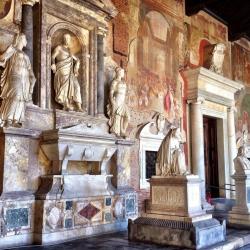
- Galileo Galilei (d.1642): the great genius was born in Pisa, but his death took place in Arcetri (Fi). His body rests in the Basilica of Santa Croce in Florence. The Campo Santo preserves the true lamp of Galileo Galilei, in the southern nave of the Aulla chapel: at the age of 17, Galileo was able to theorise that its oscillations remained constant, whatever the amplitude, thanks to the intervention of a force of the atmosphere, also constant. A first step towards Newtonian theories of gravity.
- Leonardo Pisano, called Fibonacci (d.1242): the burial place of the great Pisan mathematician is not known, but his statue was placed here in his memory, located in the eastern wing , near the sarcophagus of the Muses. It is a work by Giuseppe Paganucci from 1859, not really appreciated by critics: 'the movement of the person appeared to us petty, the arms, especially the left one, overly joined to the torso and somewhat unnatural'. We can still see the damage of the Second World War, when the statue was in front of the Logge dei Banchi, in Lungarno. Thanks to his studies on Arabic numerals and geometric practices, Fibonacci is considered the greatest mathematician of the Middle Ages.
- Andrea Vaccà Berlinghieri (1826 m): his sepulchre, created by Bertel Thorvaldsen, is located near the frescoes by Taddeo Gaddi, at the end of the southern wing. The name of the great scientist and surgeon is linked, together with that of his father Francesco, to the figure of Mary Shelley: their friendship was profitable for the young writer who wanted to attend their galvanism experiments, from which she took inspiration to modify some paragraphs of her masterpiece of Gothic literature Frankenstein.
- Francesco Algarotti (d.1764): Ovidii aemulo, Newtonii Discipulo, Fredericus Magnus. He was a great enlightenment figure, poet, philosopher and greatest populariser of Newton’s discoveries. His literary scientific masterpiece is Newtonianism for the ladies, from 1737, a small and brilliant scientific popularisation work. Its large sepulchre, the work of Mario Antonio Tesi, opens the western wing.
- Giacomo Barzellotti (d.1839): considered the father of forensic medicine in Italy. His most famous treatise, Forensic Medicine. According to the spirit of the civil and criminal laws in force in the governments of Italy (1818), revolutionised forensic medicine.
- Ottaviano Fabrizio Mossotti (d.1863): one of the most beautiful sepulchres in the Campo Santo, the work of Giovanni Dupré who made the allegory of Astronomy, with the gaze lost in the cosmos. Mossotti was an astronomer, a scholar of molecular interactions and dielectrics (theories that opened the doors to the study of electromagnetic waves).
- Antonio Pacinotti (d.1912): his tomb is located near the fresco Drunkenness of Noah, by Benozzo Gozzoli, northern wing. He was responsible for the first prototype of the modern dynamo.
- Carlo Matteucci (d.1868): considered the precursor of electrochemistry and electrophysiology and the first to experiment with muscle current. His experiments on numerous torpedo specimens are famous.
- Paolo Savi (d.1861): director of the Natural History Museum of Pisa, one of the oldest in the world, now housed in the Certosa di Pisa in Calci (PI). He was a great innovator in the field of taxidermy, or embalming of bodies, especially for the creation of dioramas that made it possible to see the shapes of animals, but also their behaviour and the environment in which they lived.

